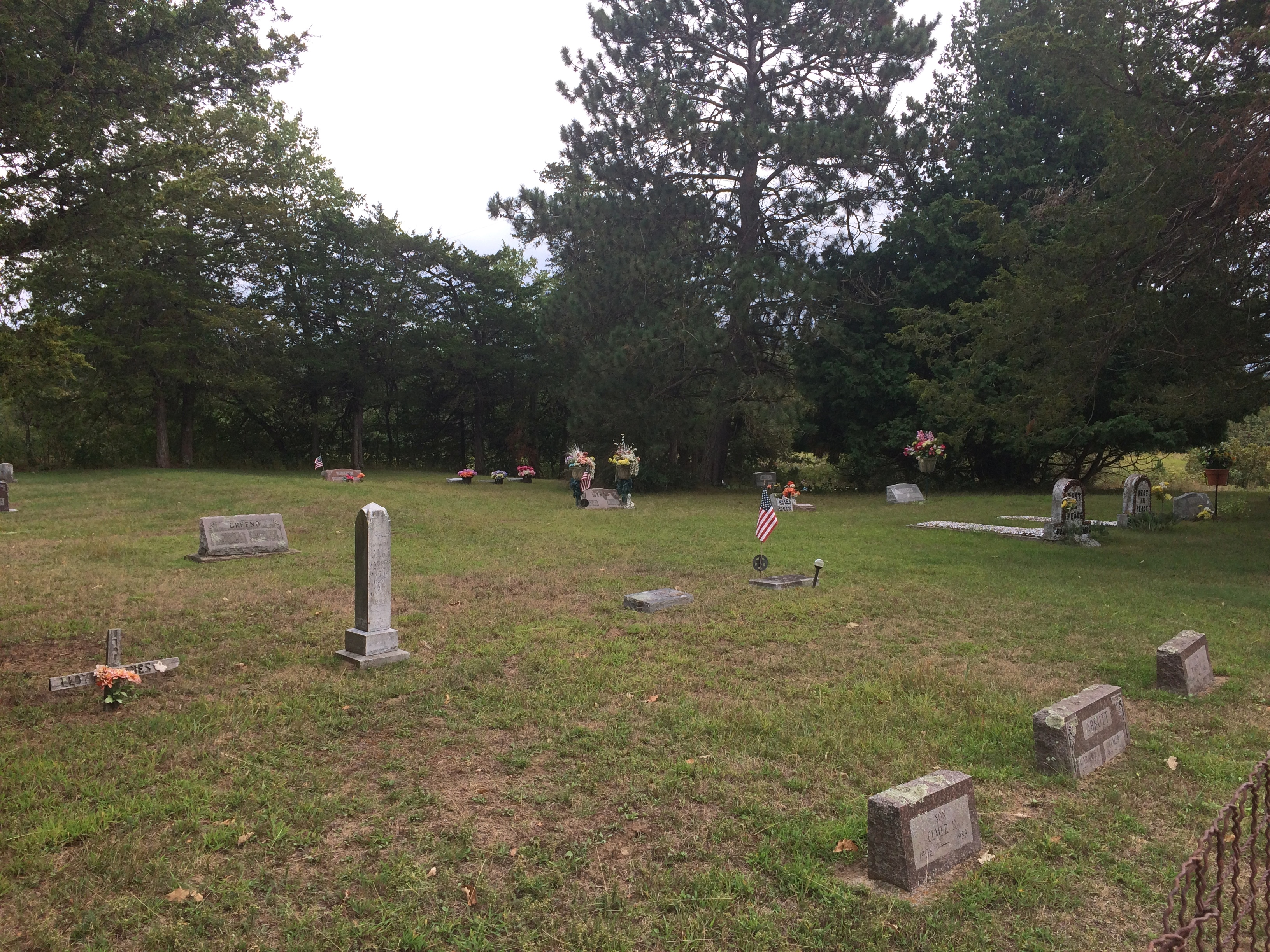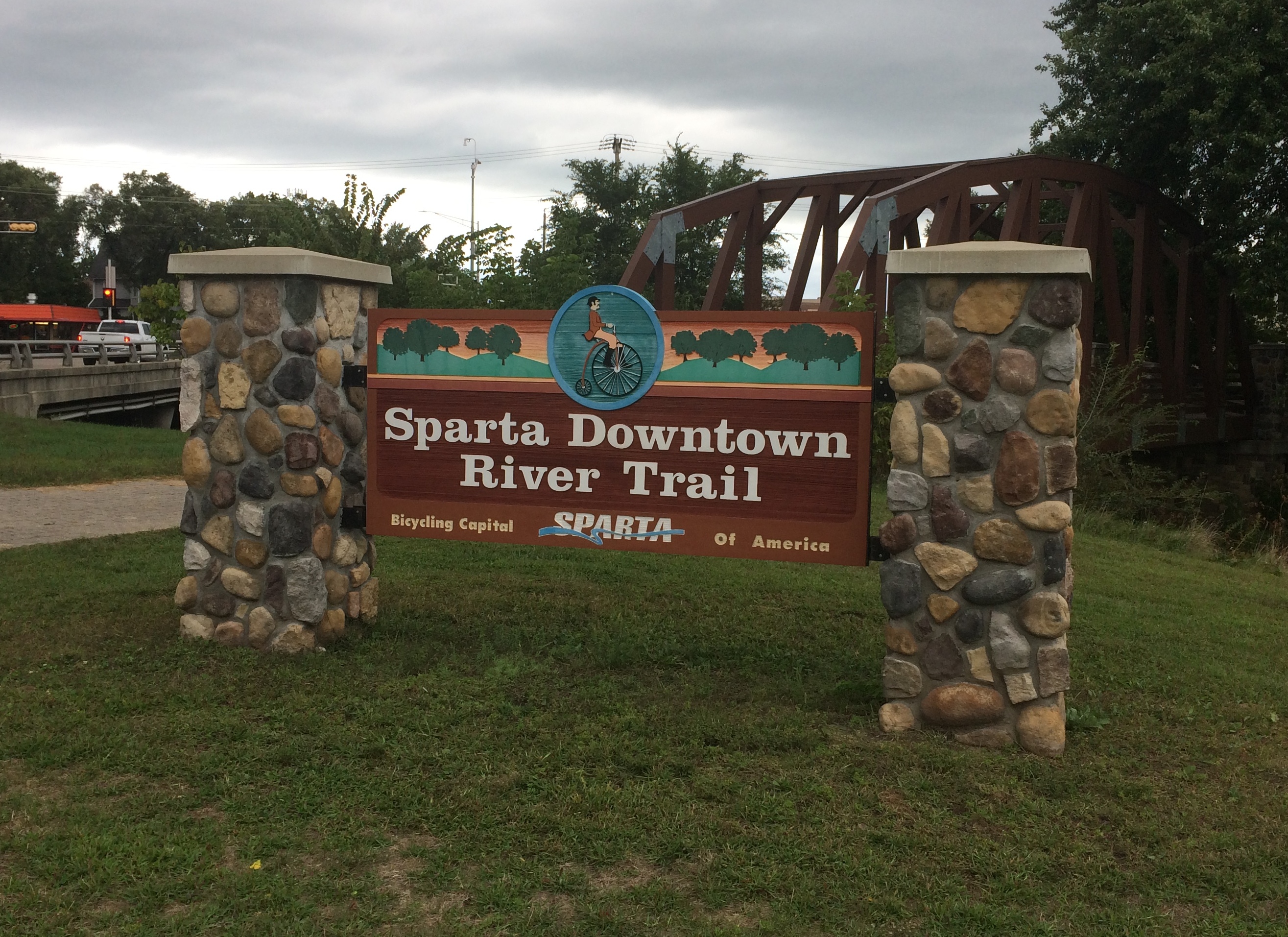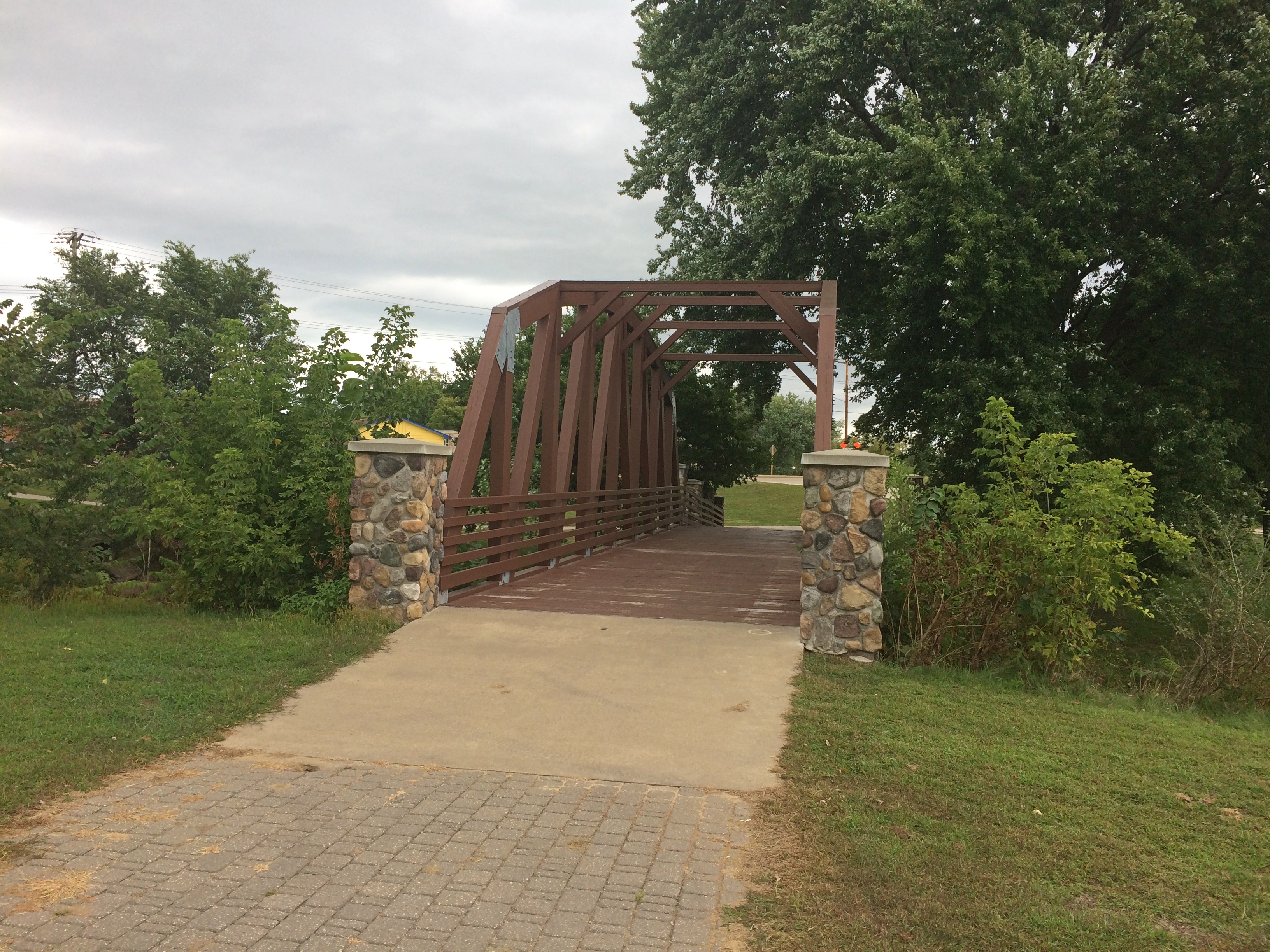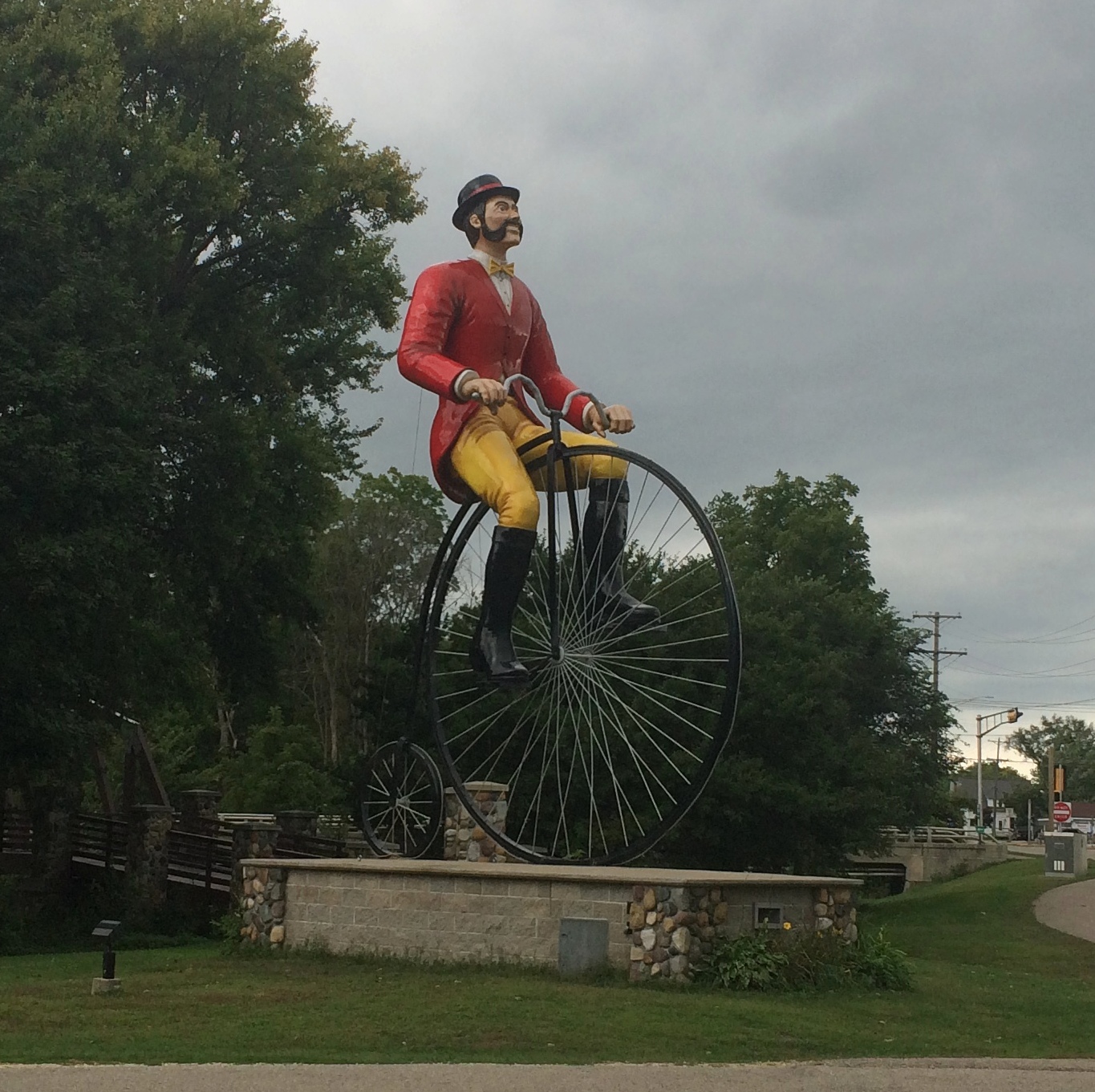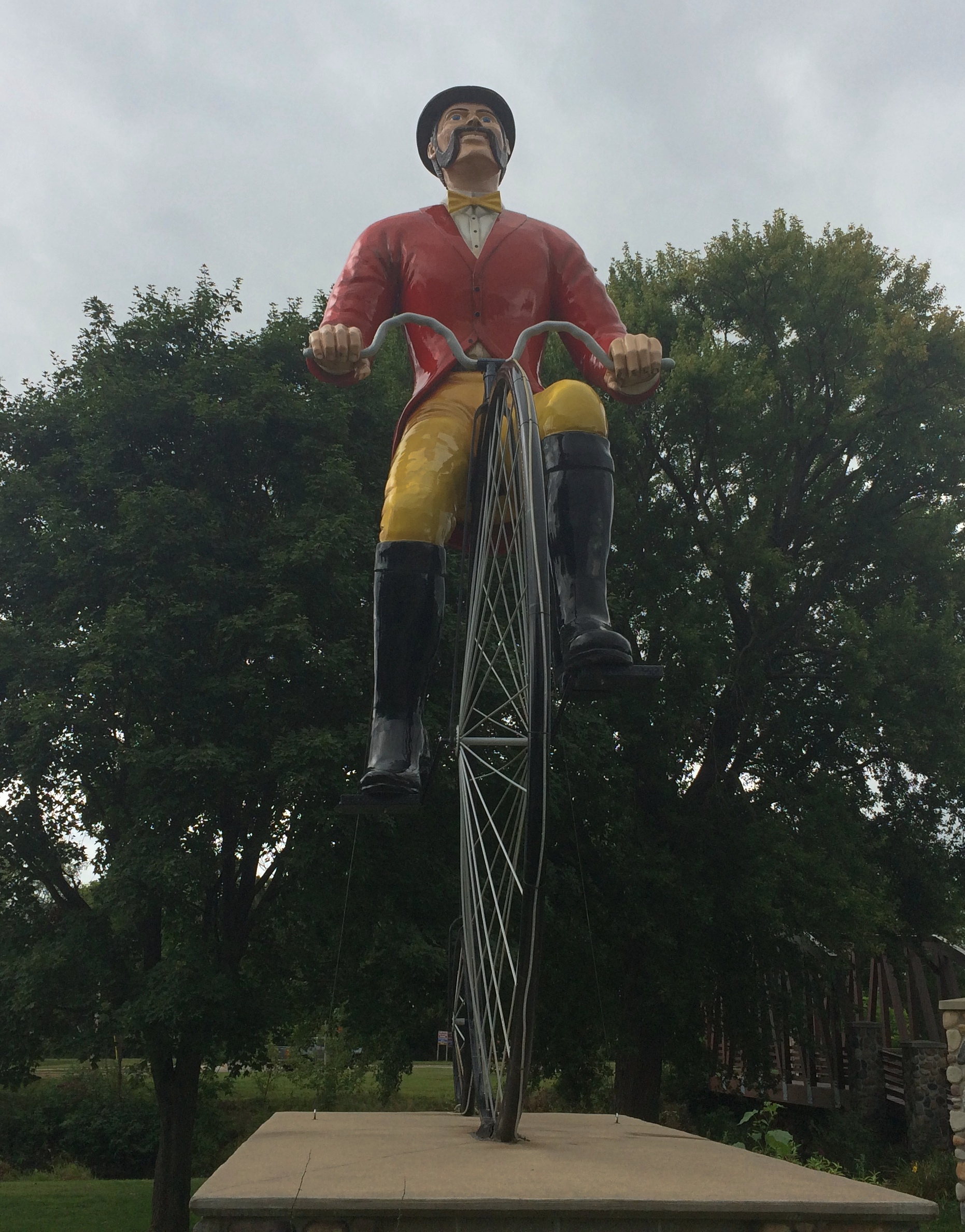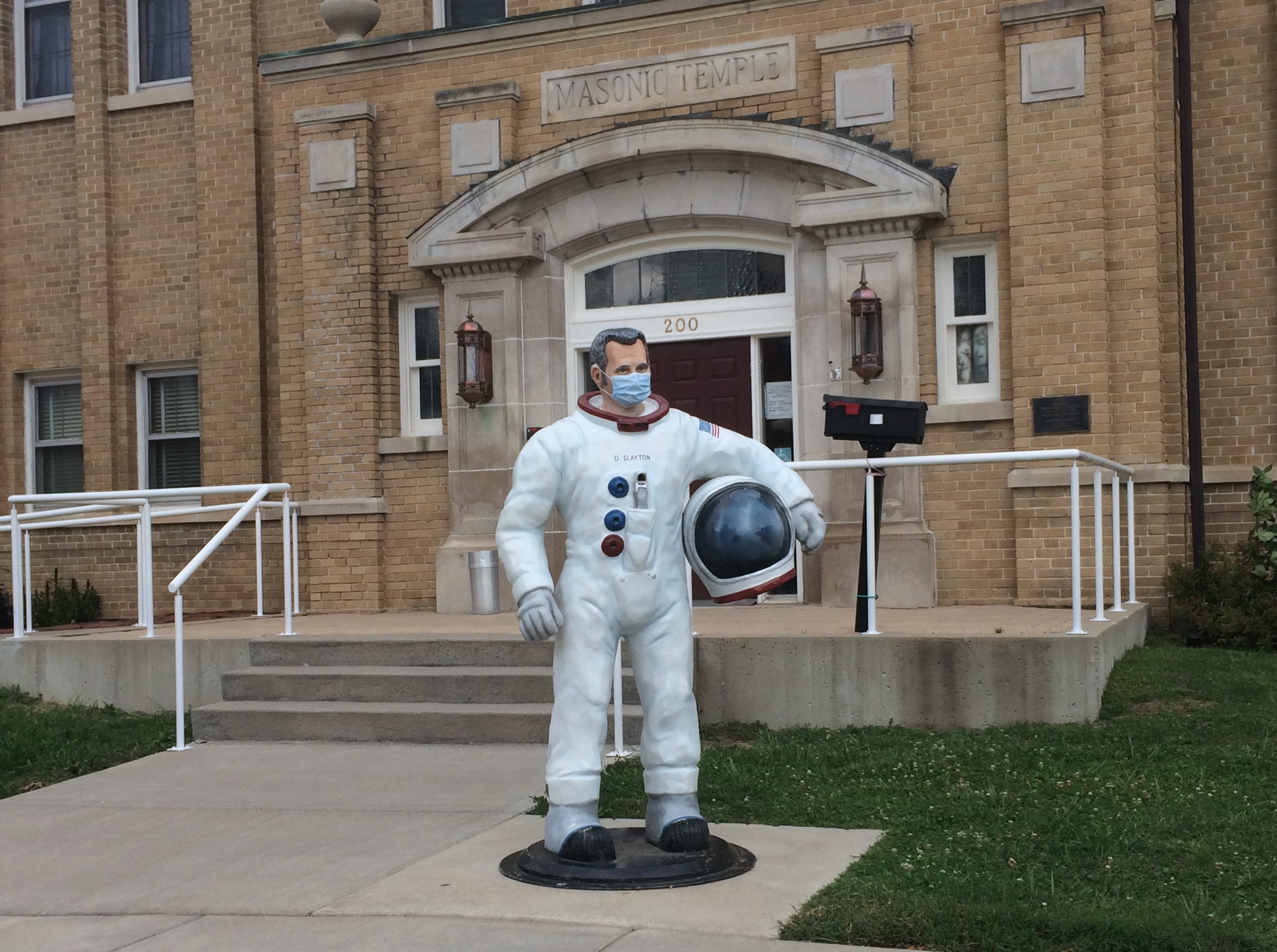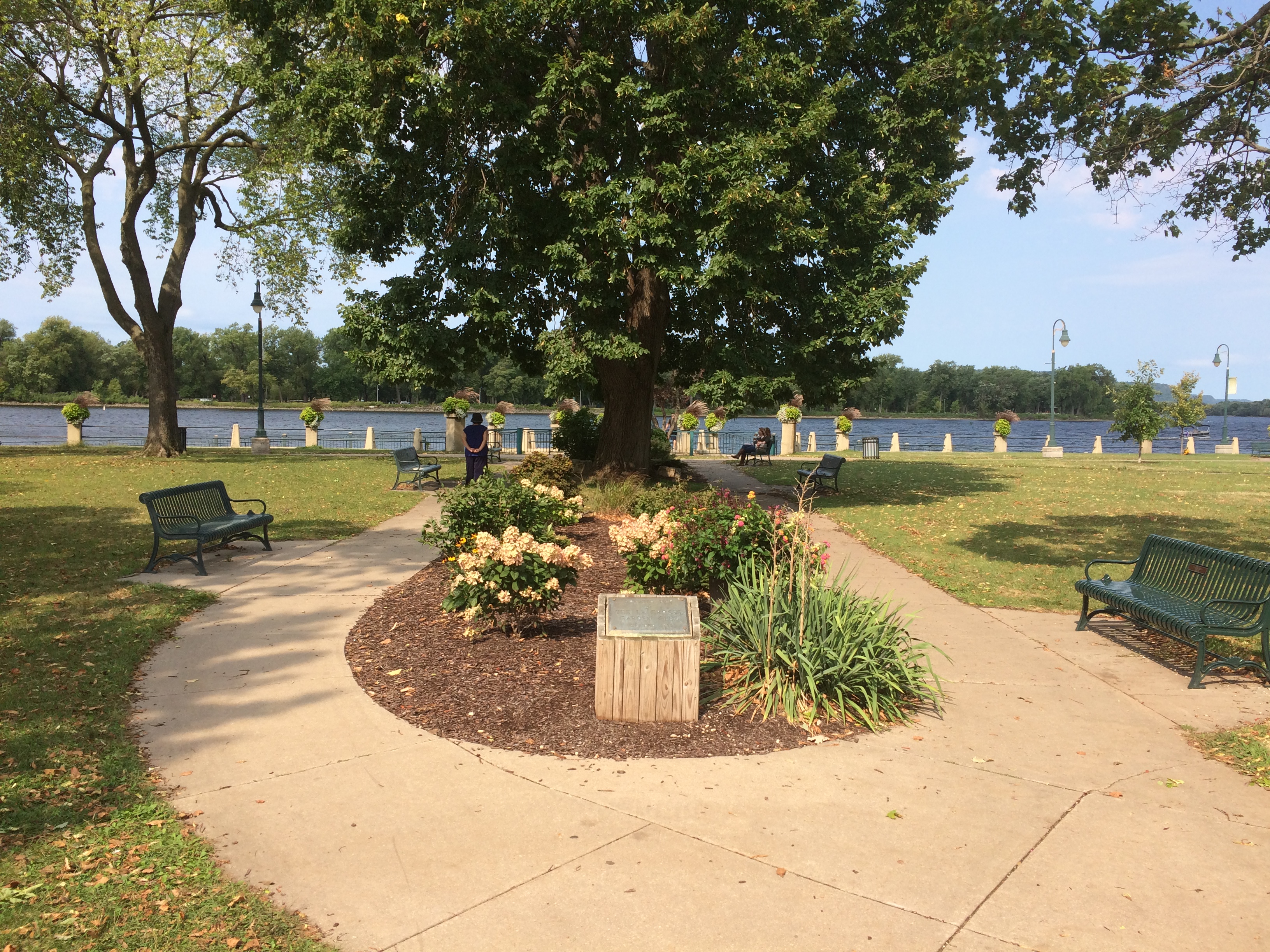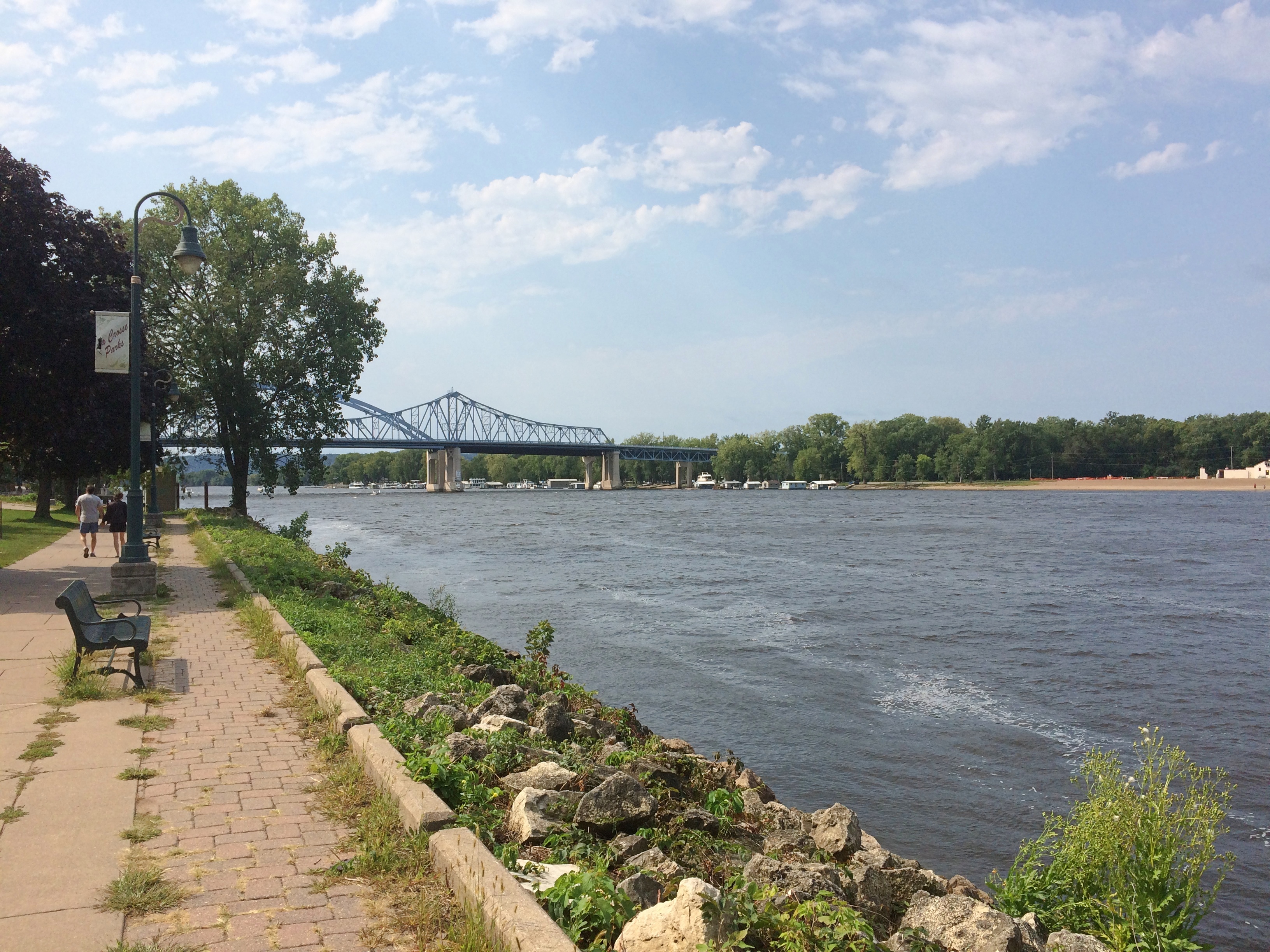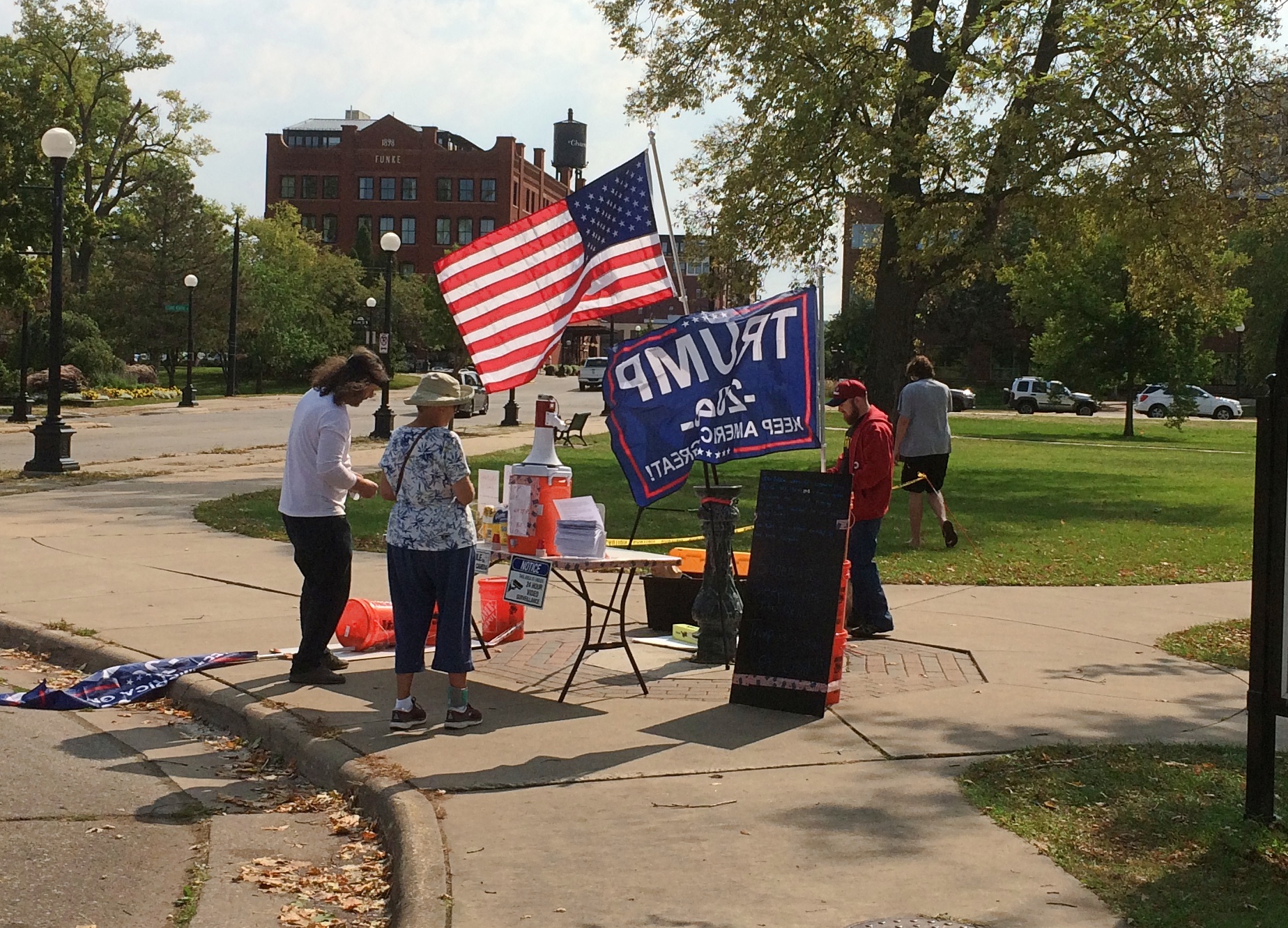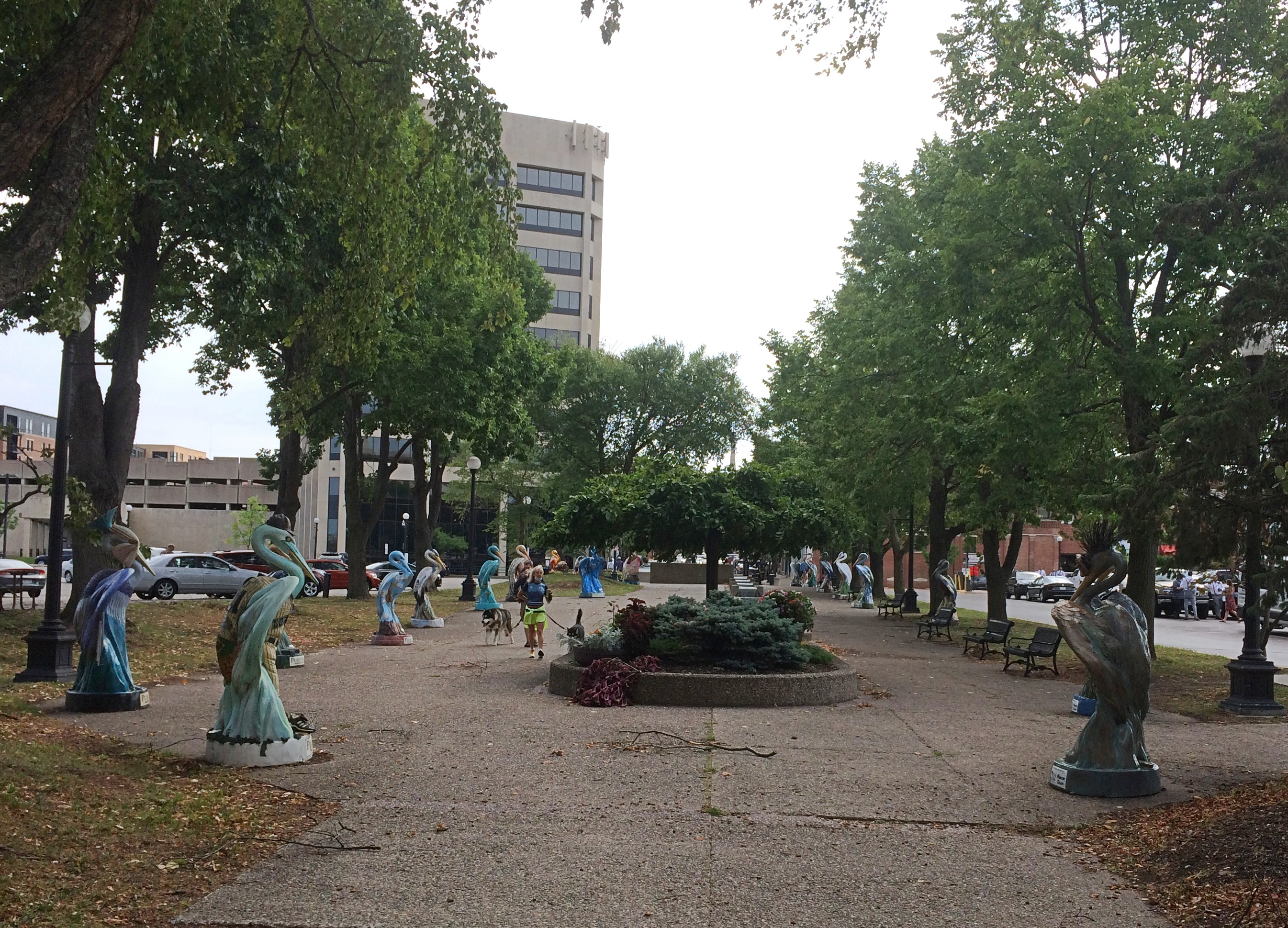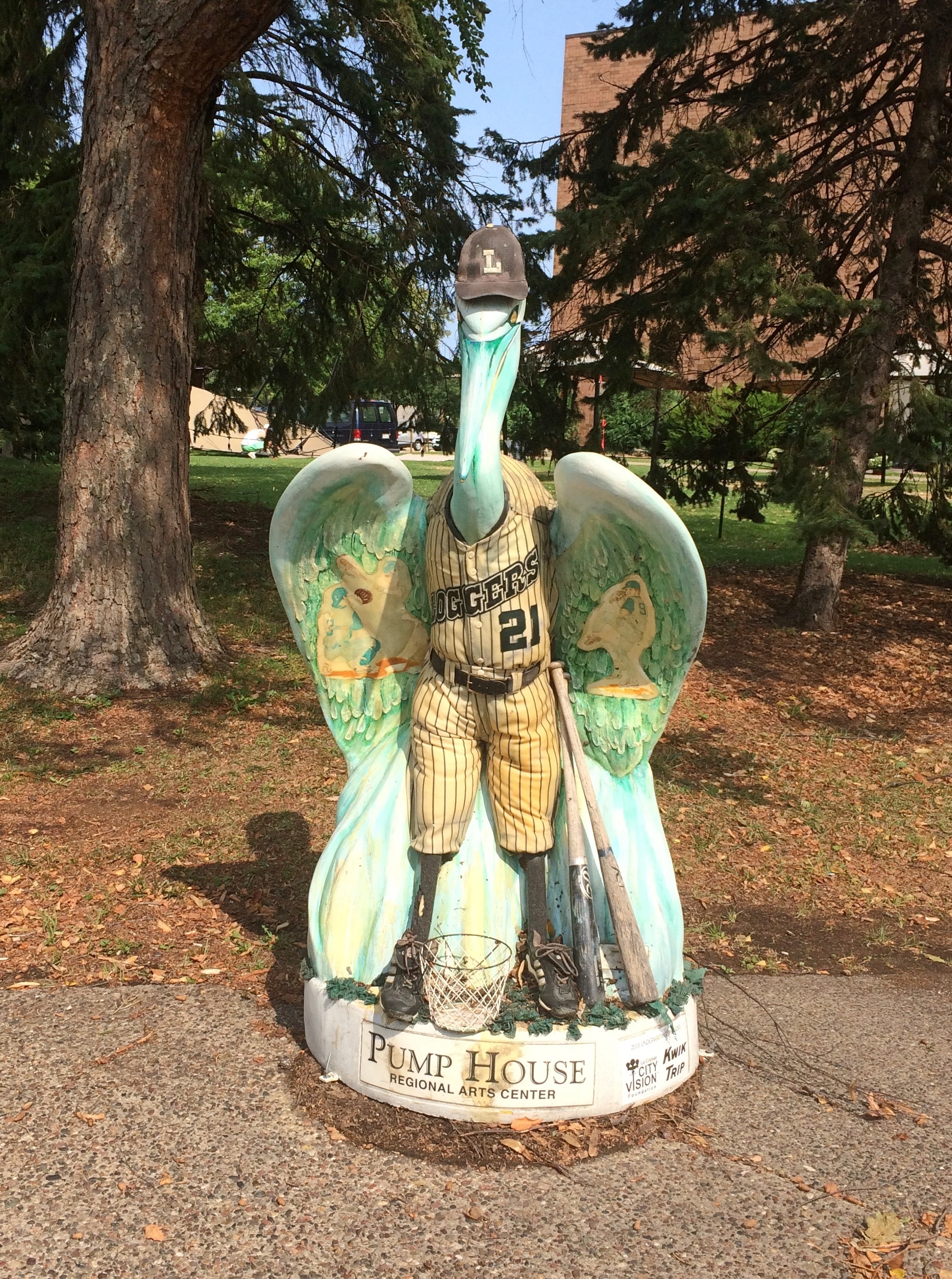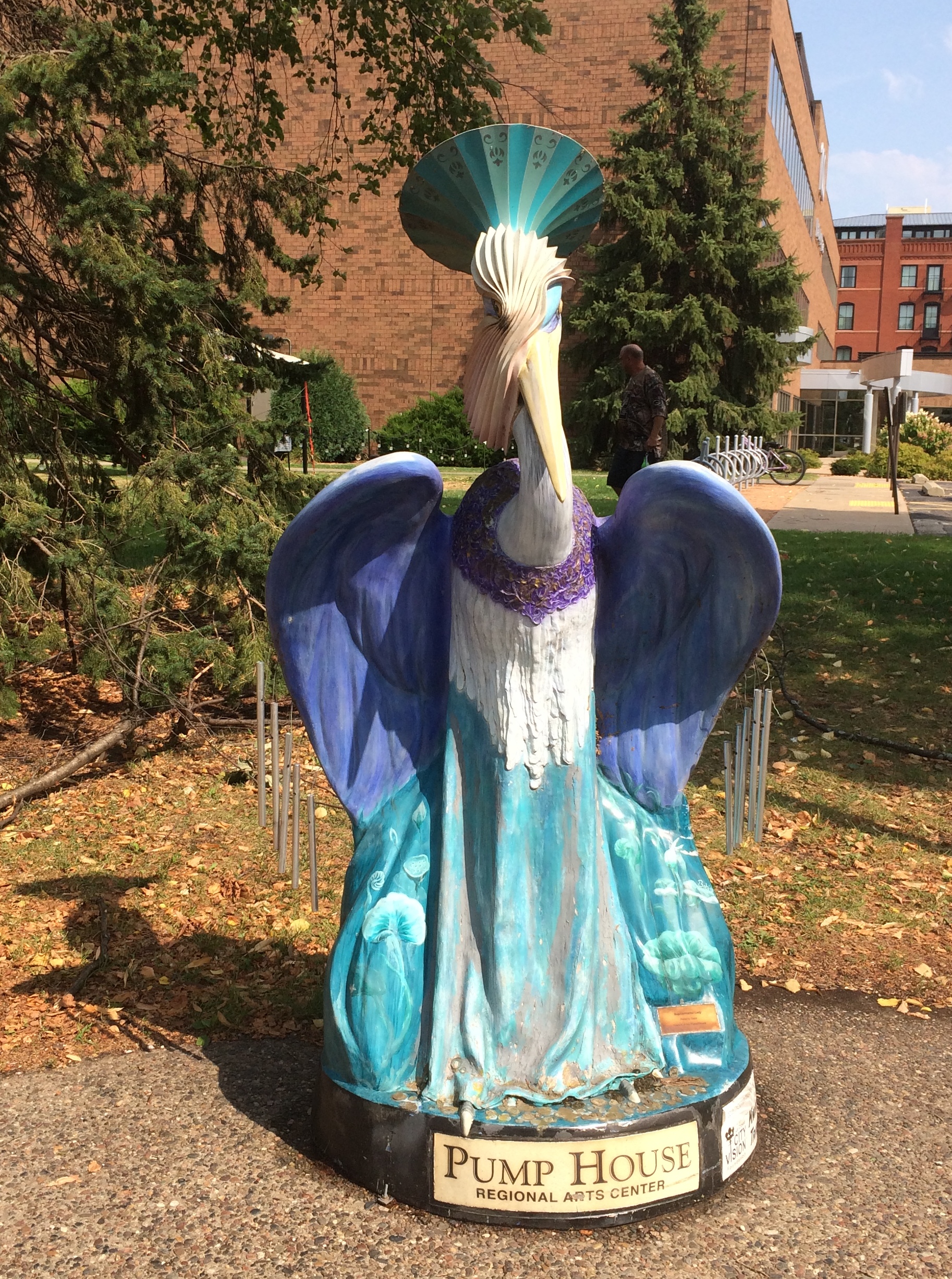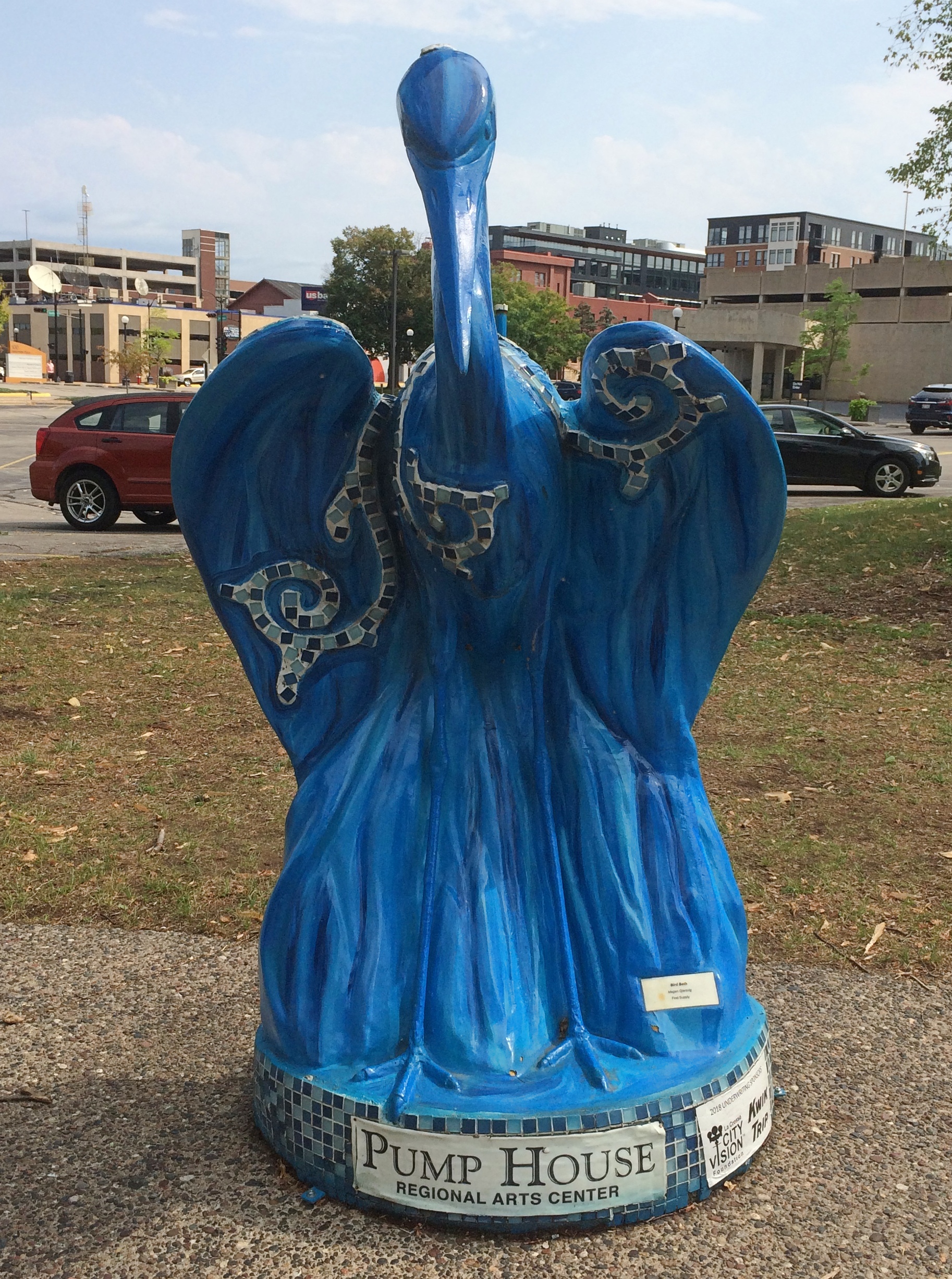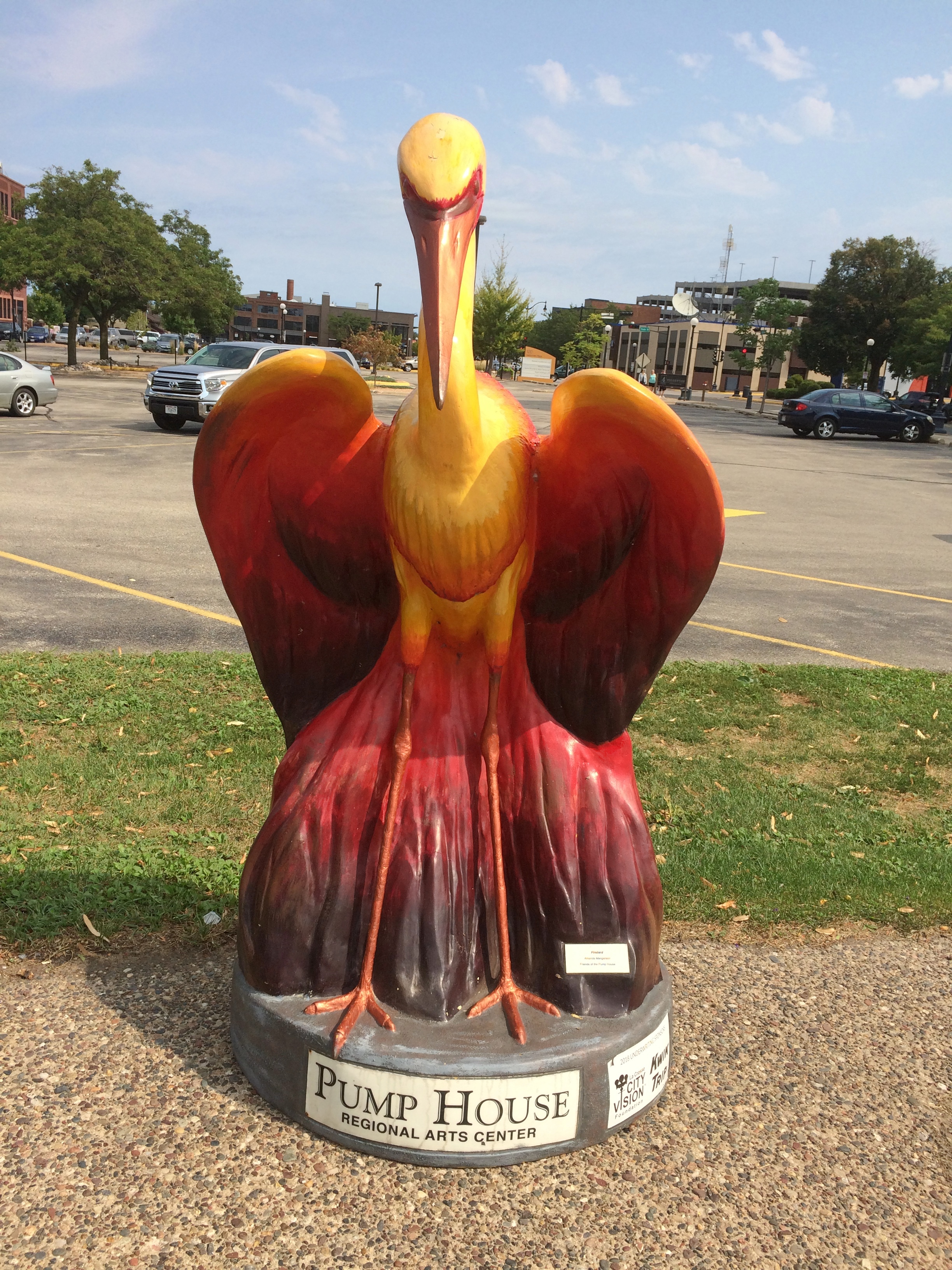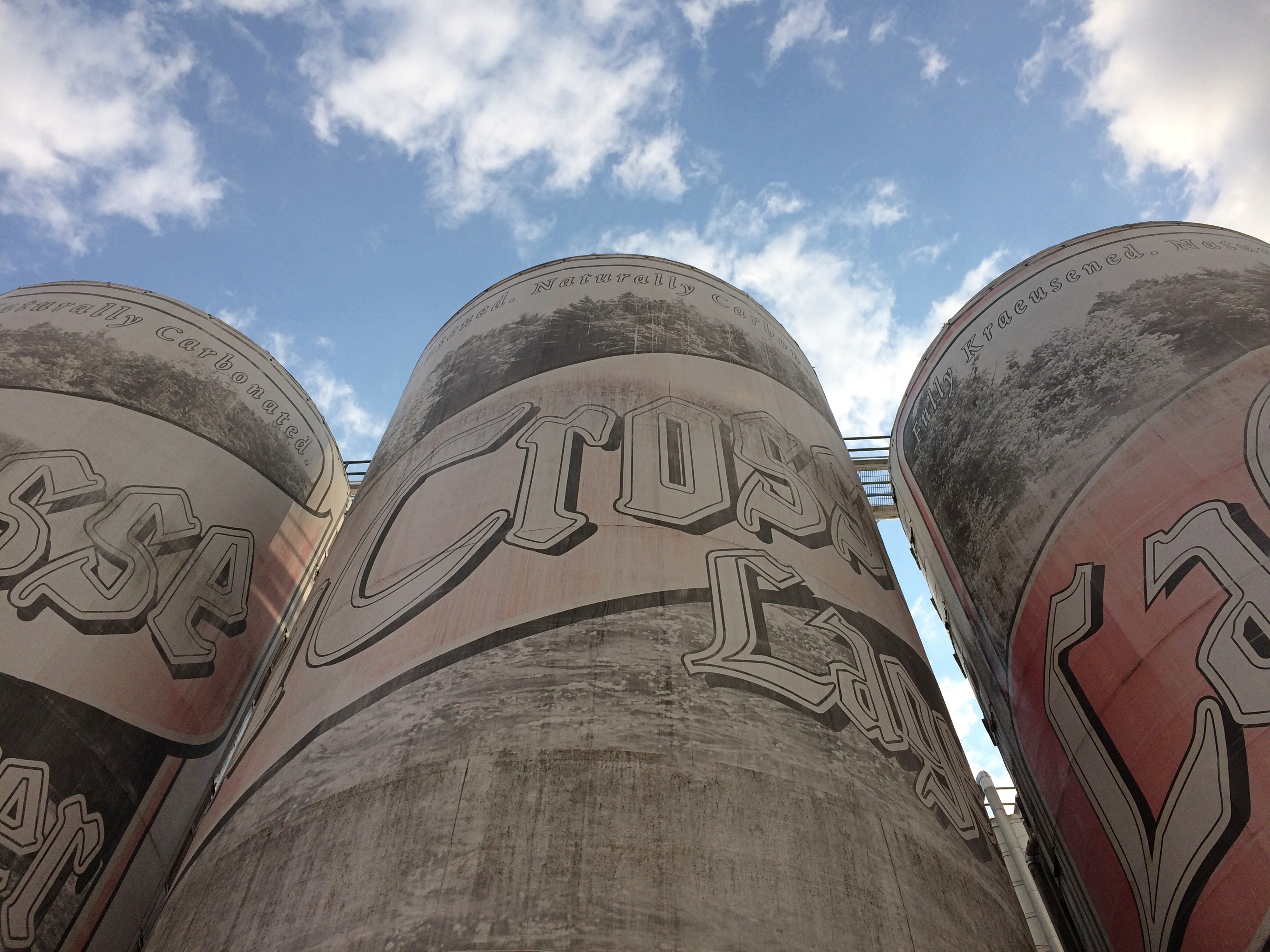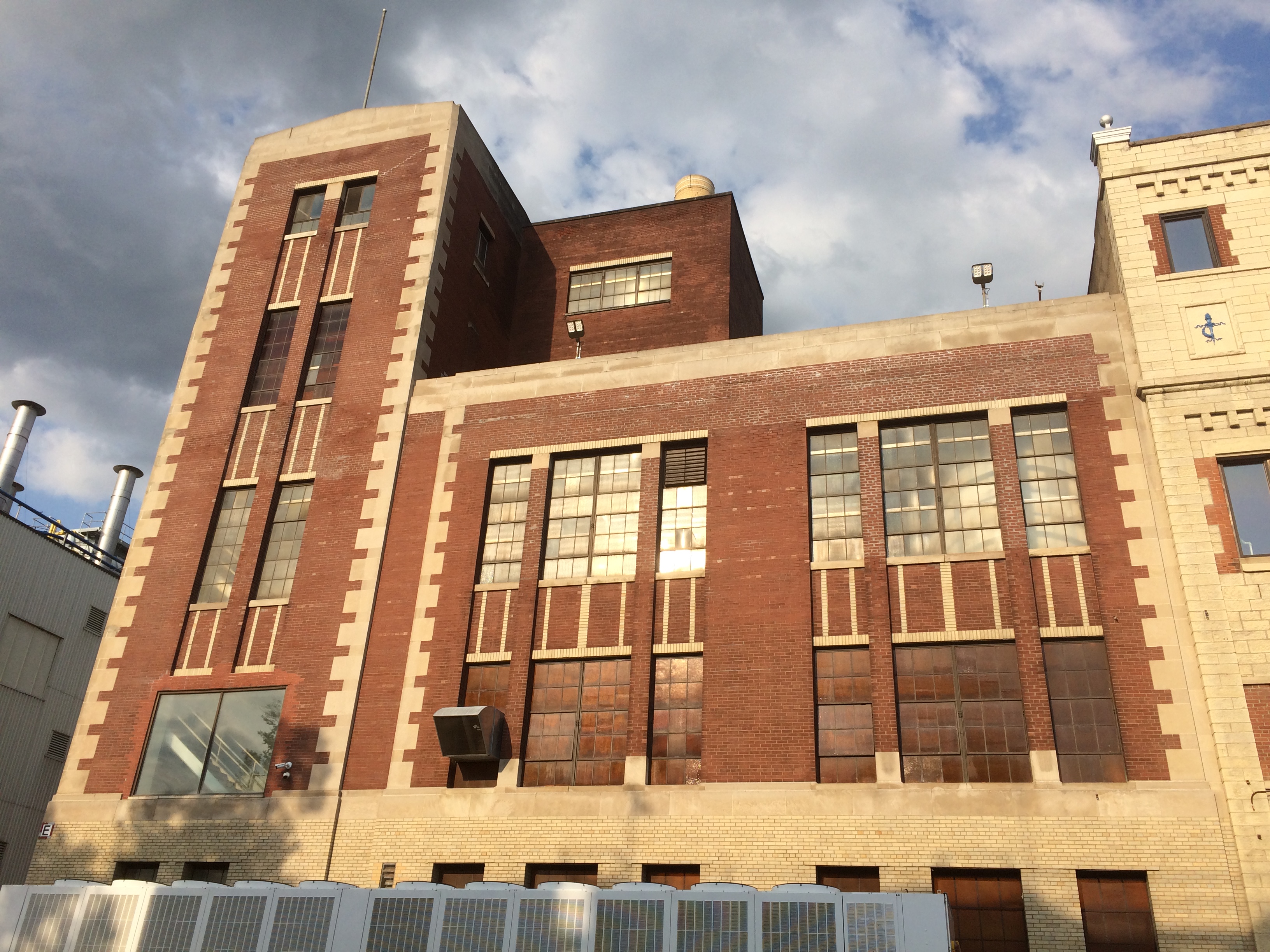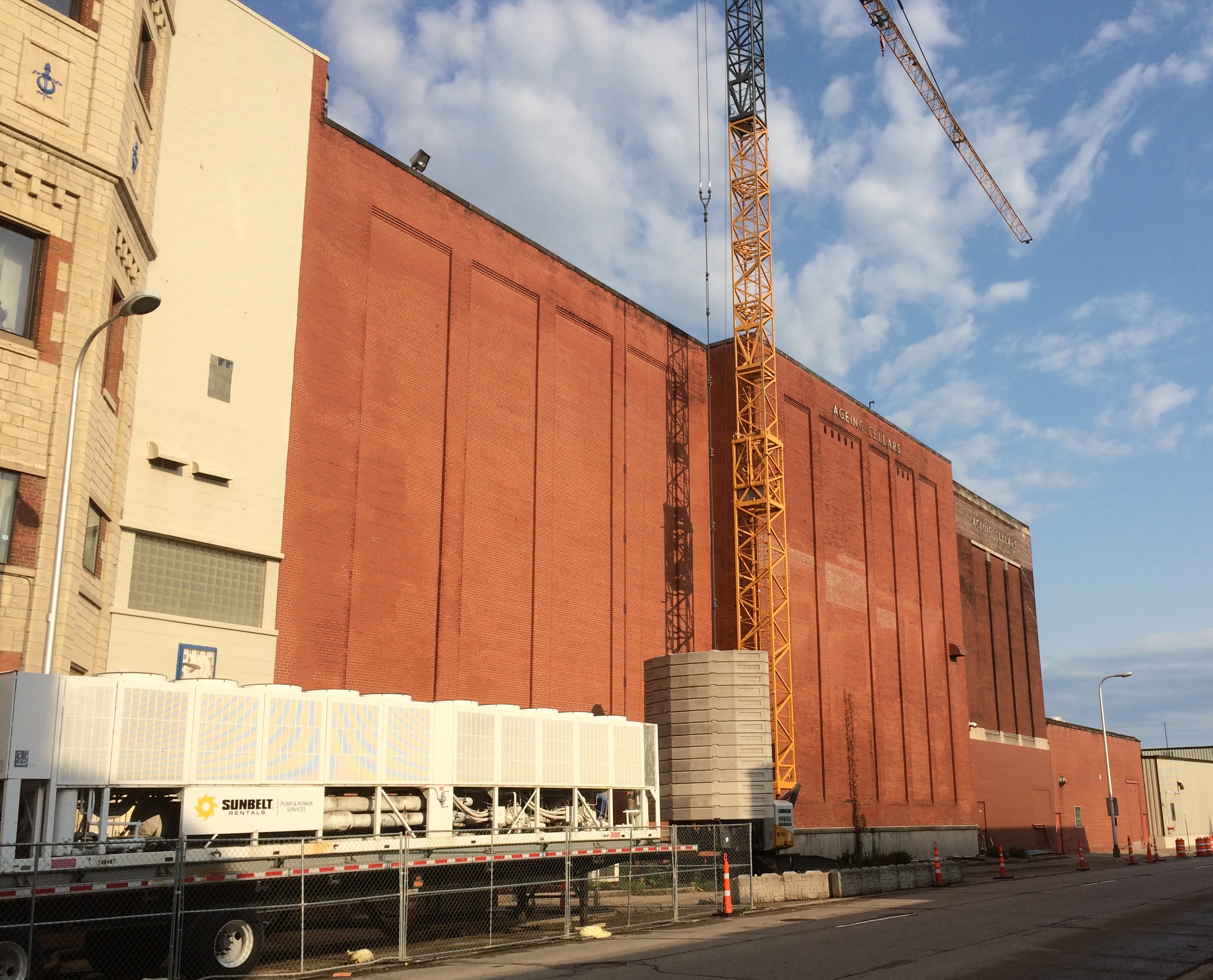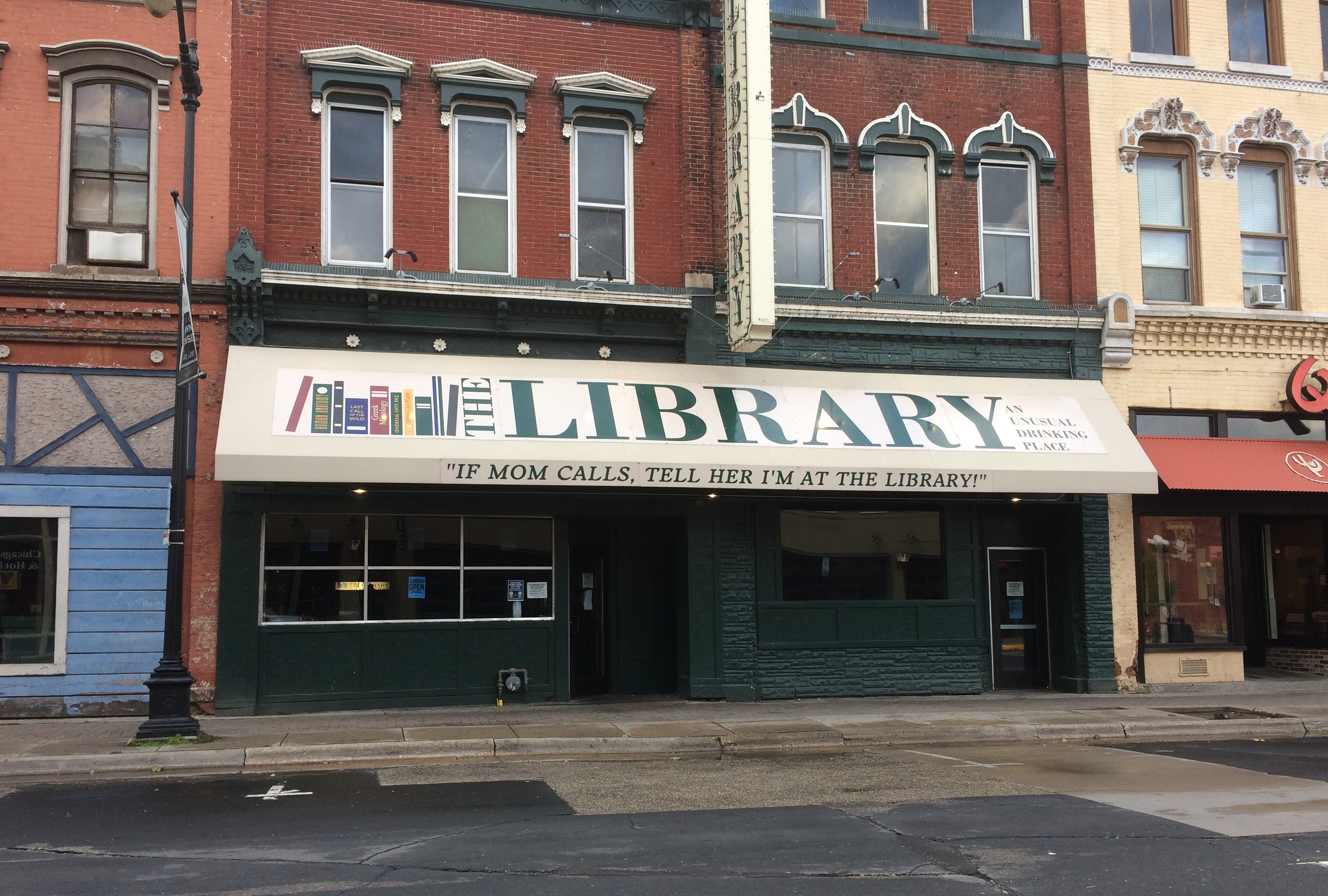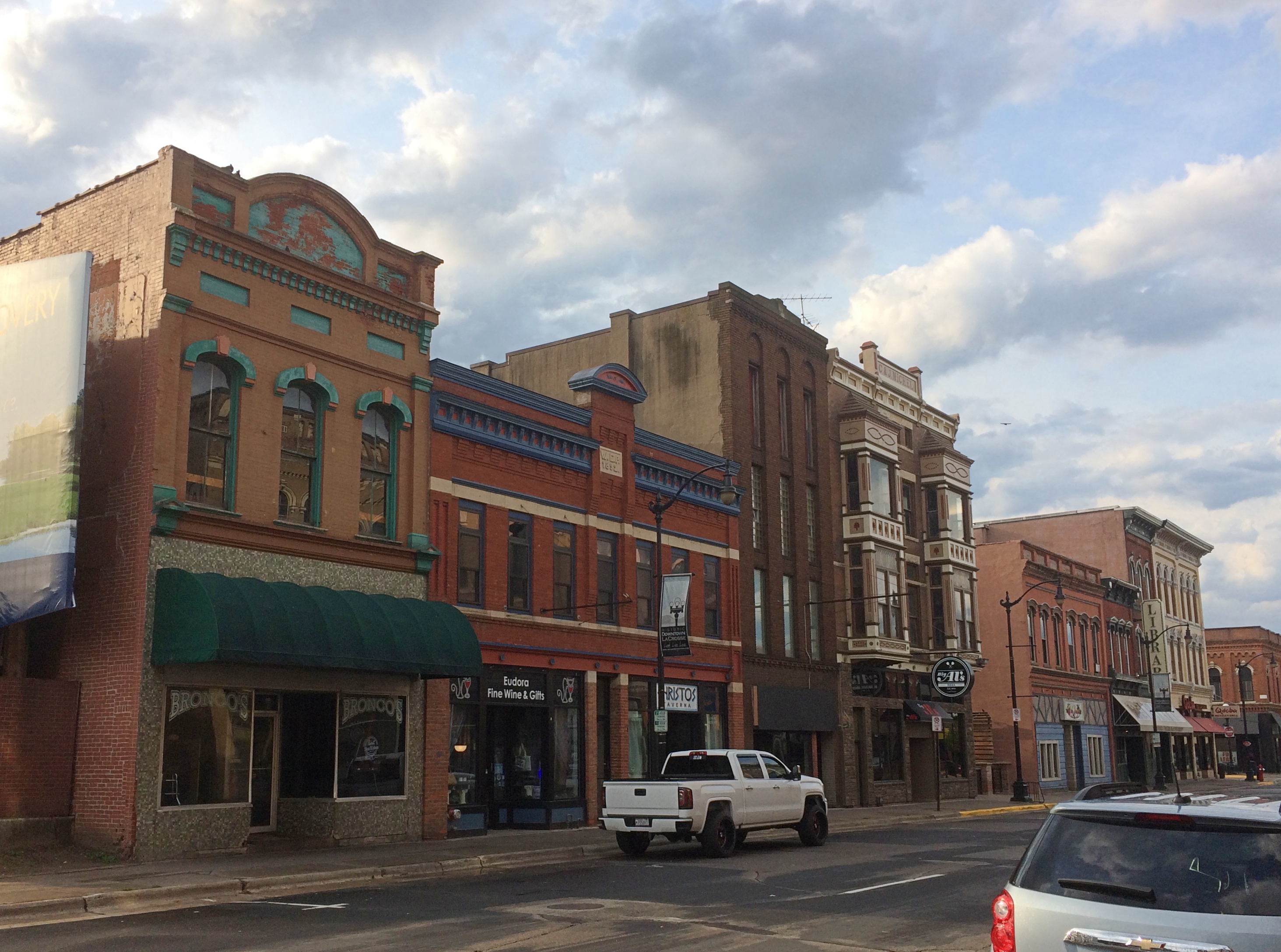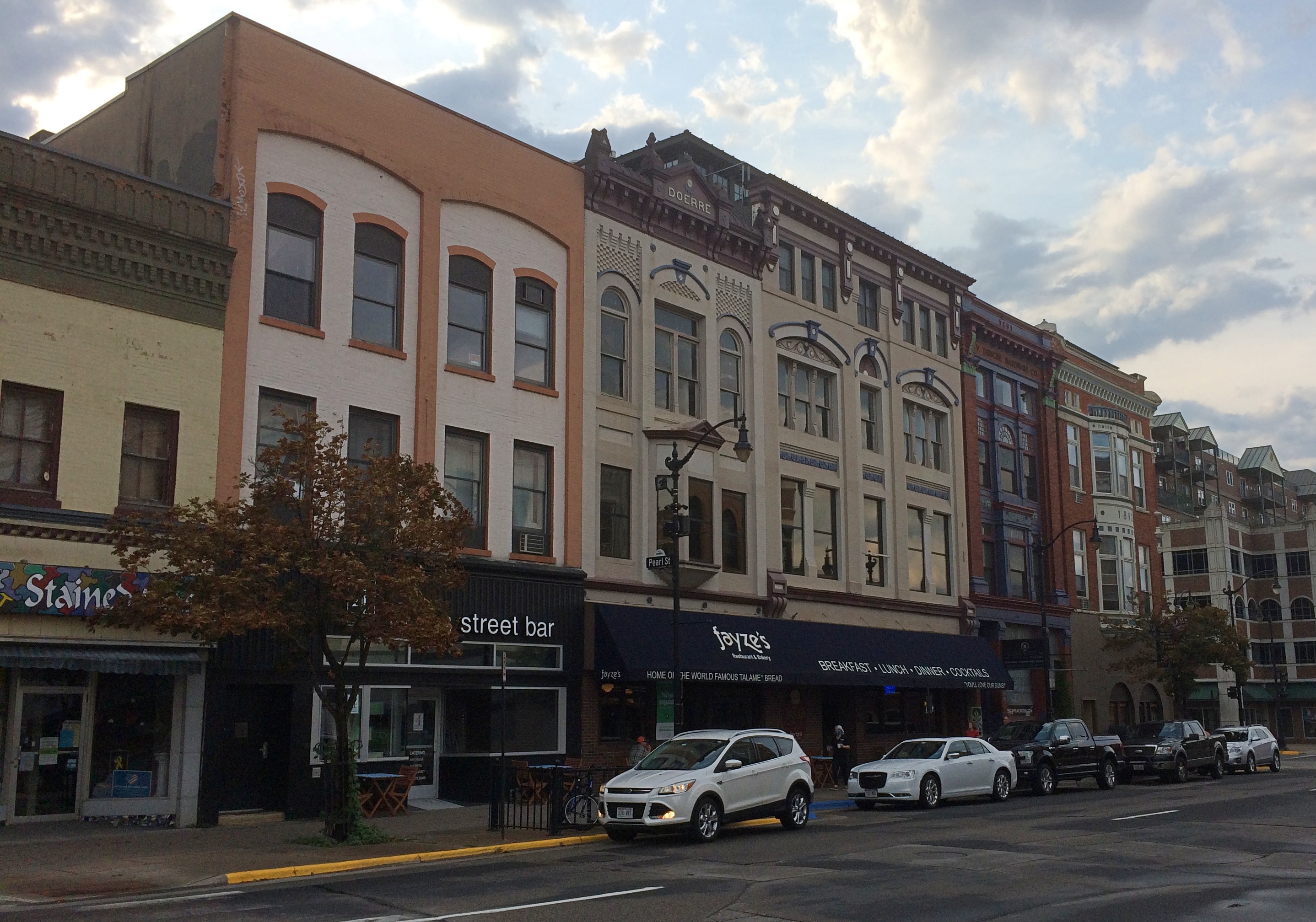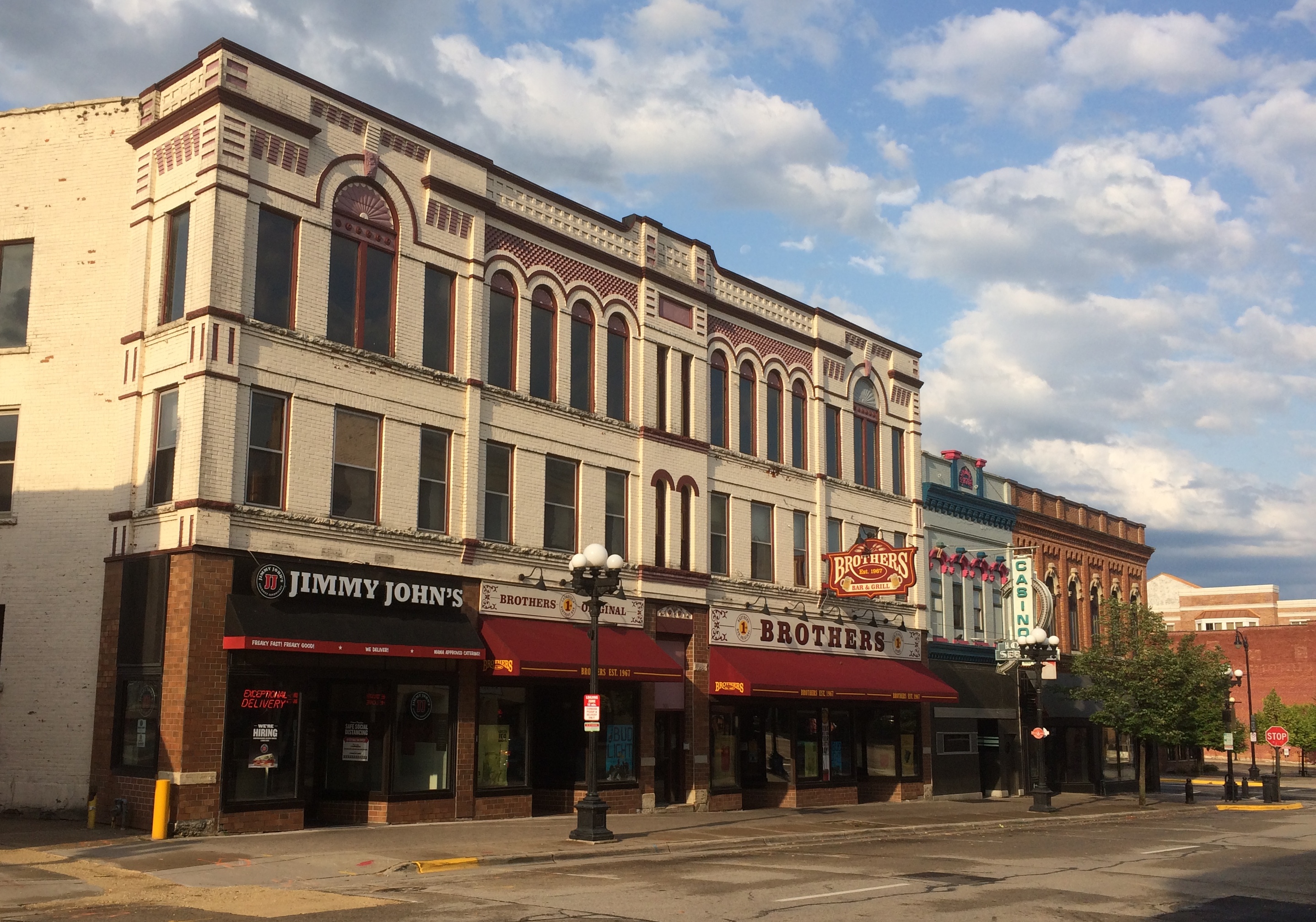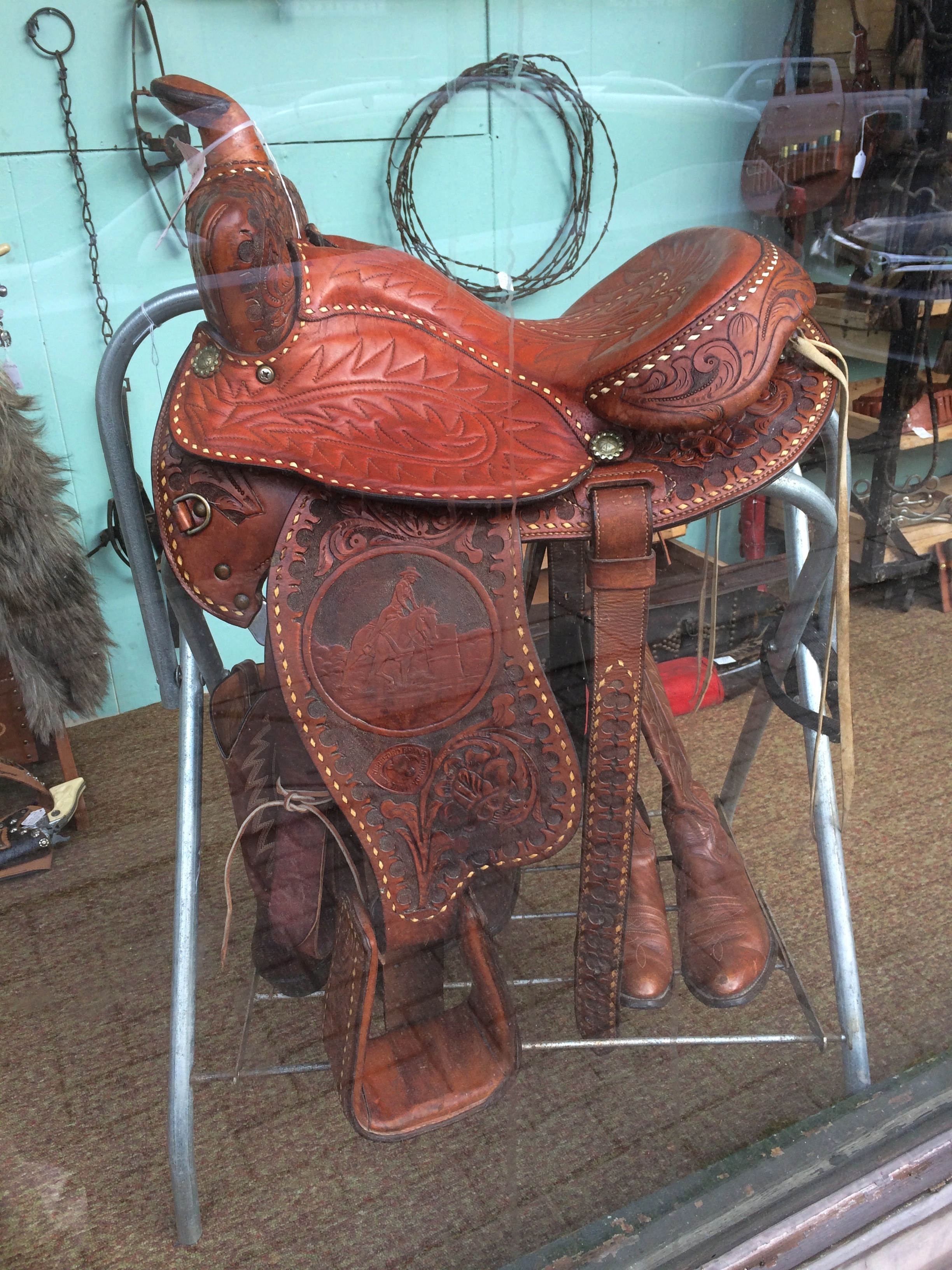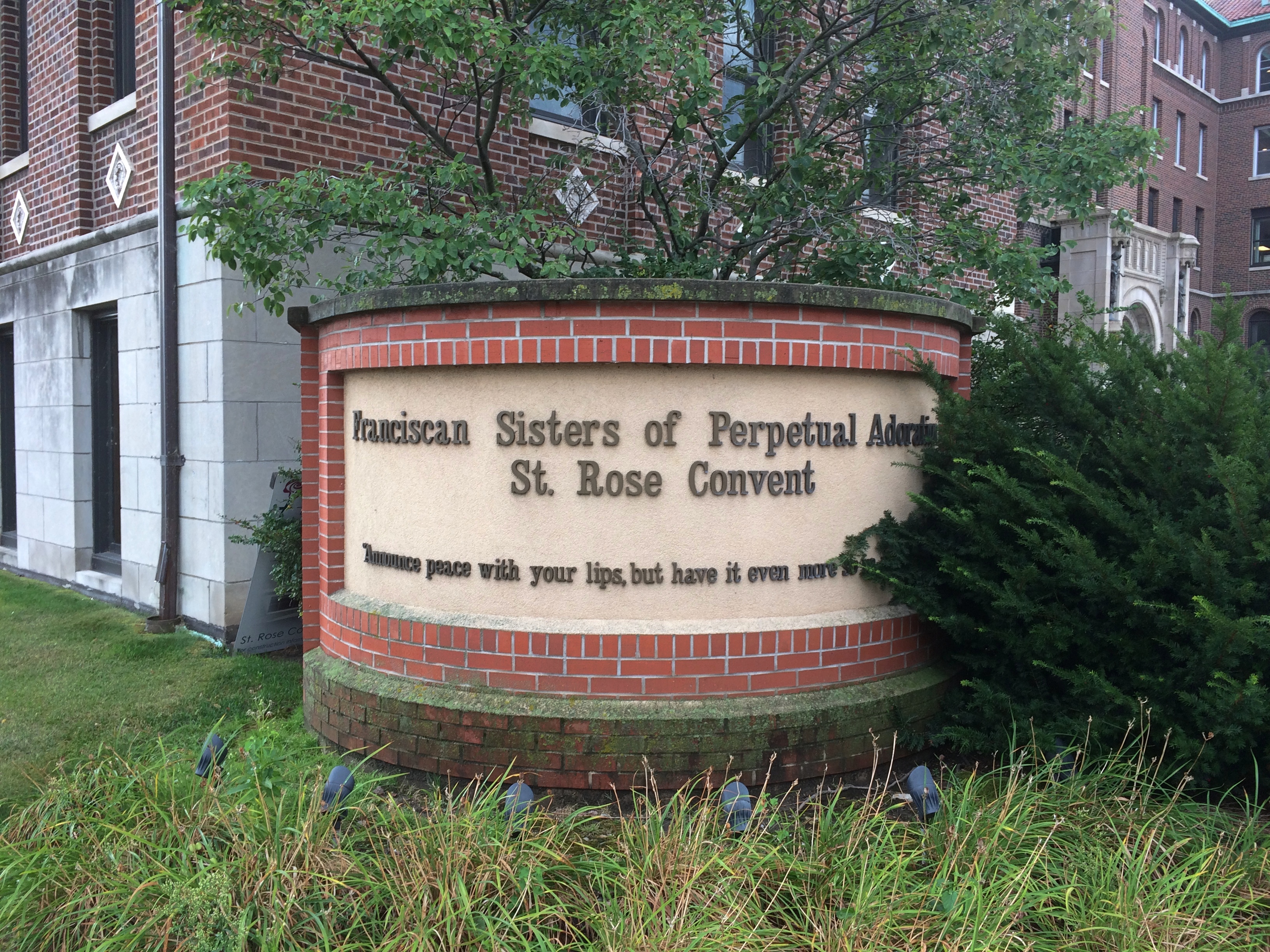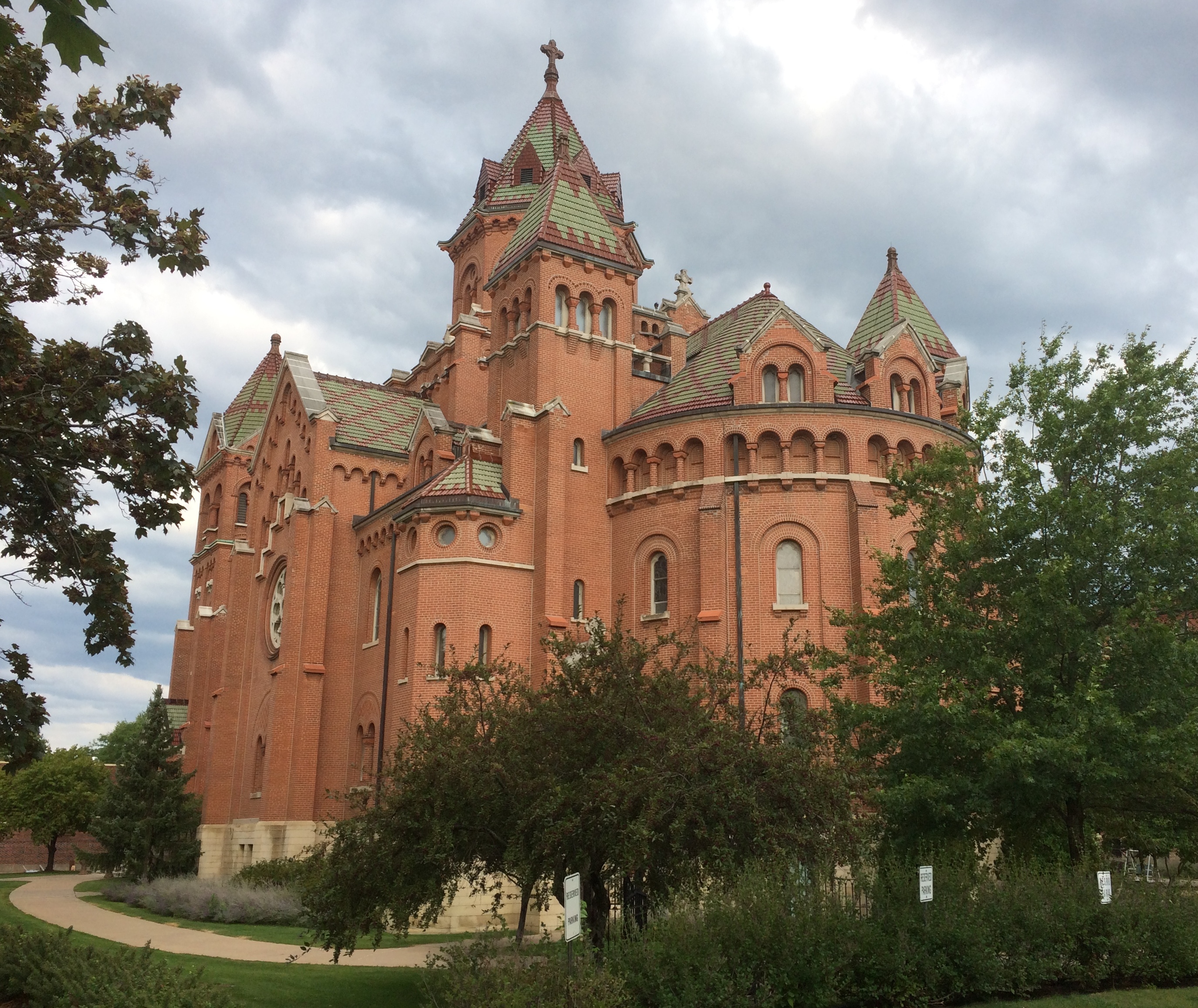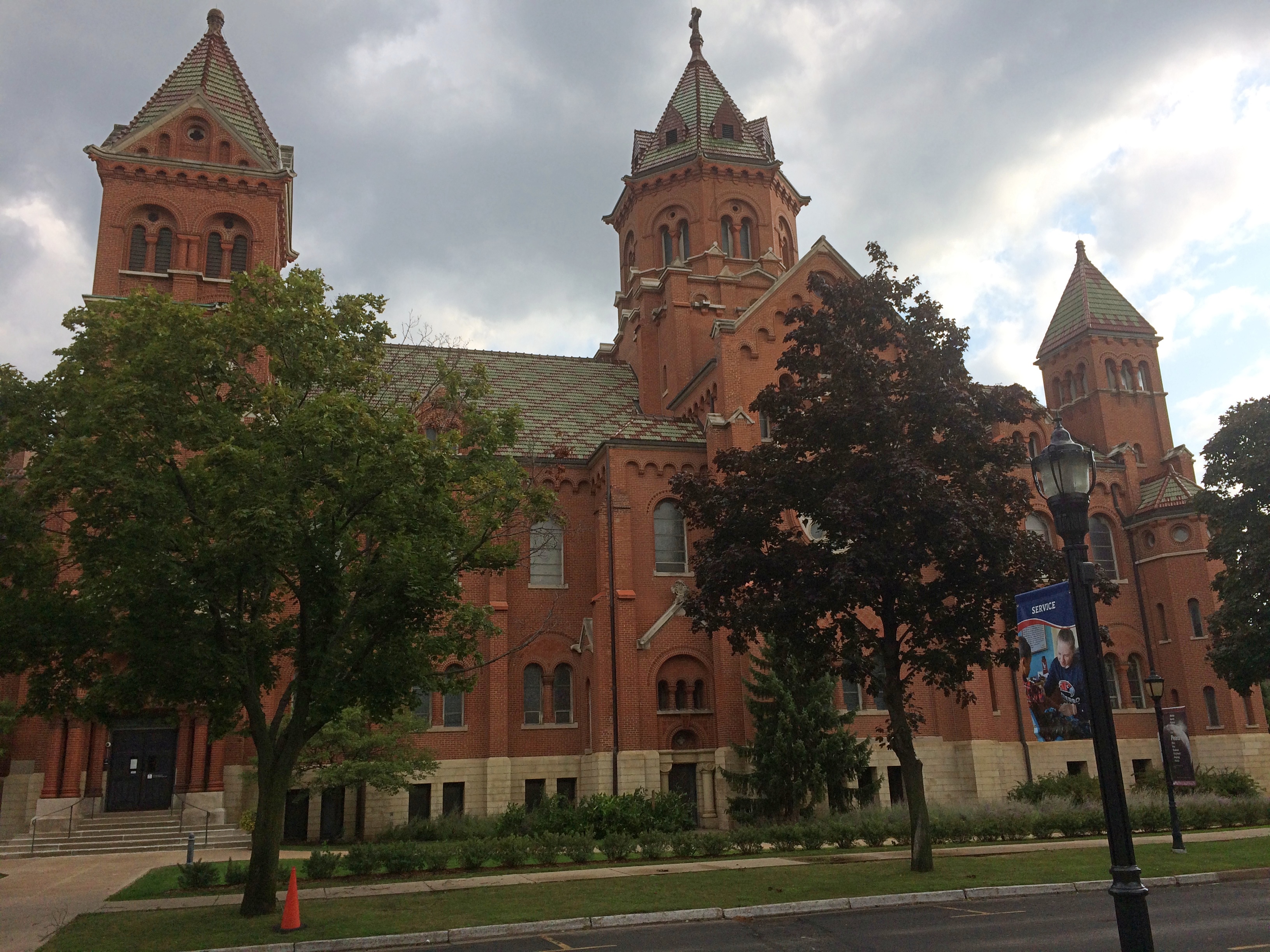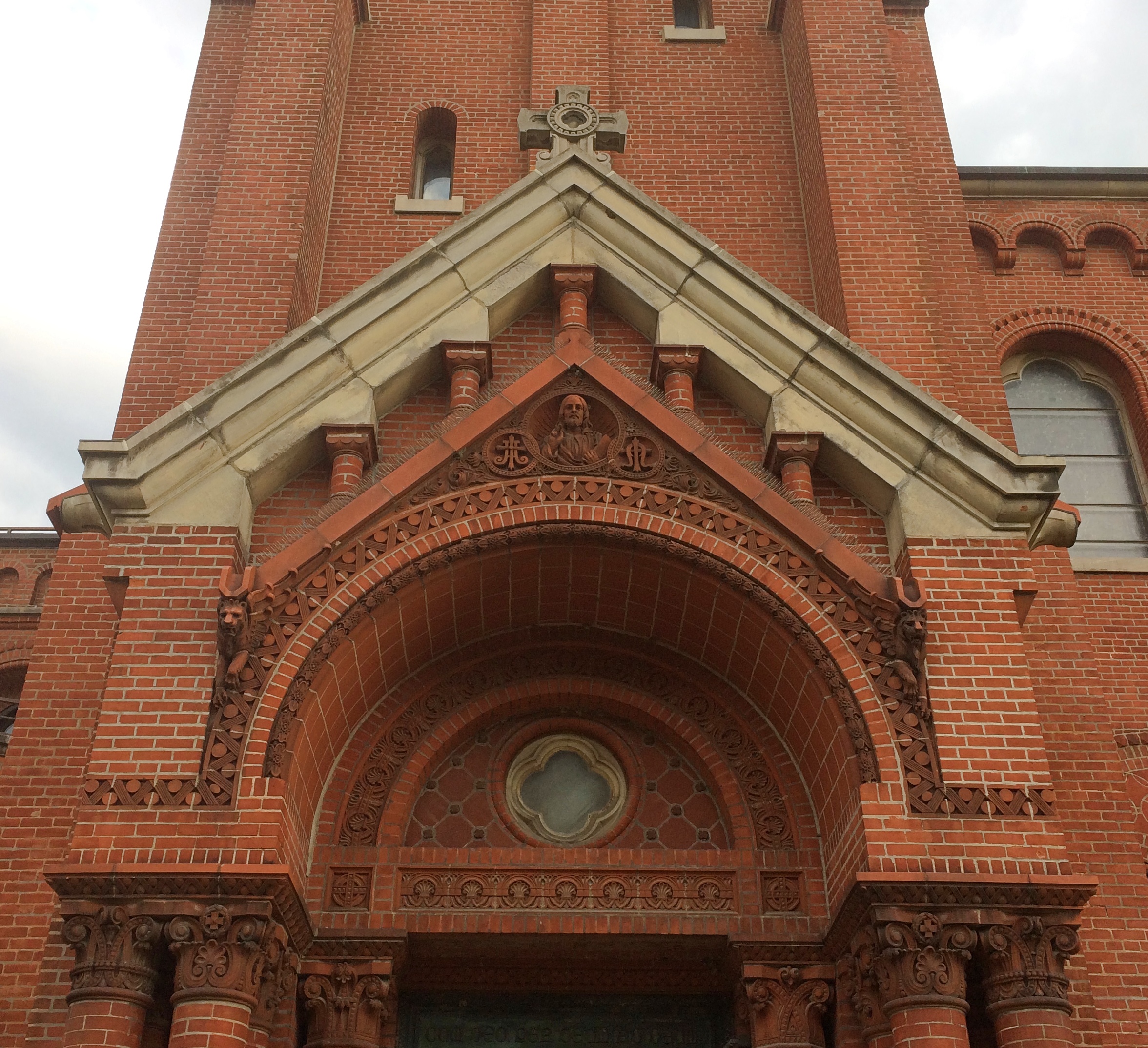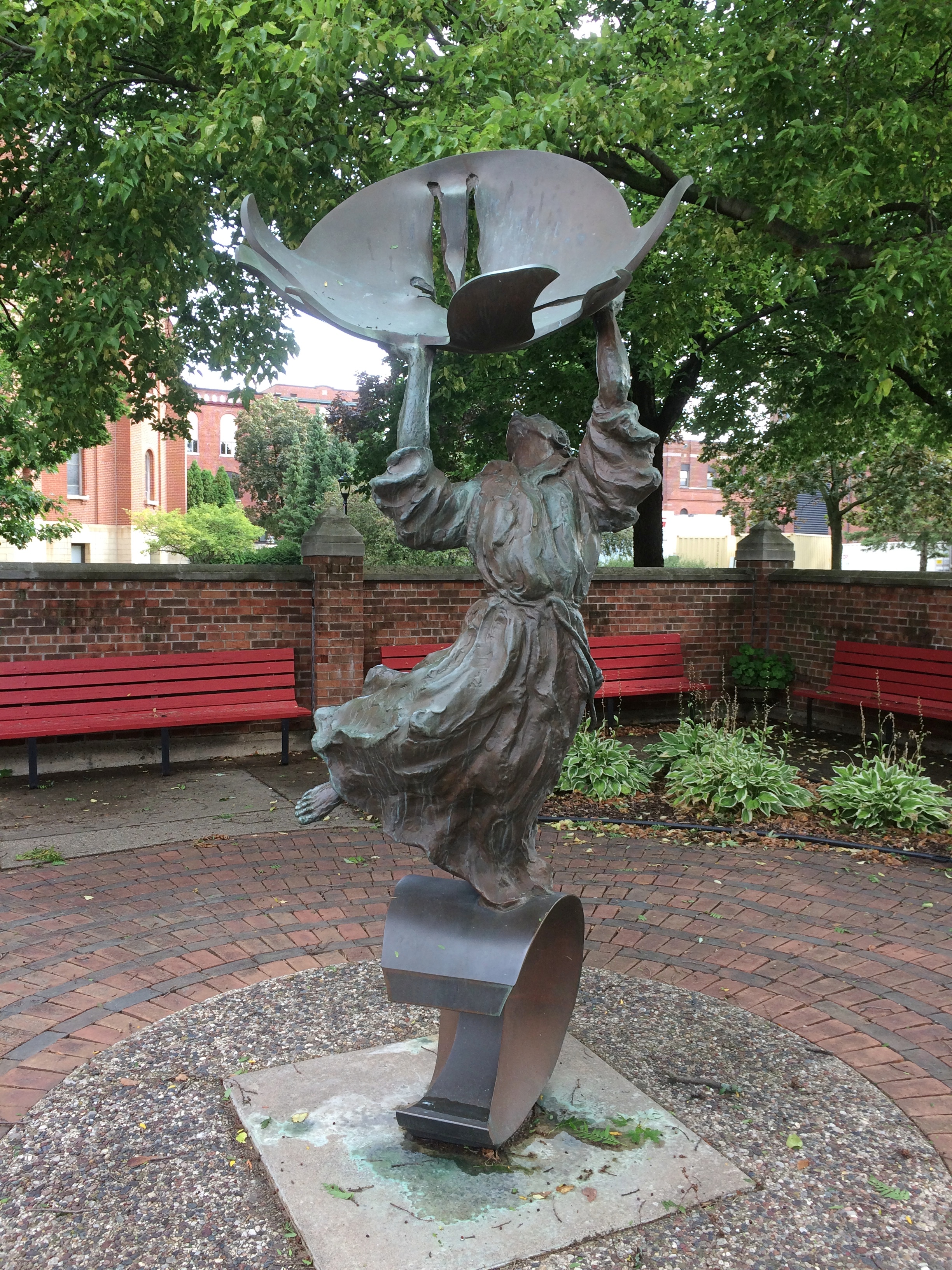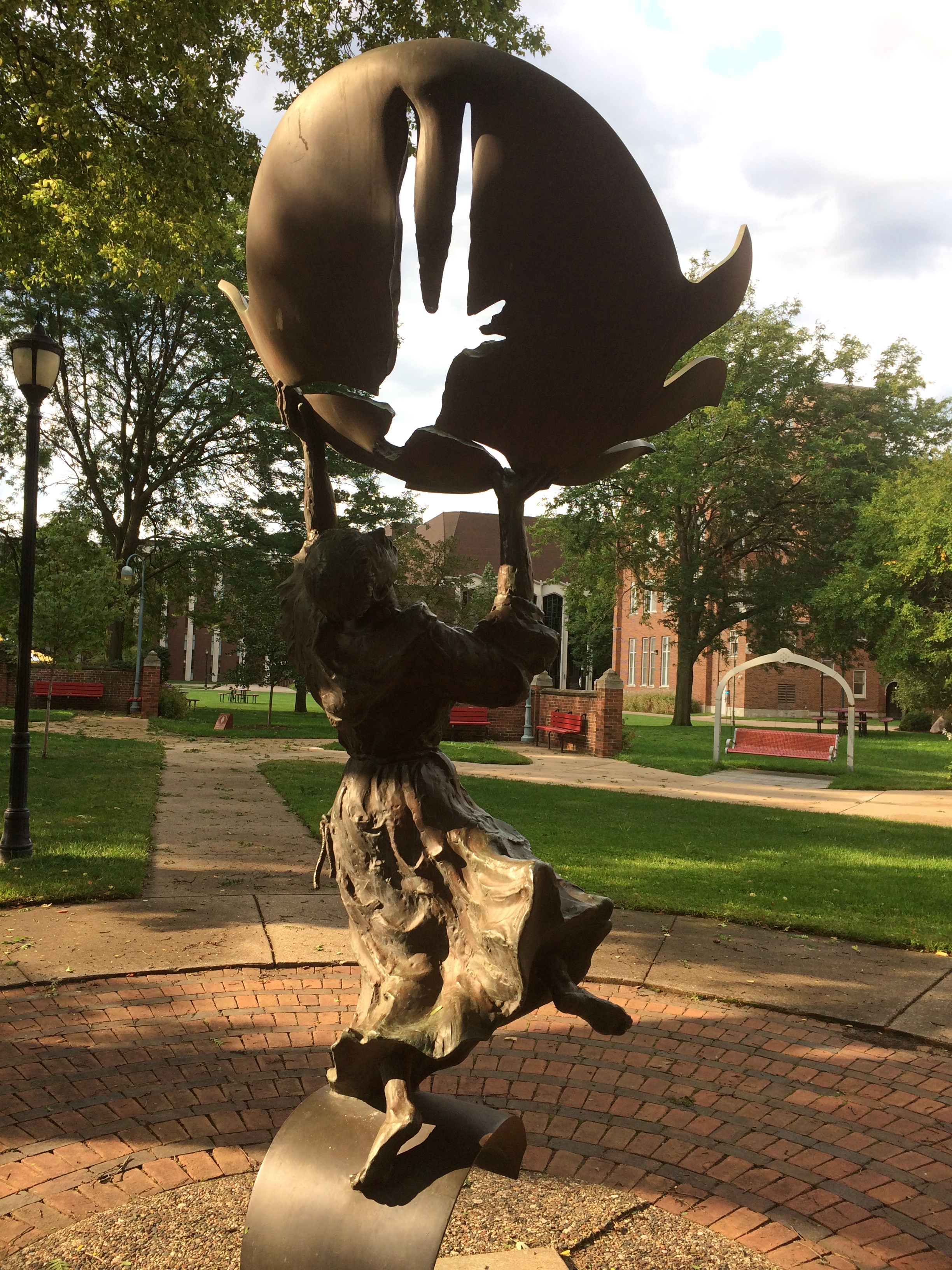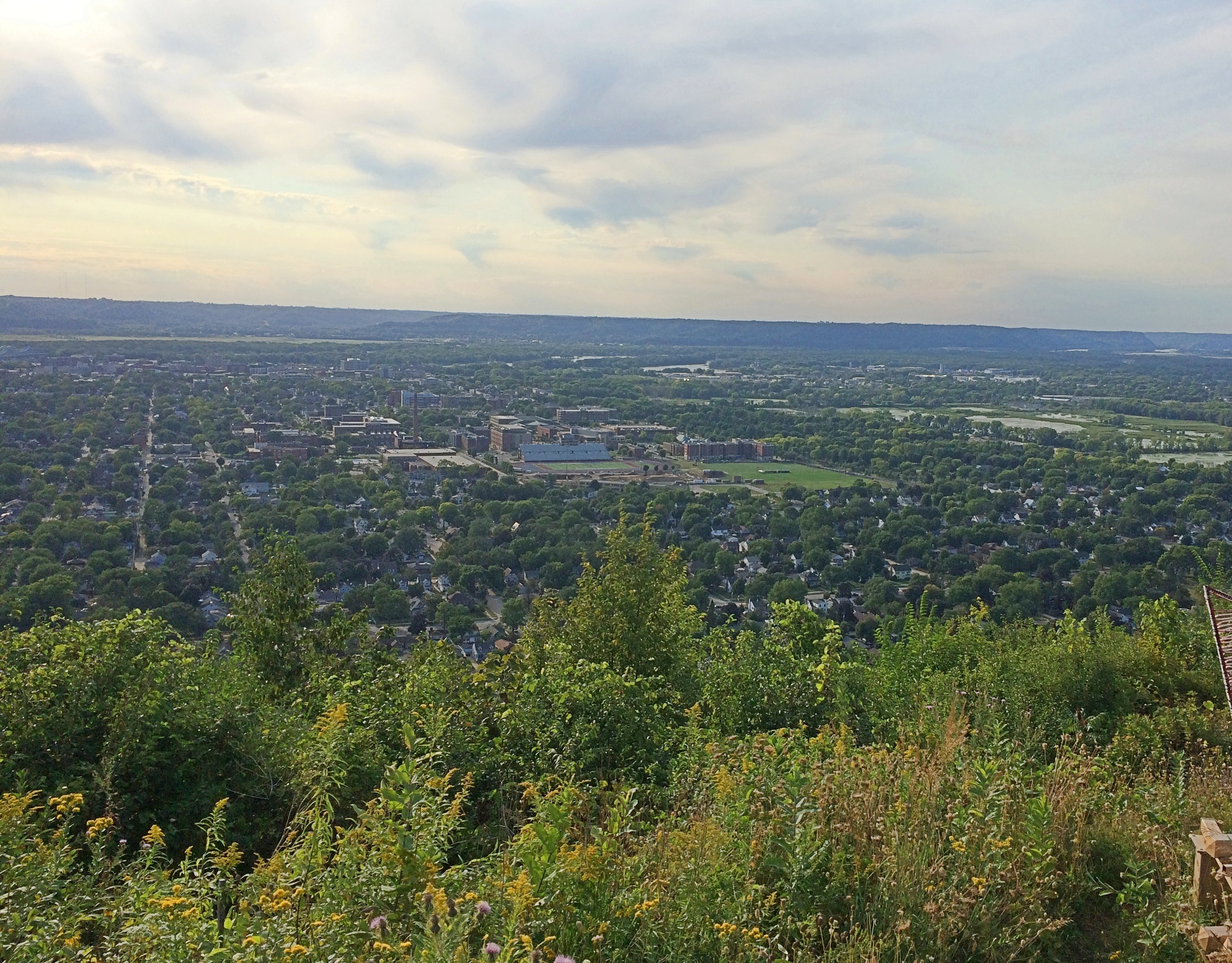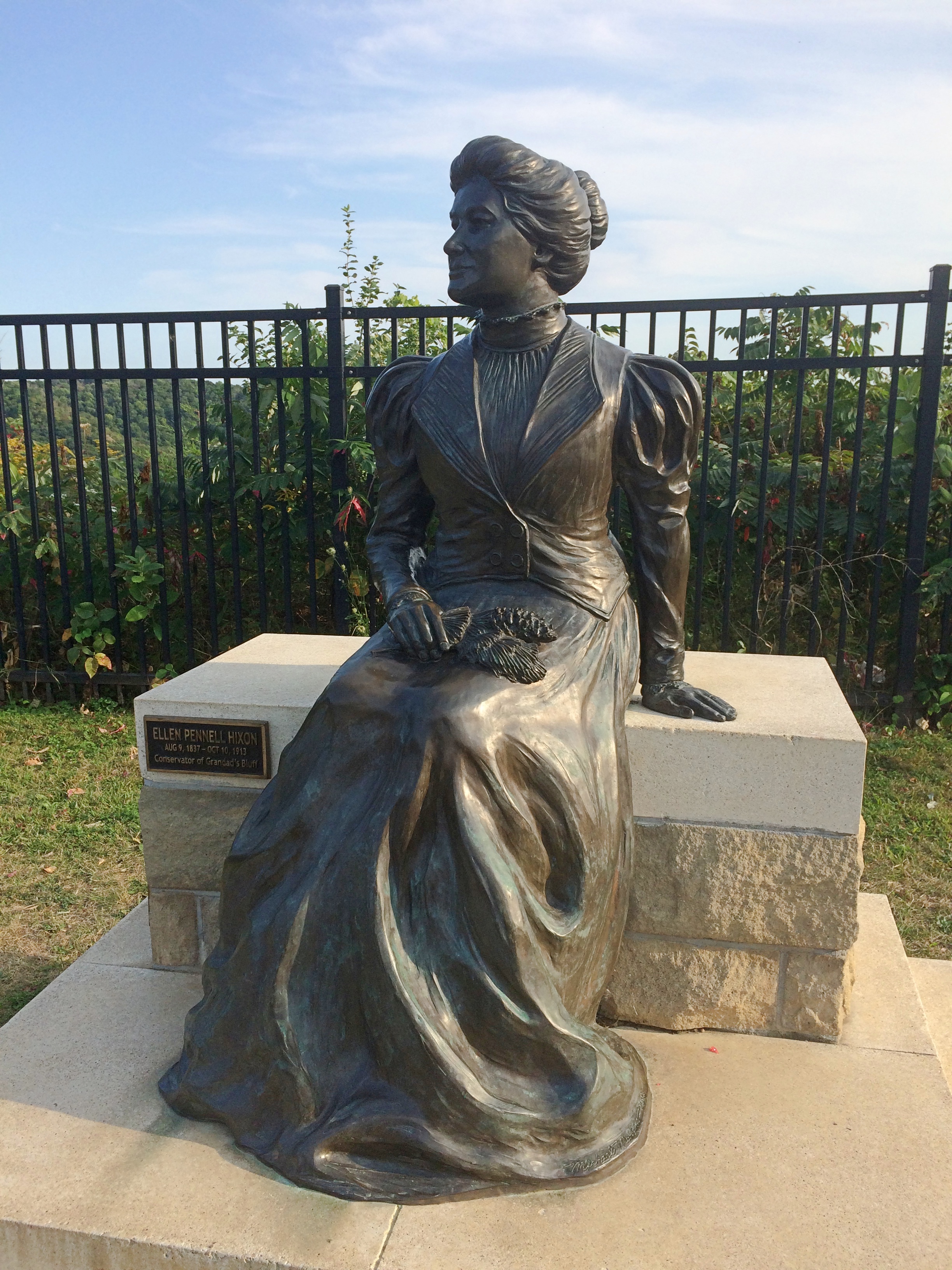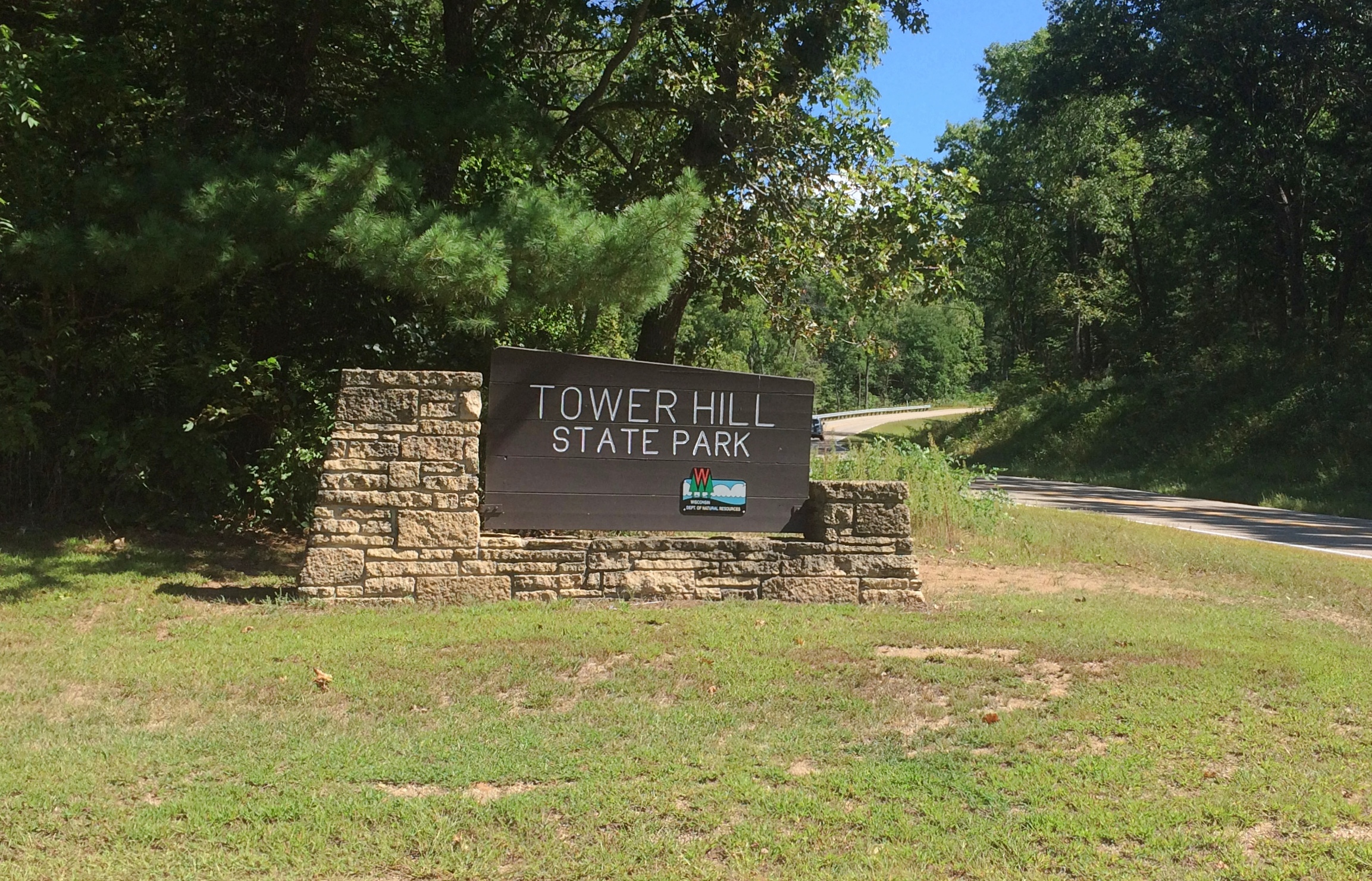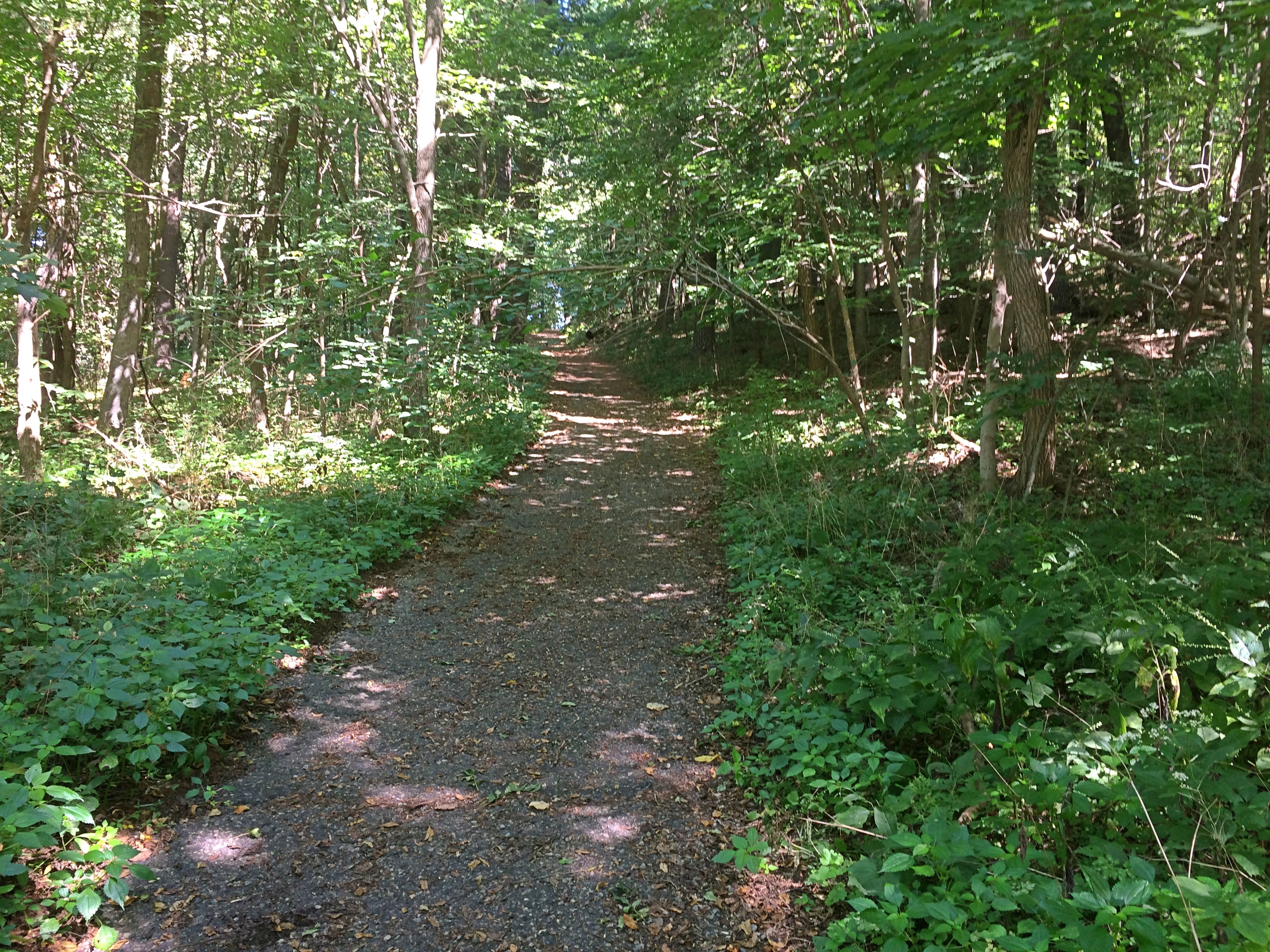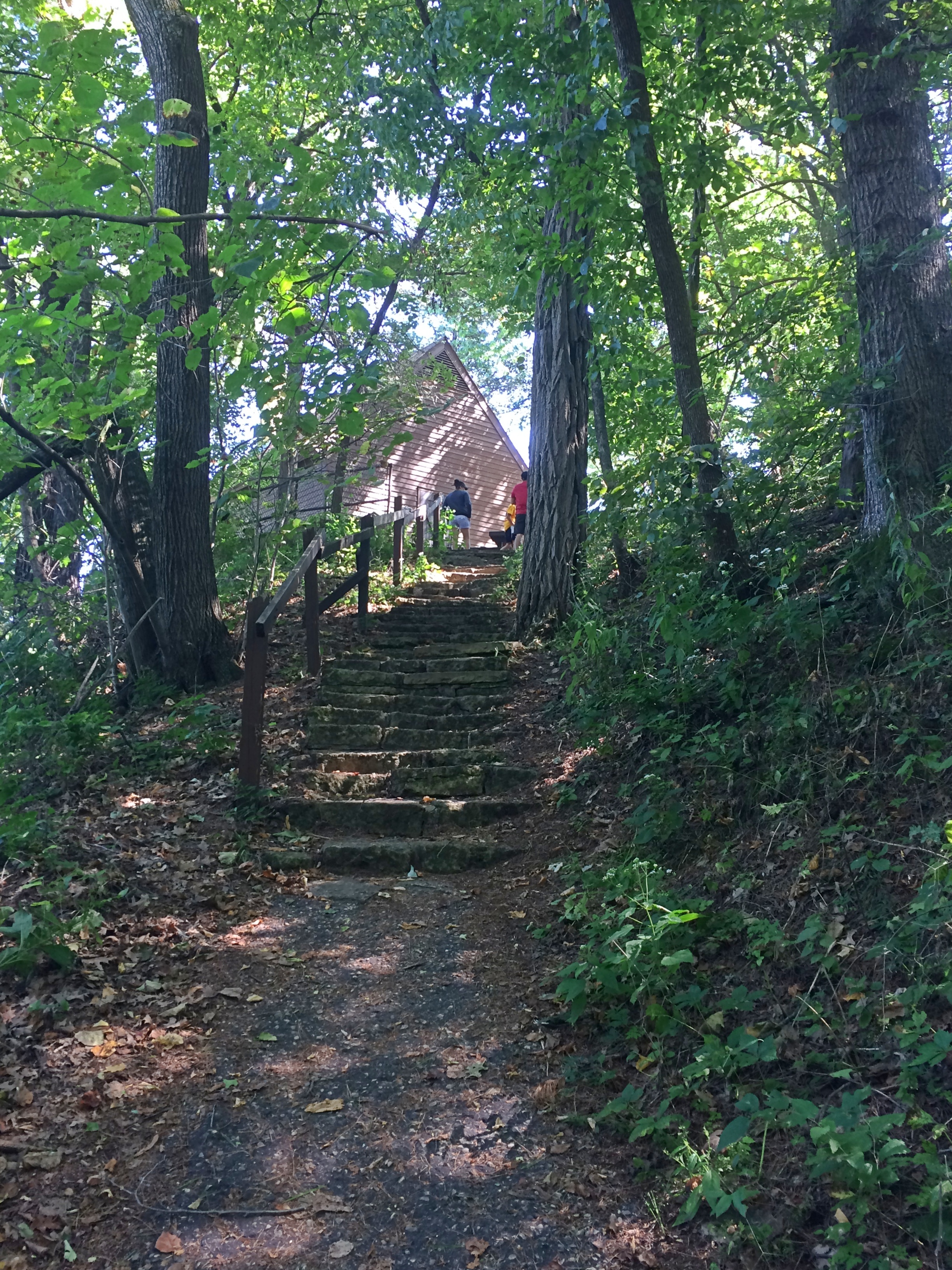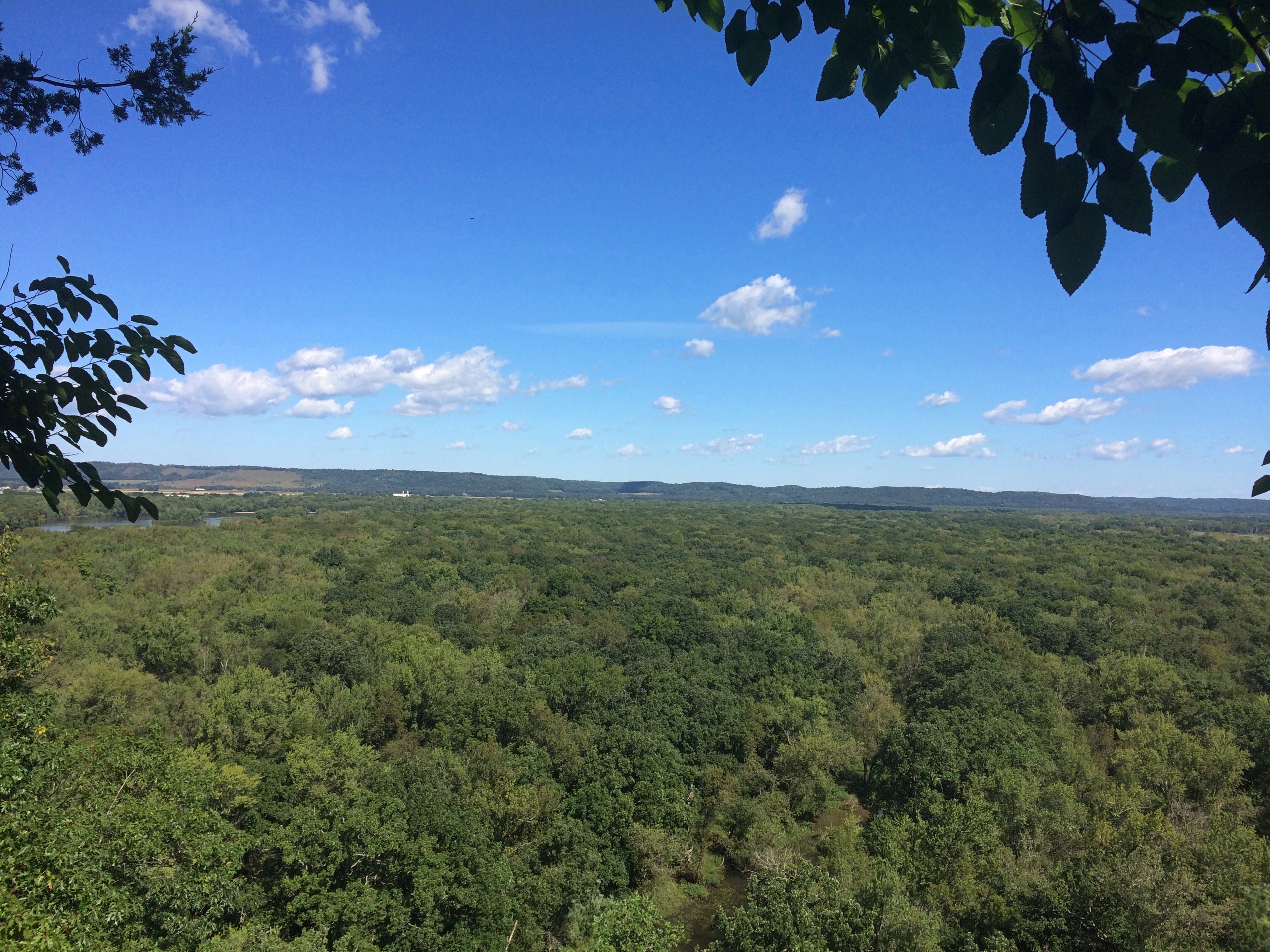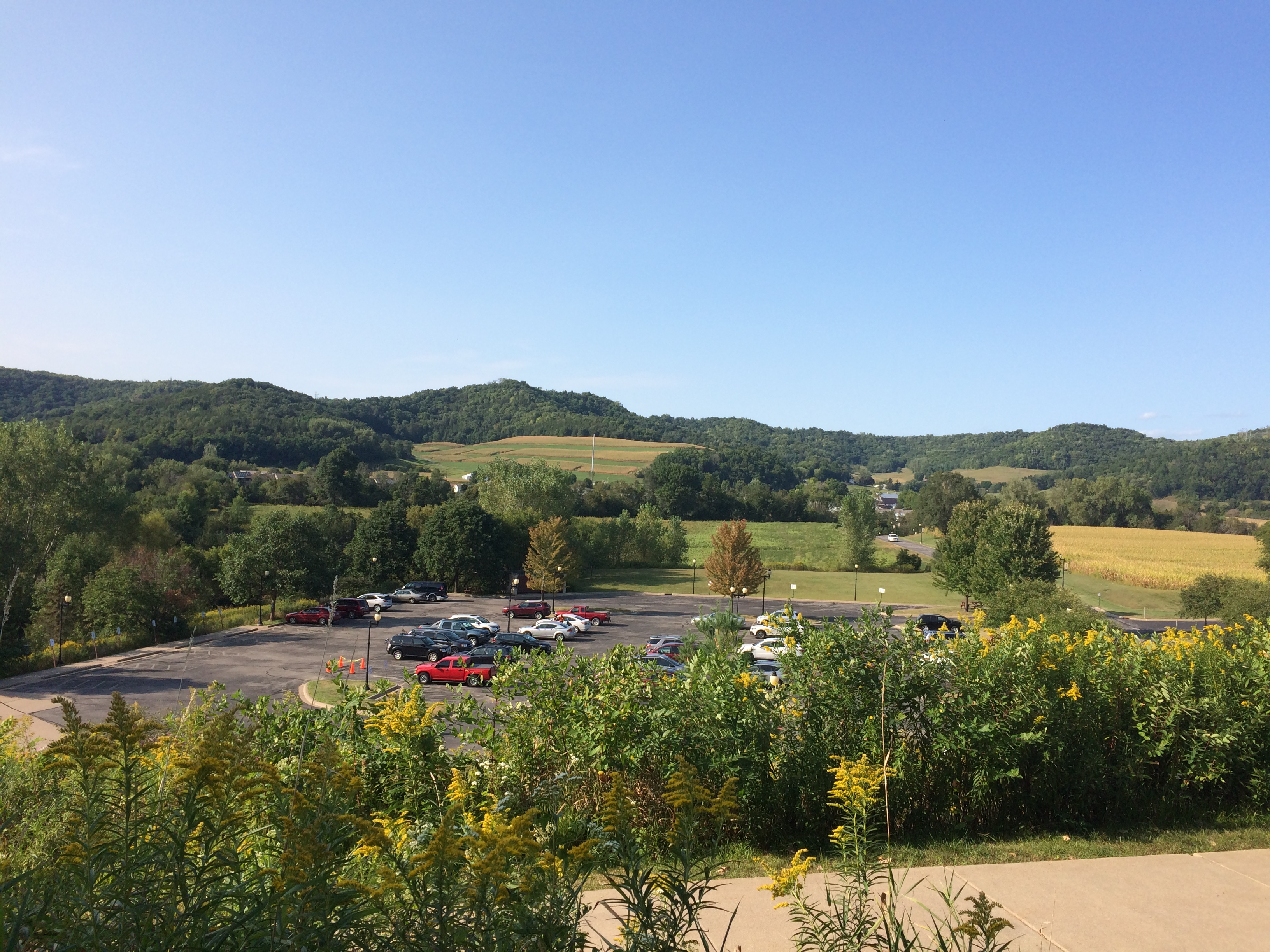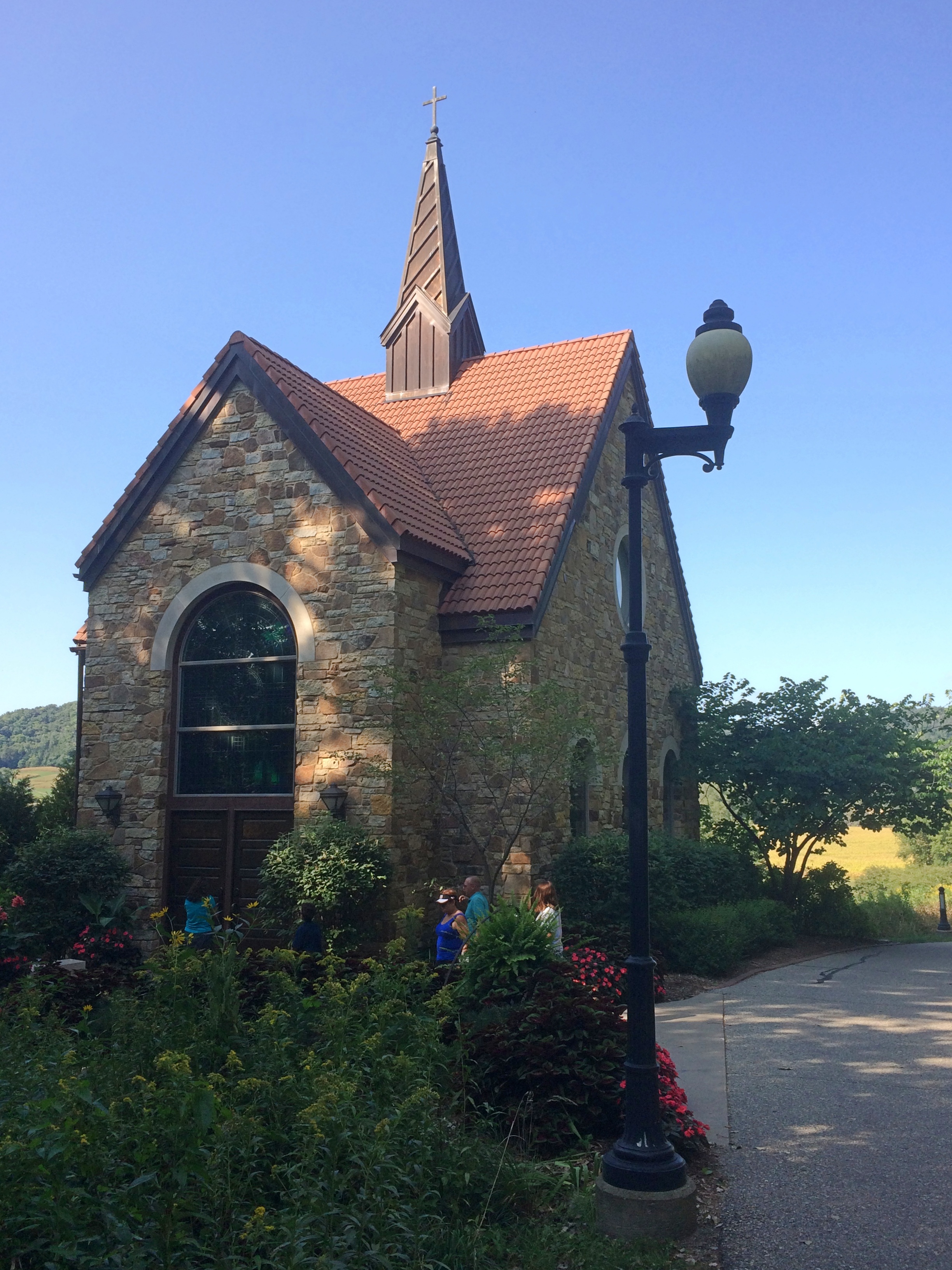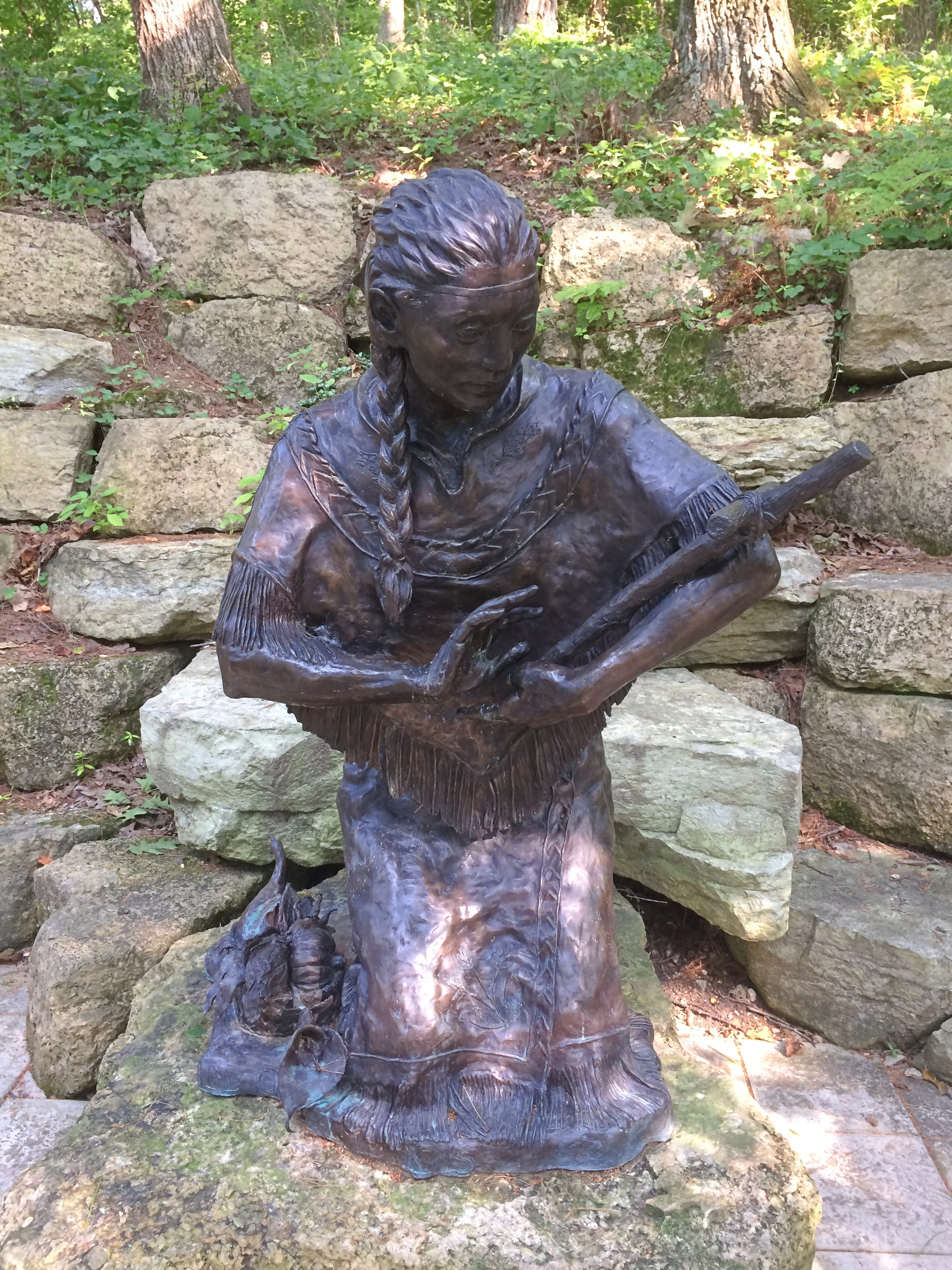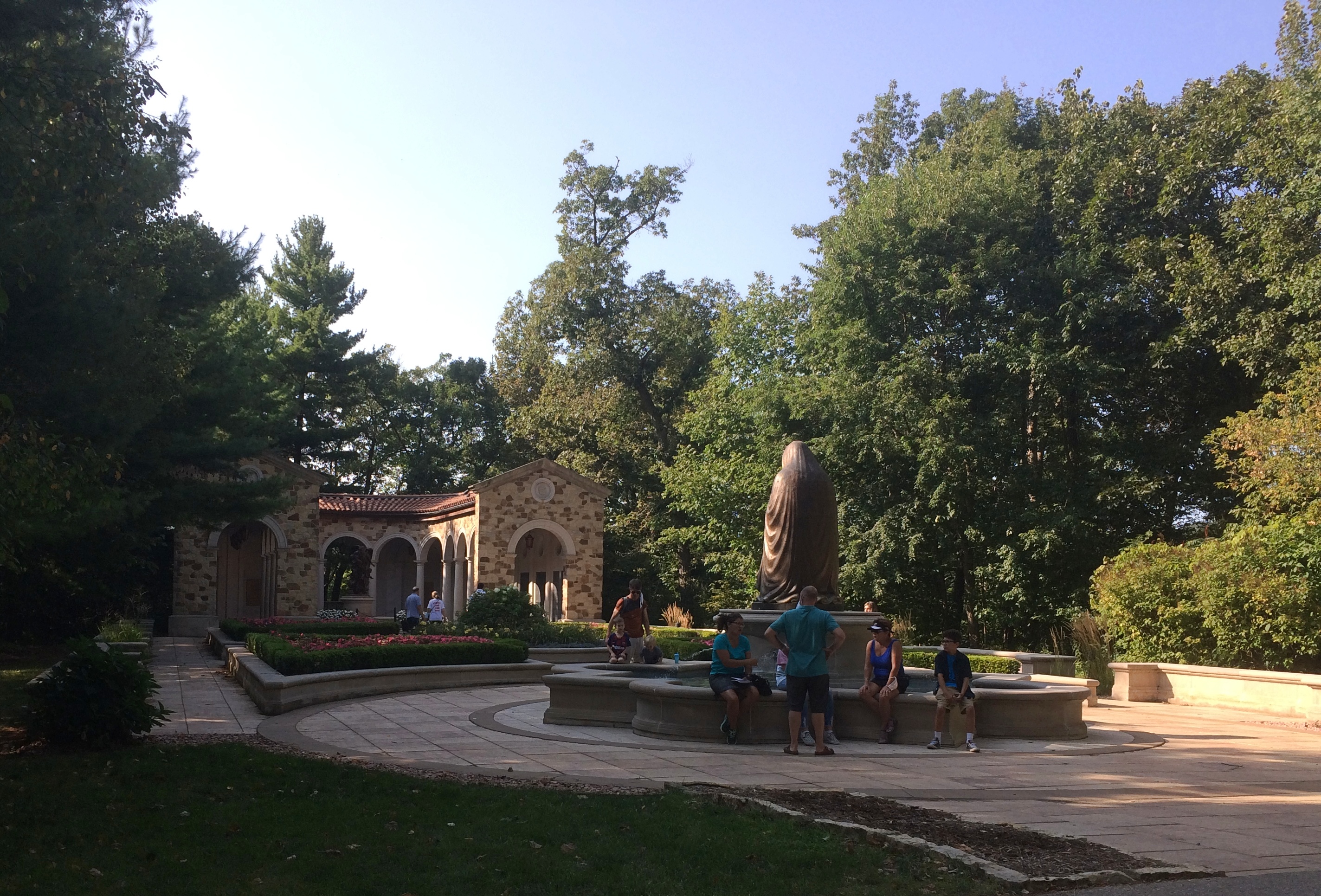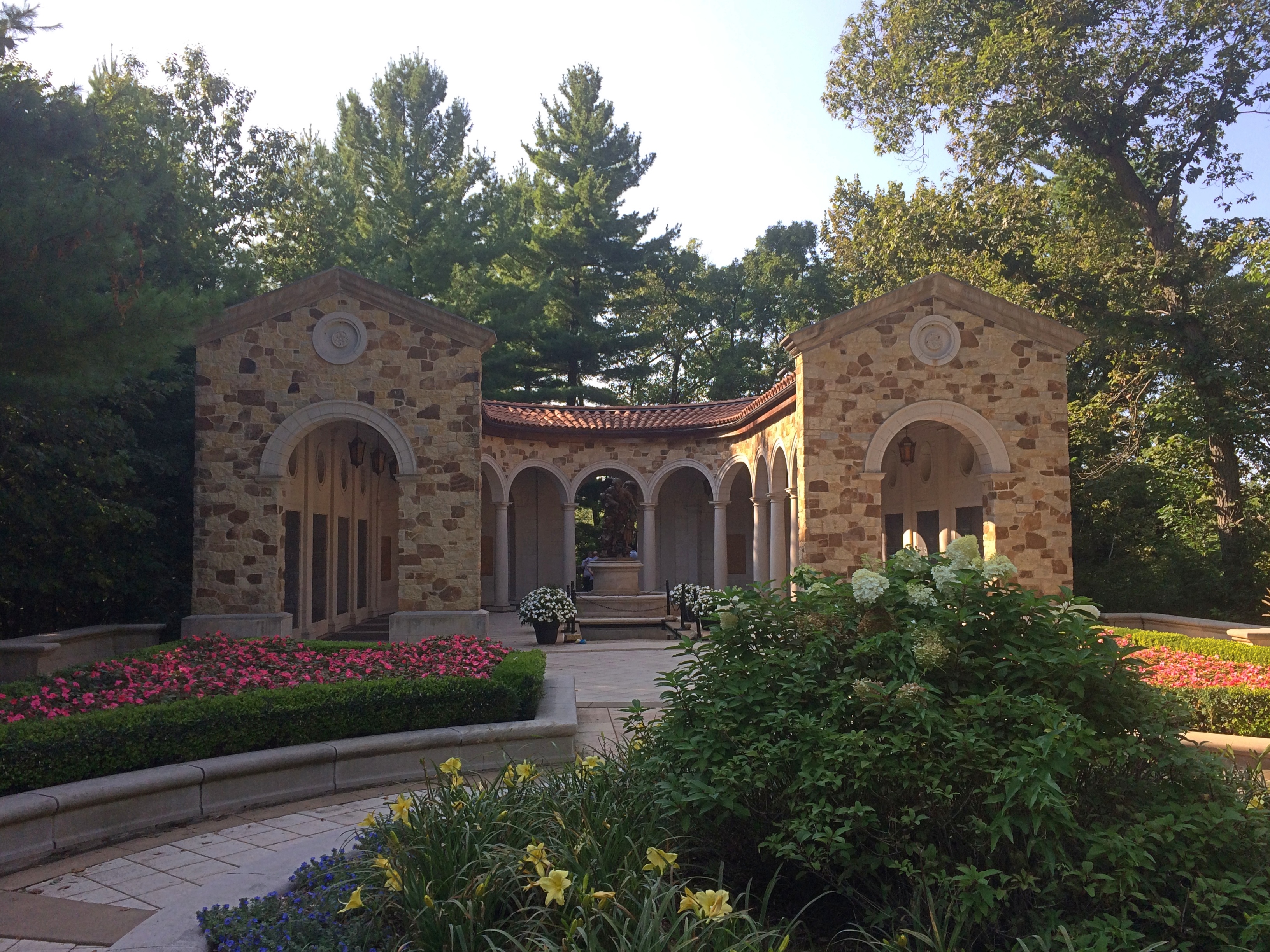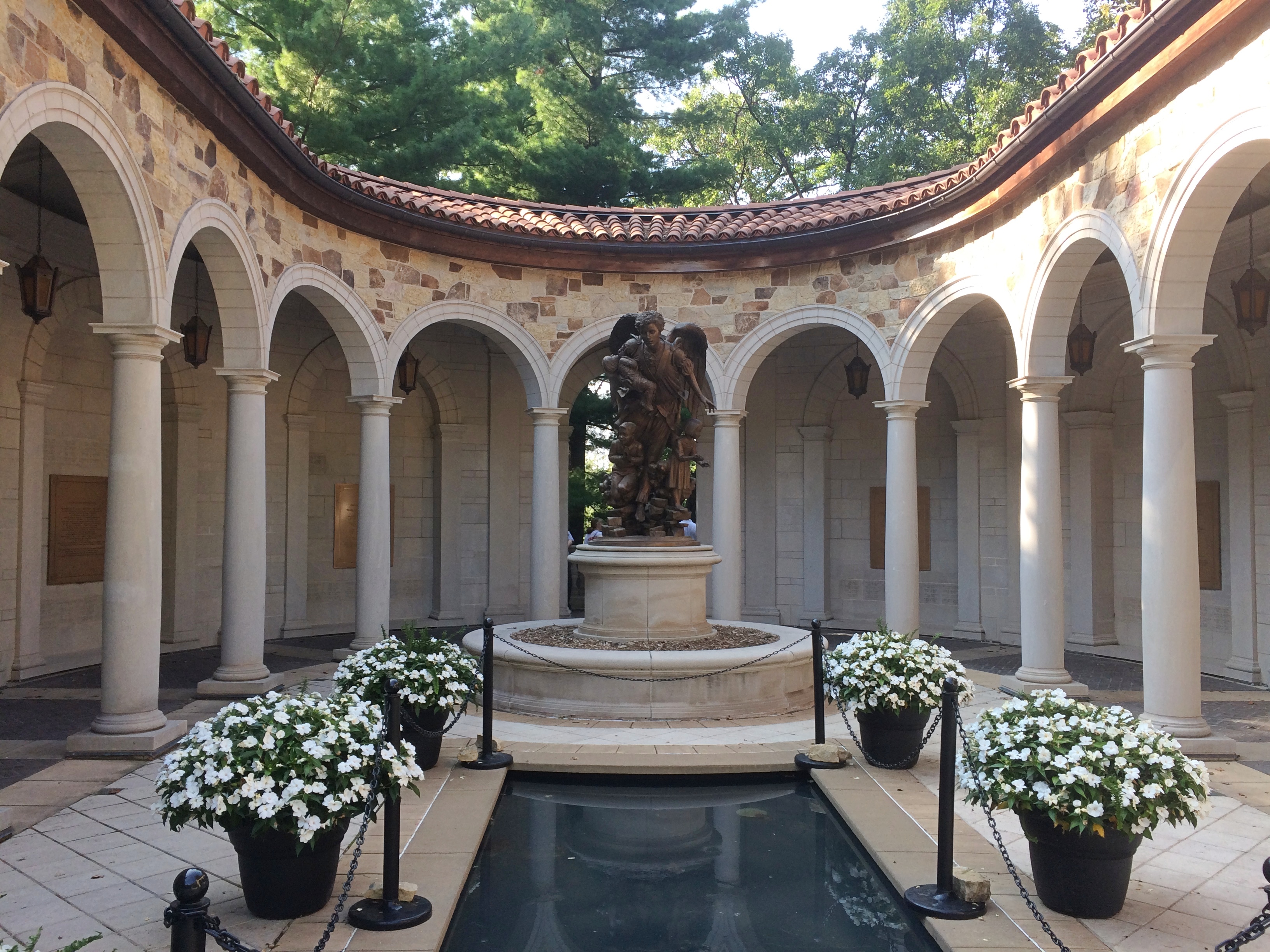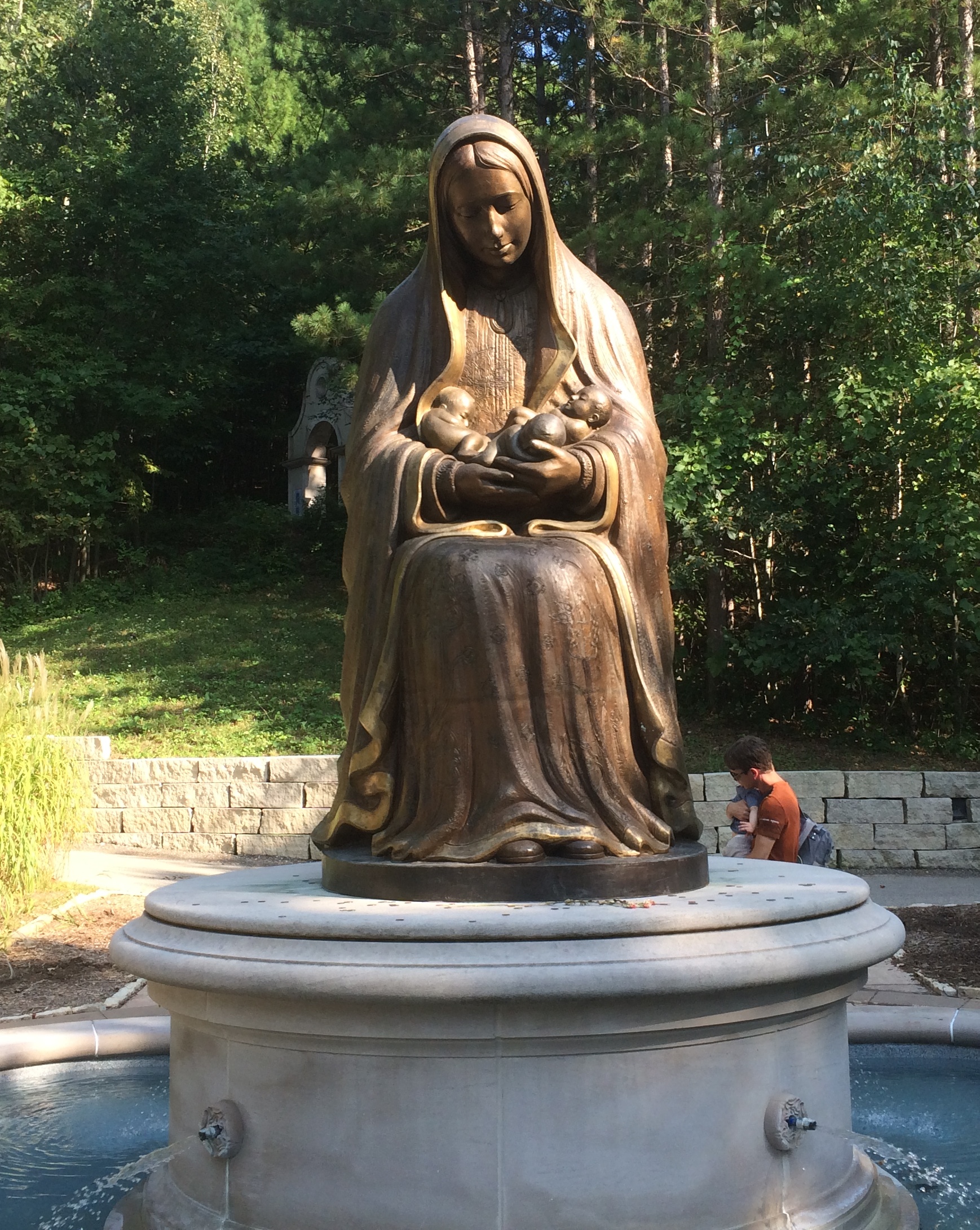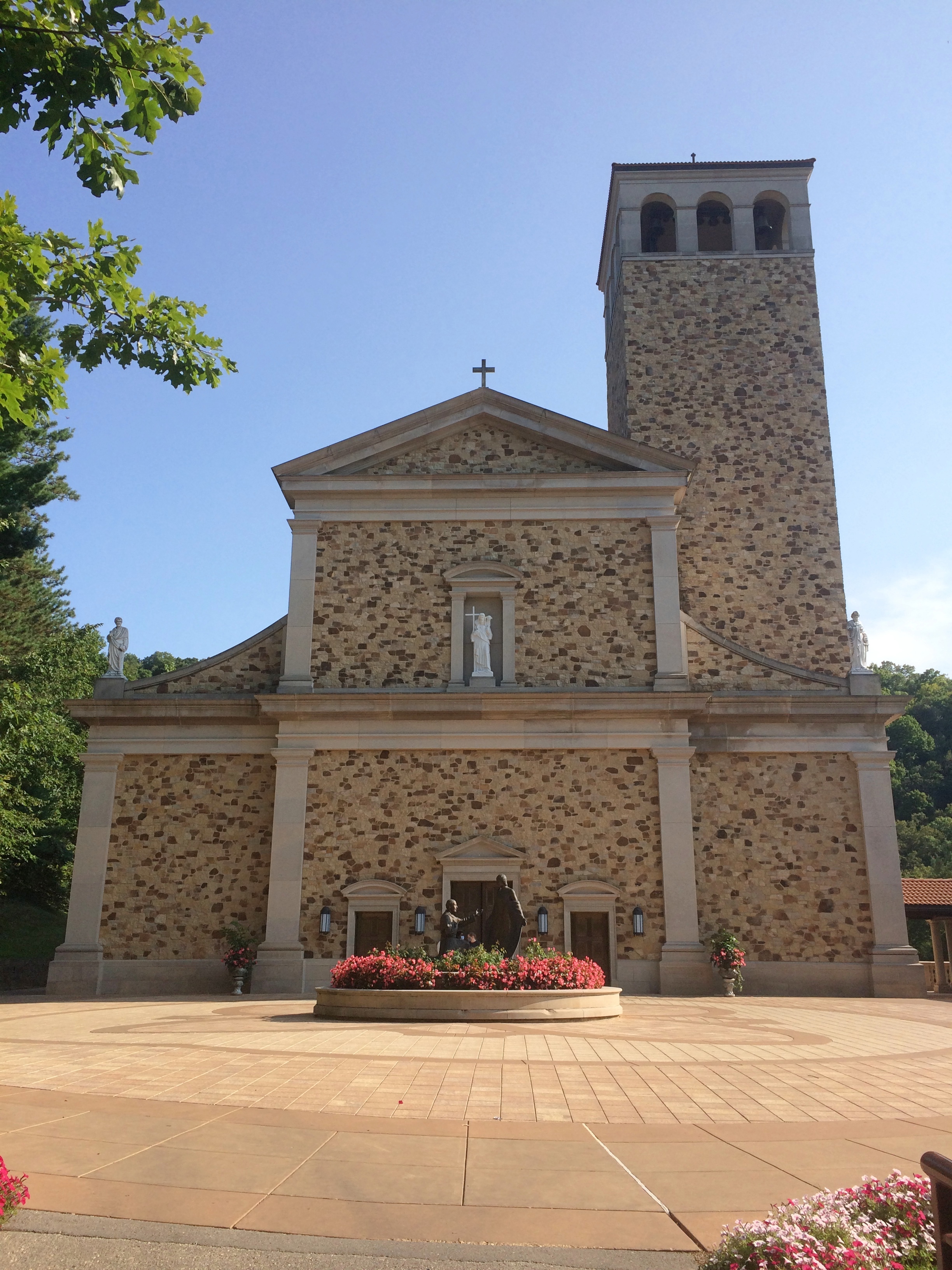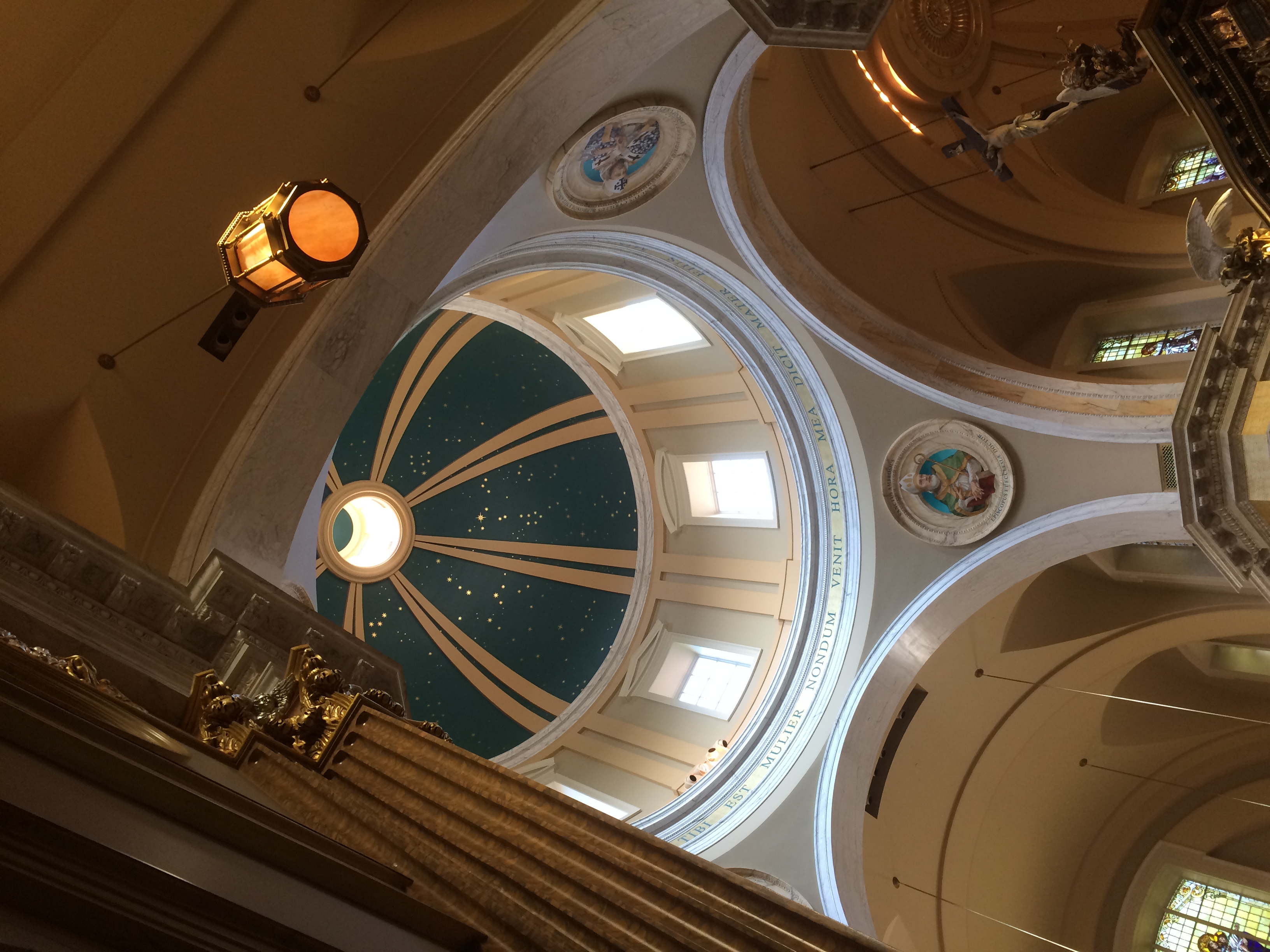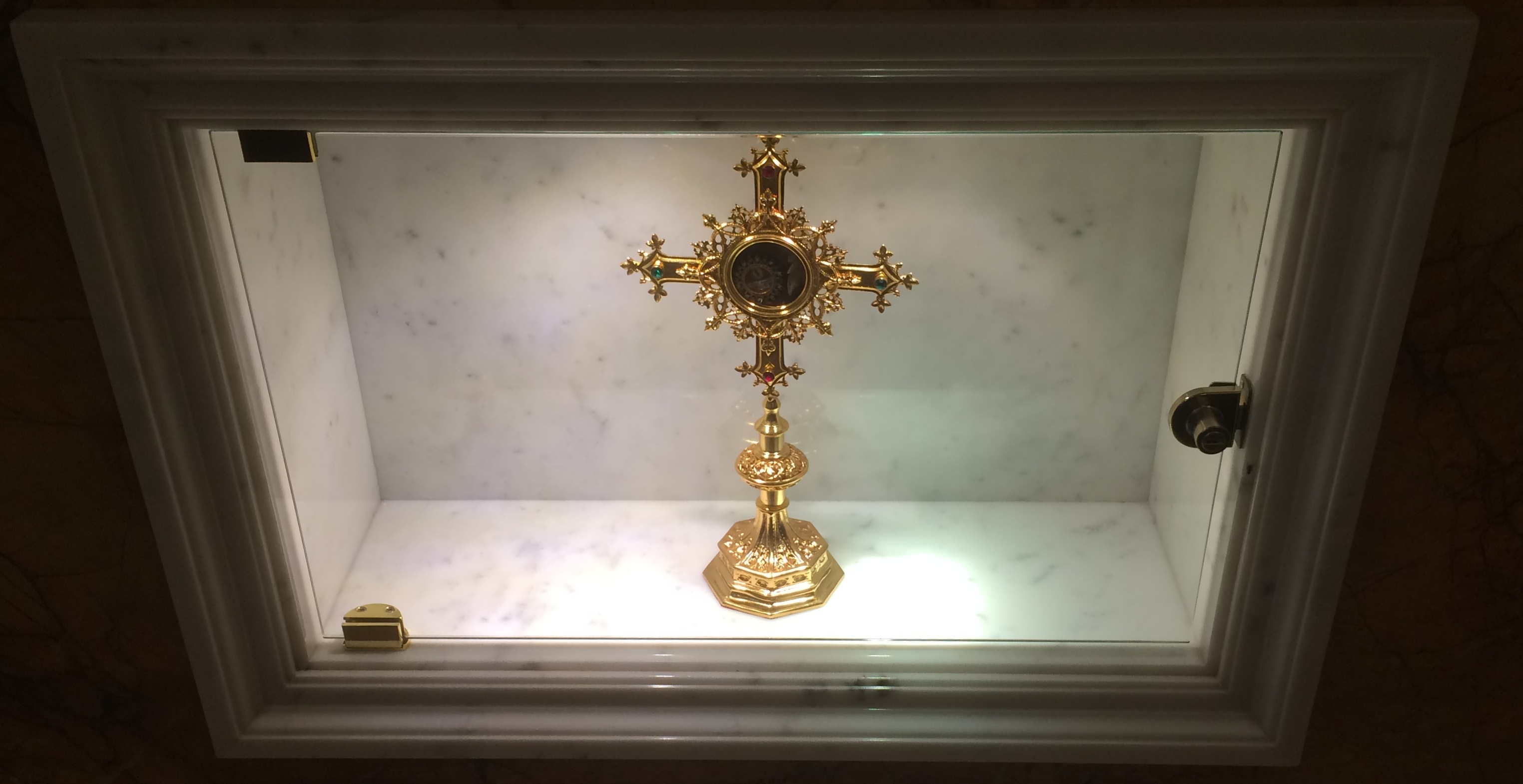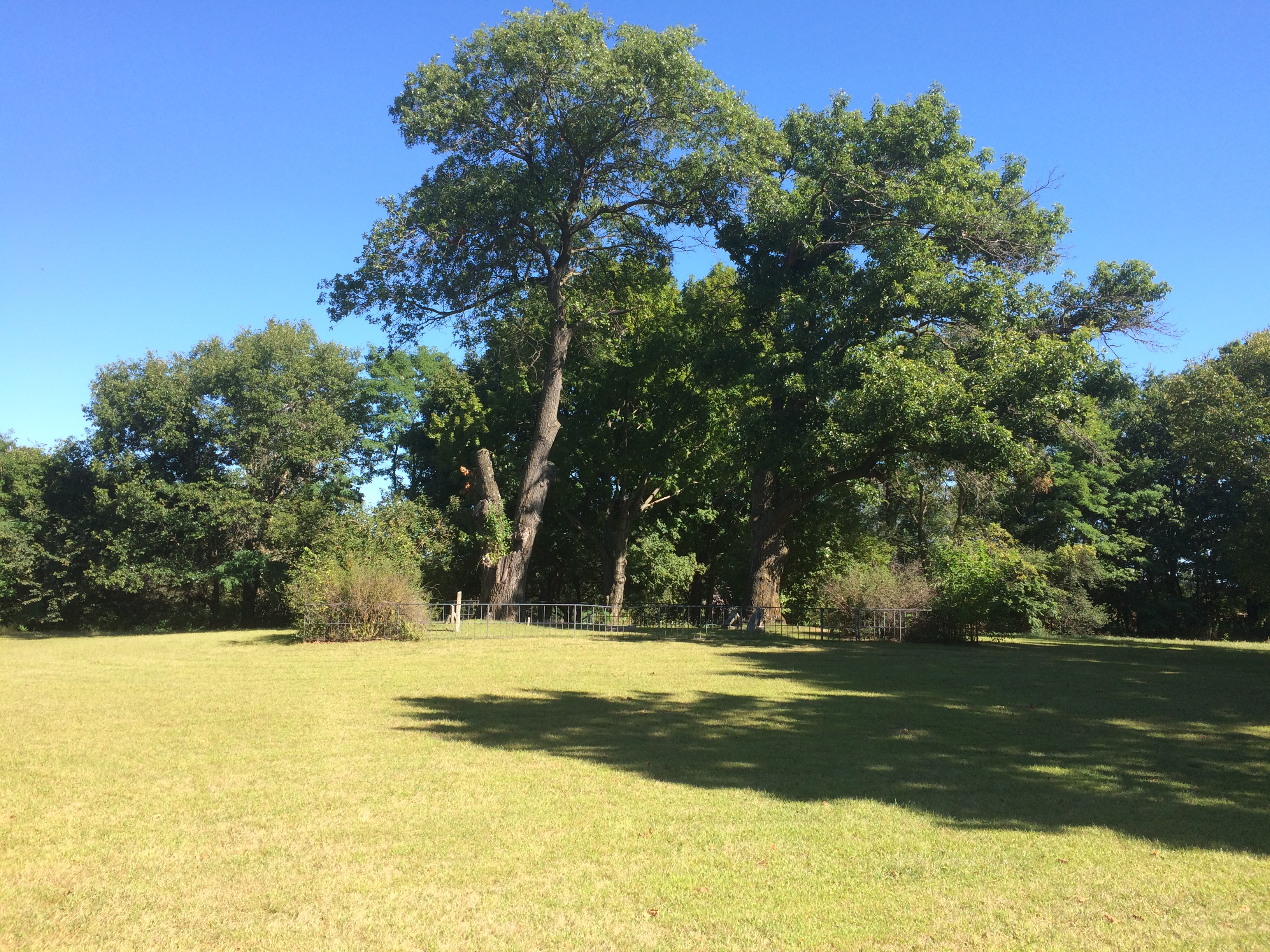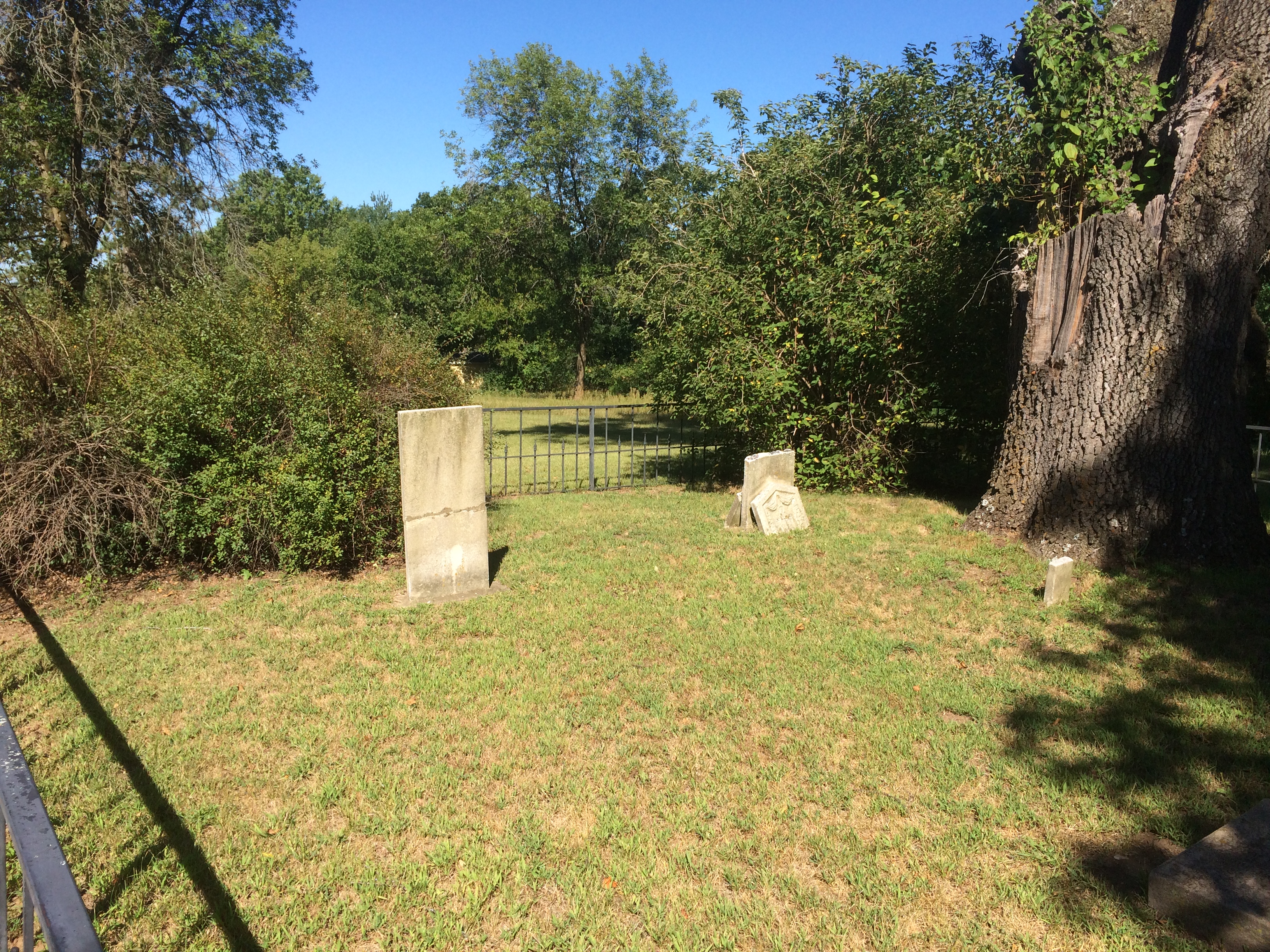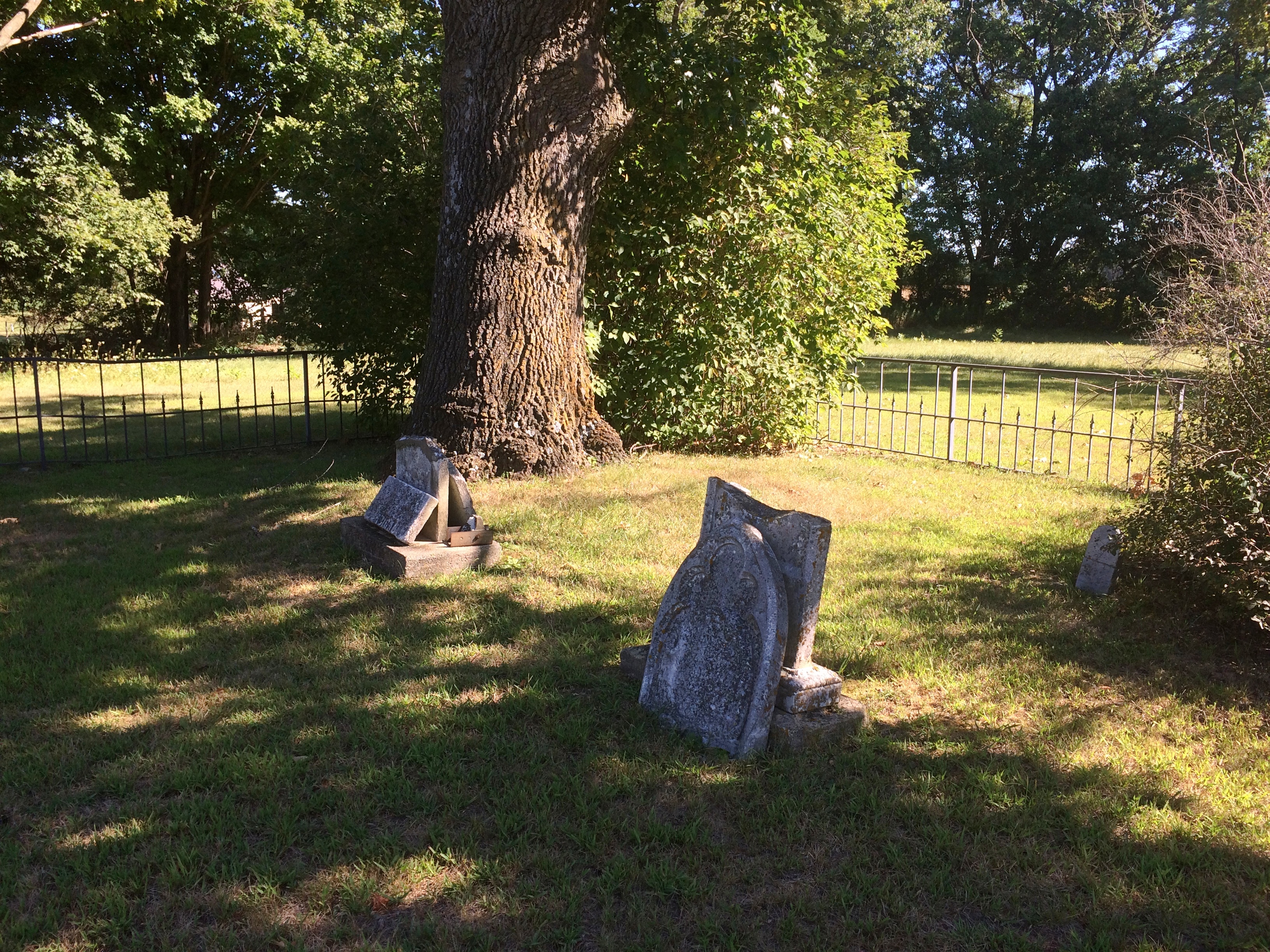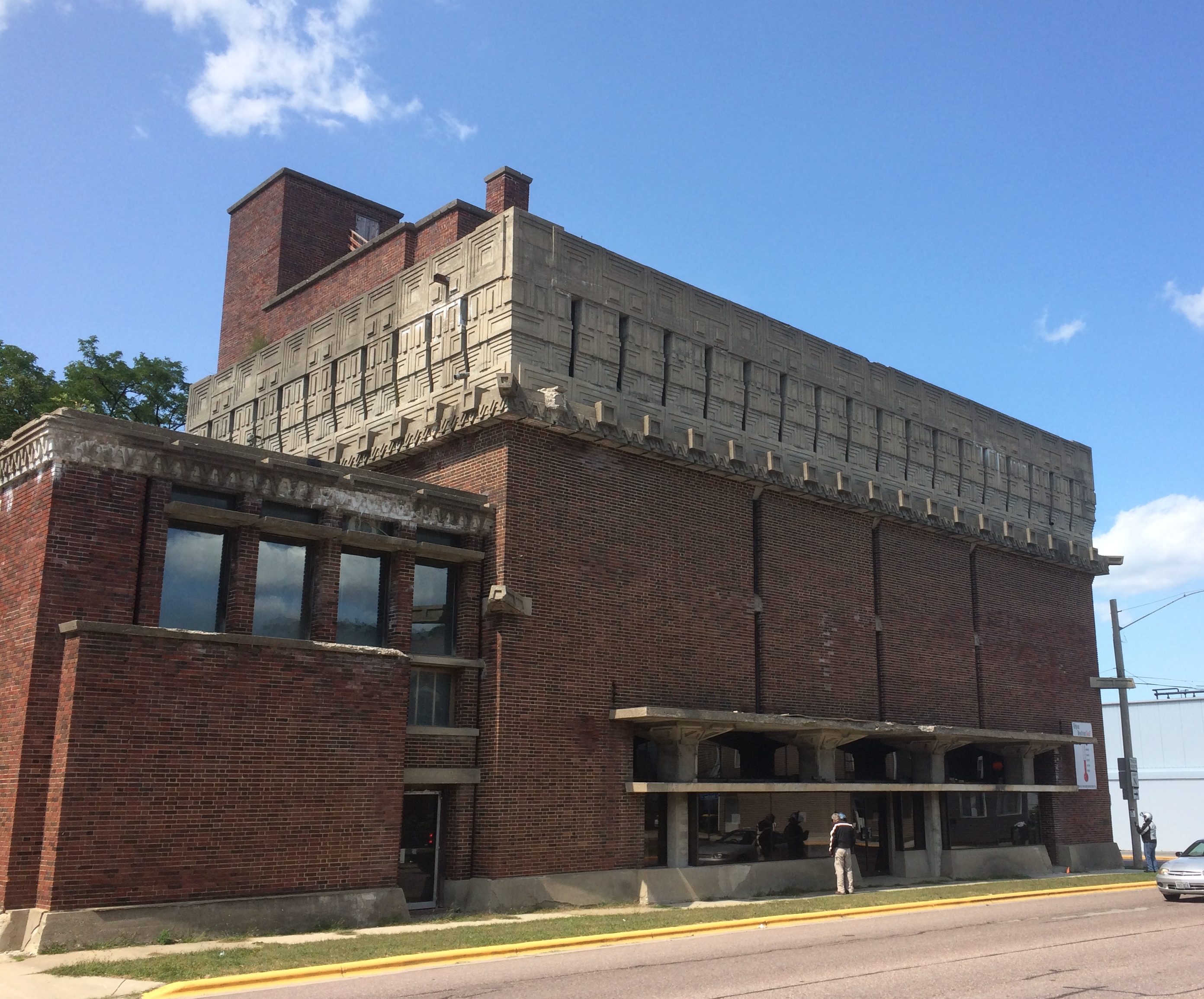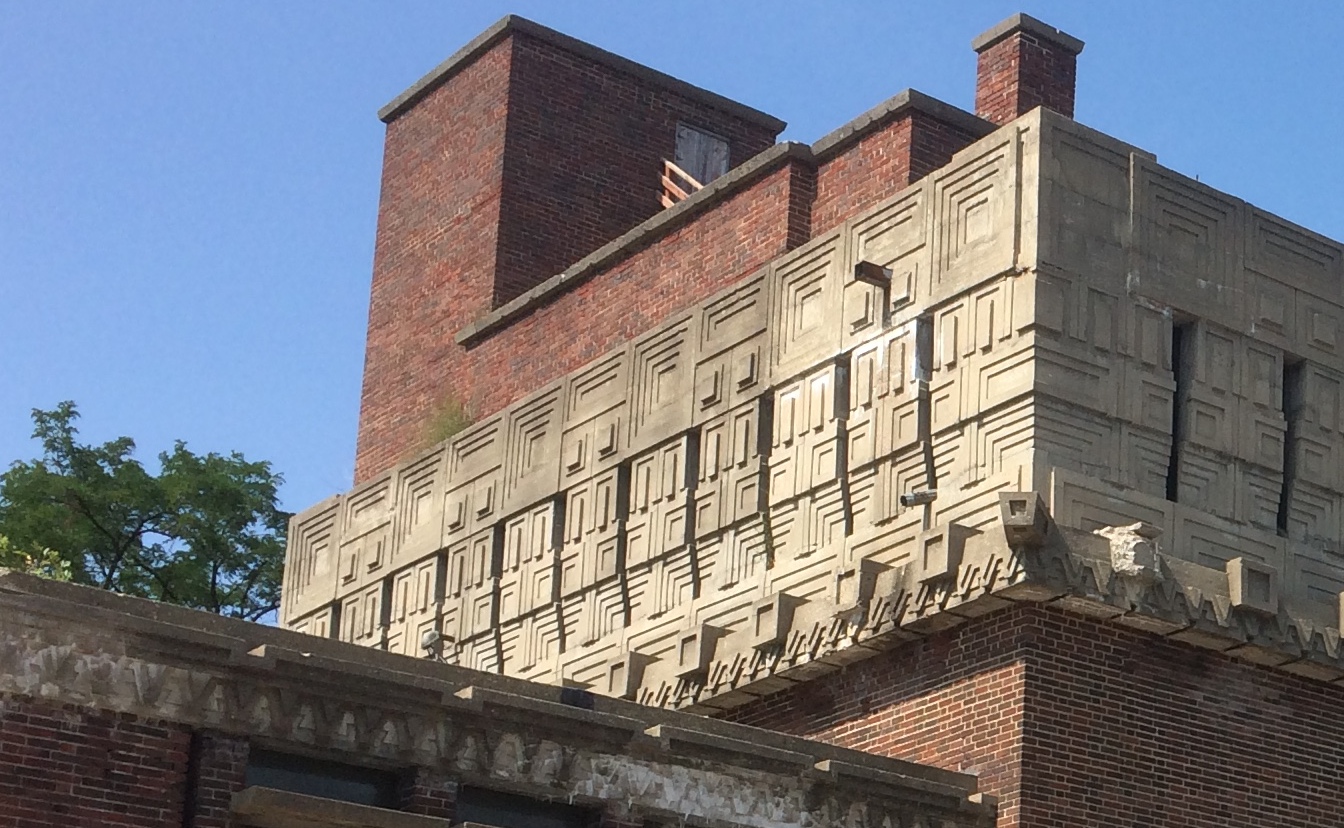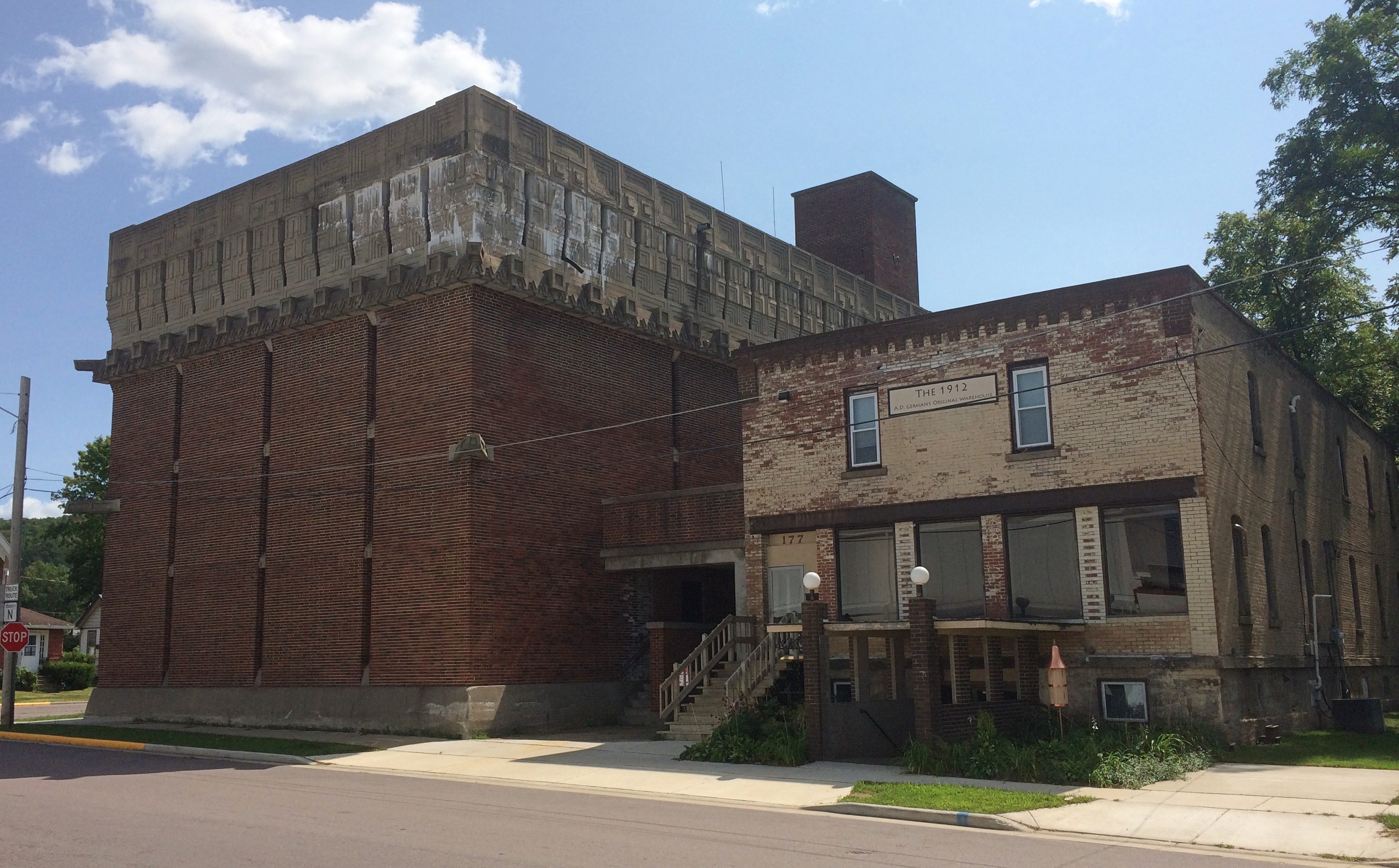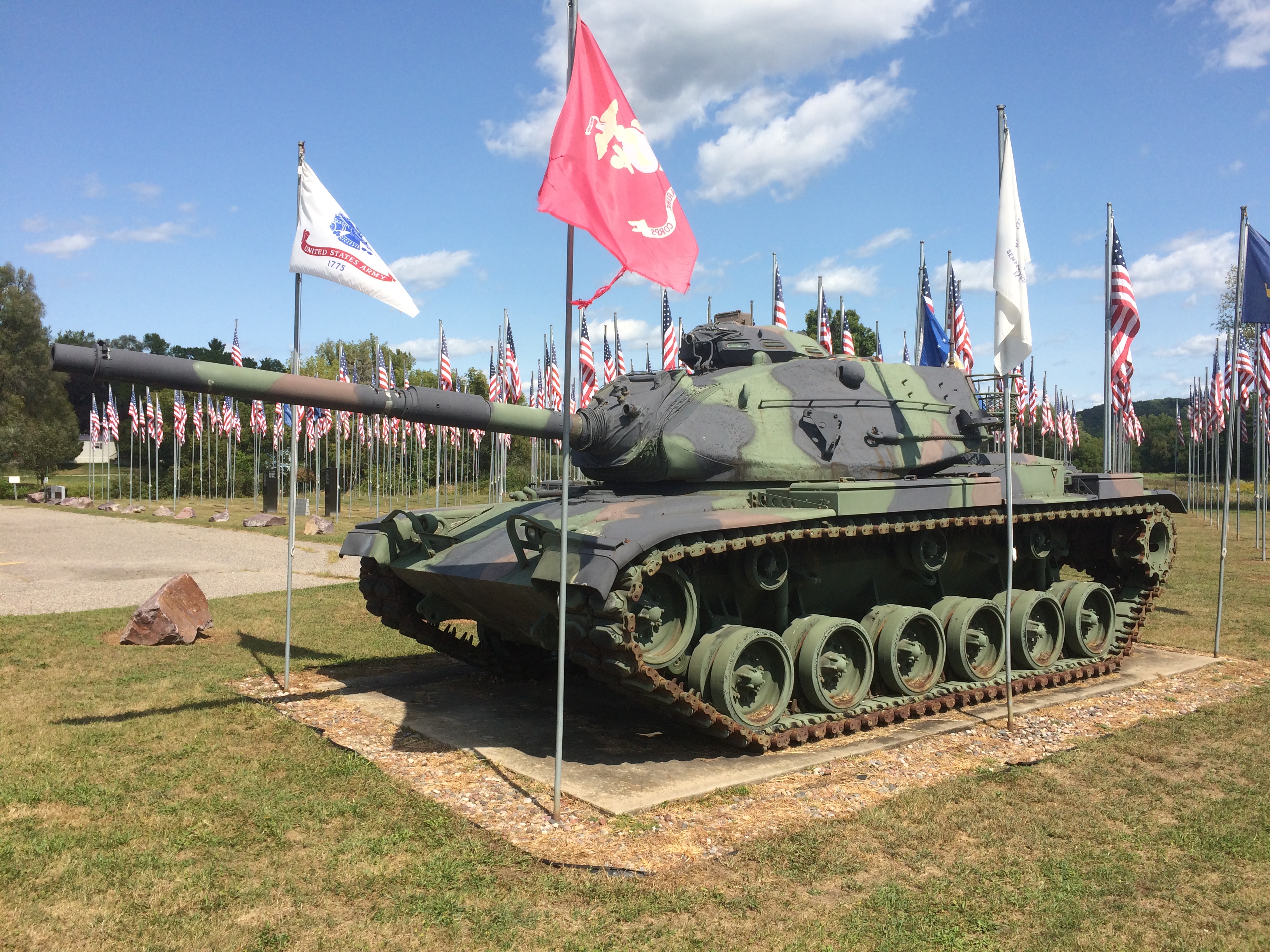Less than 10 miles from Sparta, Wisconsin, along a state highway, is the Paul & Matilda Wegner Grotto County Park, the county being Monroe, whose seat is Sparta. We arrived there early in the afternoon of September 6. Here’s the entrance to the grotto.
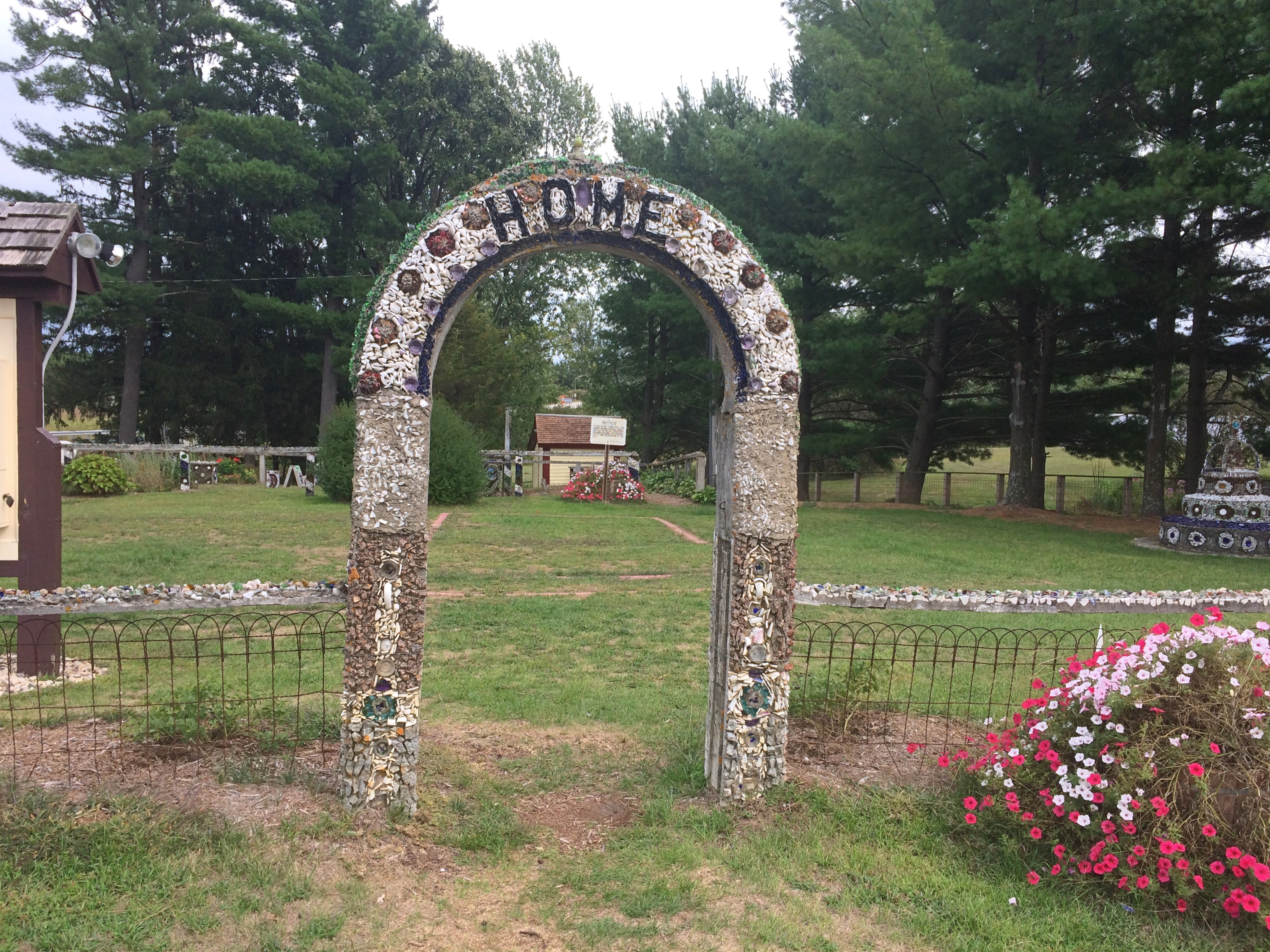 It isn’t a grotto in the sense of being a natural or artificial cave, or any other sense that I know of. Call it a sculpture garden? The Wegners didn’t sculpt, except in the sense of creating distinct three-dimensional shapes from raw materials. Anyway, the grounds feature naïve works created by German immigrant farmers, mostly made of concrete and shards of glass and other shiny bits.
It isn’t a grotto in the sense of being a natural or artificial cave, or any other sense that I know of. Call it a sculpture garden? The Wegners didn’t sculpt, except in the sense of creating distinct three-dimensional shapes from raw materials. Anyway, the grounds feature naïve works created by German immigrant farmers, mostly made of concrete and shards of glass and other shiny bits.
Note the texture of one of their works up close. Look but don’t touch, unless you want a wound.
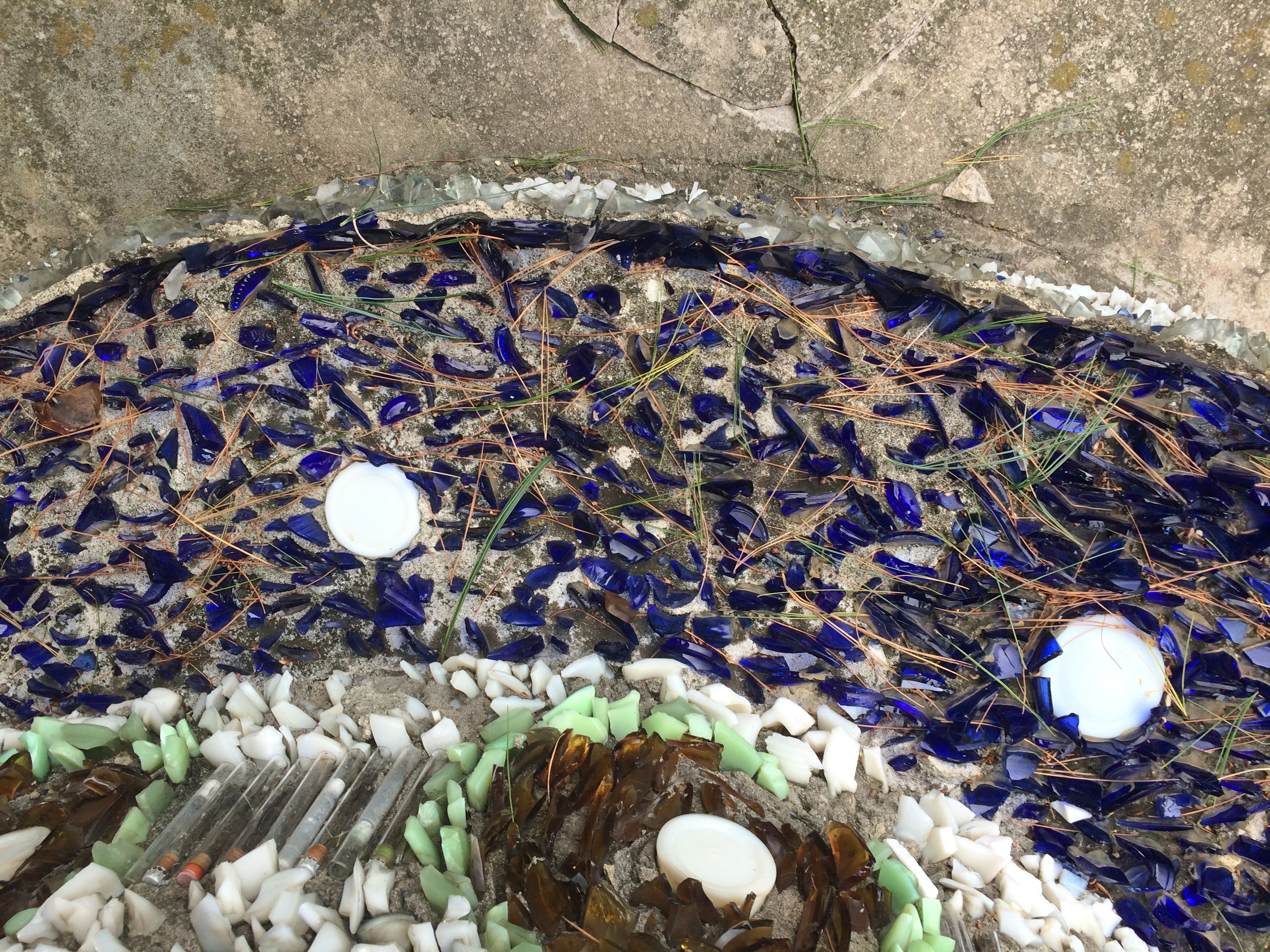 The Kohler Foundation tells the story: “In the summer of 1929 on their farm, [the Wegners] began building fences, and within a year their first sculpture: a twelve-foot concrete facsimile of the celebrated Bremen ocean liner.
The Kohler Foundation tells the story: “In the summer of 1929 on their farm, [the Wegners] began building fences, and within a year their first sculpture: a twelve-foot concrete facsimile of the celebrated Bremen ocean liner.
“The building continued from 1929 until after 1936, primarily during the summer months; however, many pieces, including the walls of the church, were created in Bangor [Wis.] during the winter and then transported to the farm for installation. The extraordinary sculpture environment slowly grew over these years to include a fanciful American flag, a giant reproduction of the Wegners’ 50th anniversary cake, and a glass-encrusted birdhouse.
“Other constructions were religious in nature. The magnificent Prayer Garden, Glass Church, and Peace Monument once served as places for quiet reflection, wedding ceremonies, public preaching, family picnics, and community gatherings. Still surrounding the yard is an ornate fence with a concrete archway, which spells out the word ‘Home’ in crushed black glass.”
Here’s the Bremen, inspired by a postcard picture.
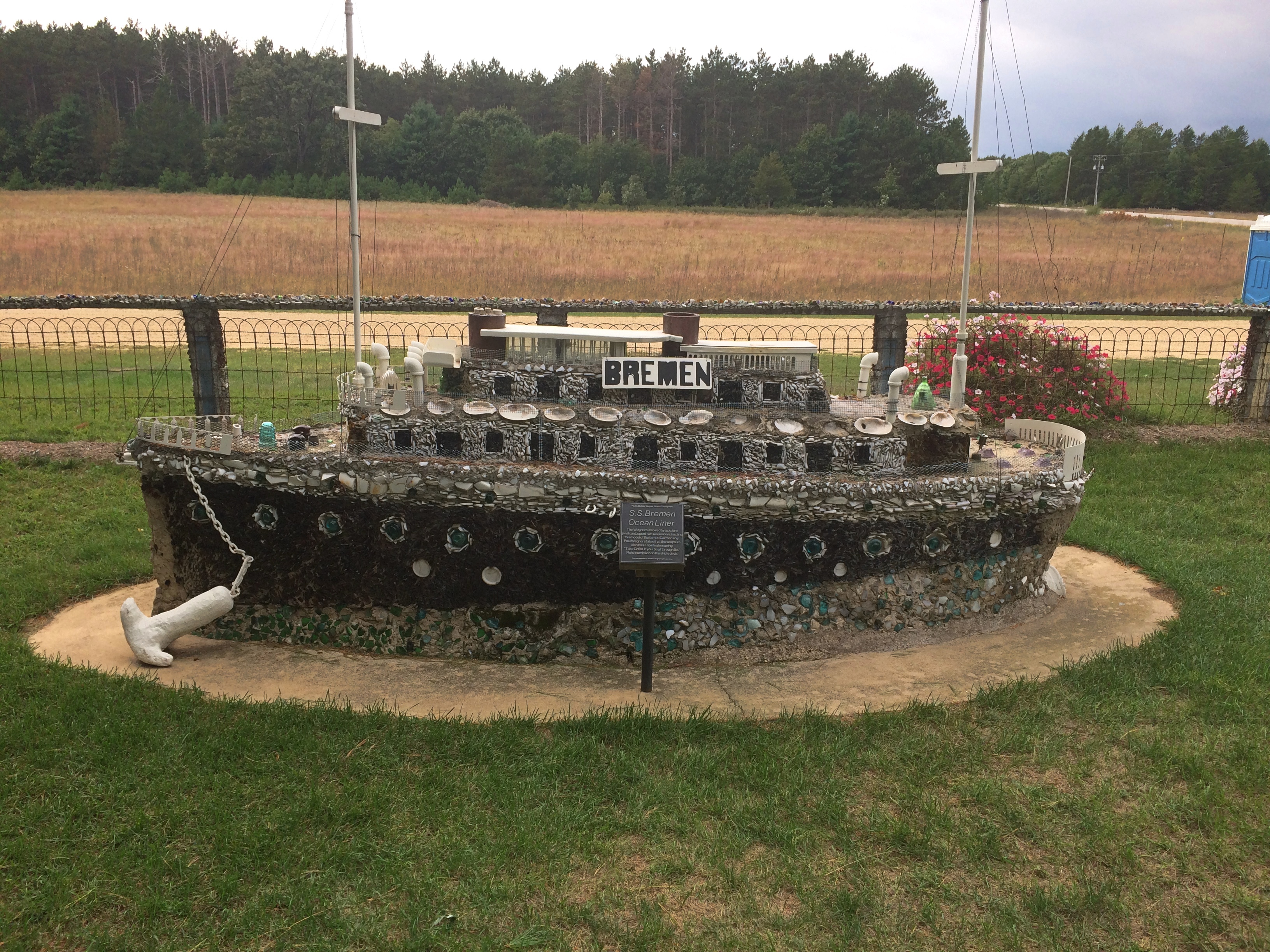 The Glass Church.
The Glass Church.
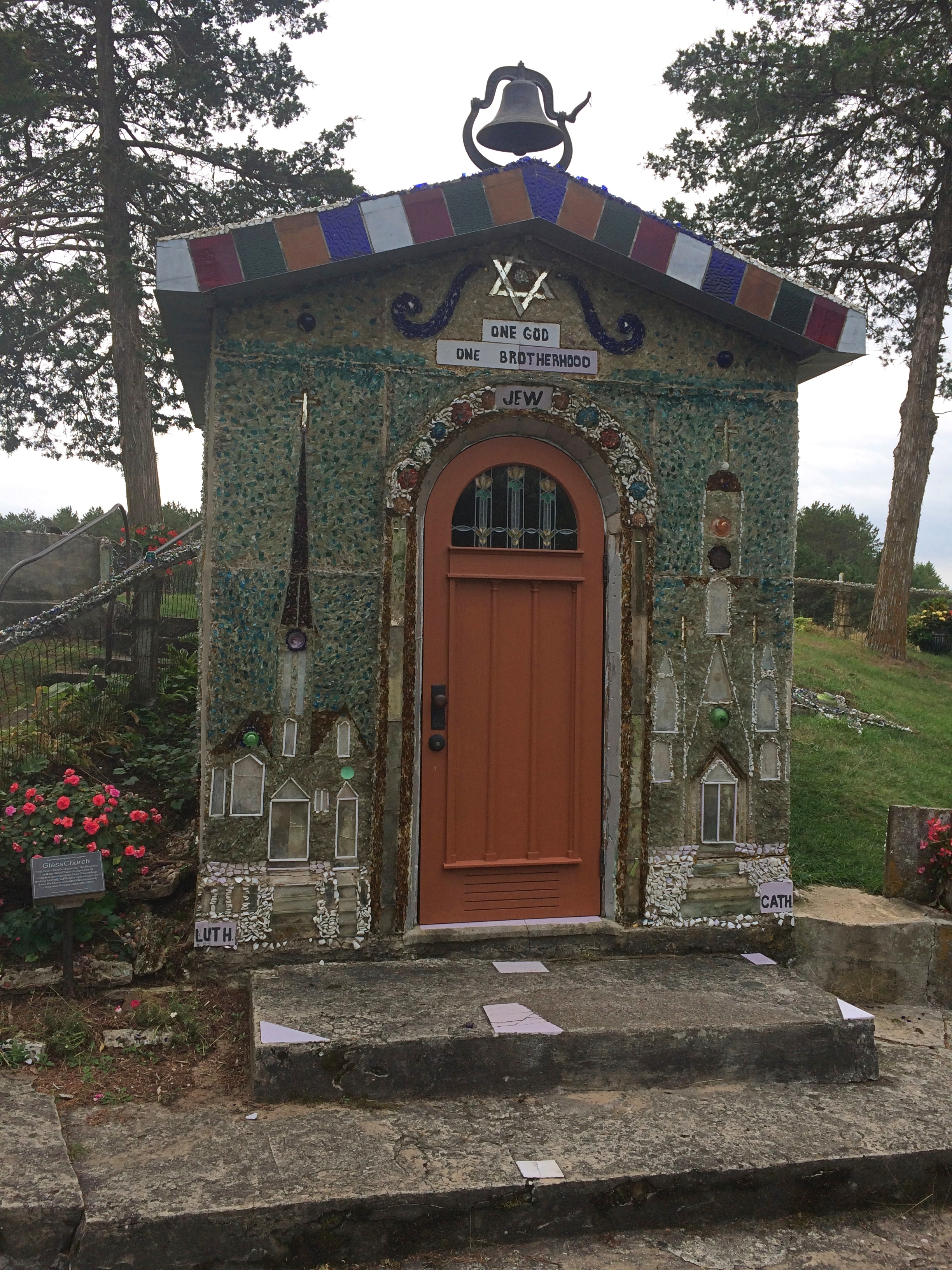 People get married there from time to time, according to the plaque (in front of the structure would be my guess), and Paul Wegner’s funeral was held there as well. The back of the Glass Church:
People get married there from time to time, according to the plaque (in front of the structure would be my guess), and Paul Wegner’s funeral was held there as well. The back of the Glass Church:
 More structures. First is “Jabob’s Well.”
More structures. First is “Jabob’s Well.”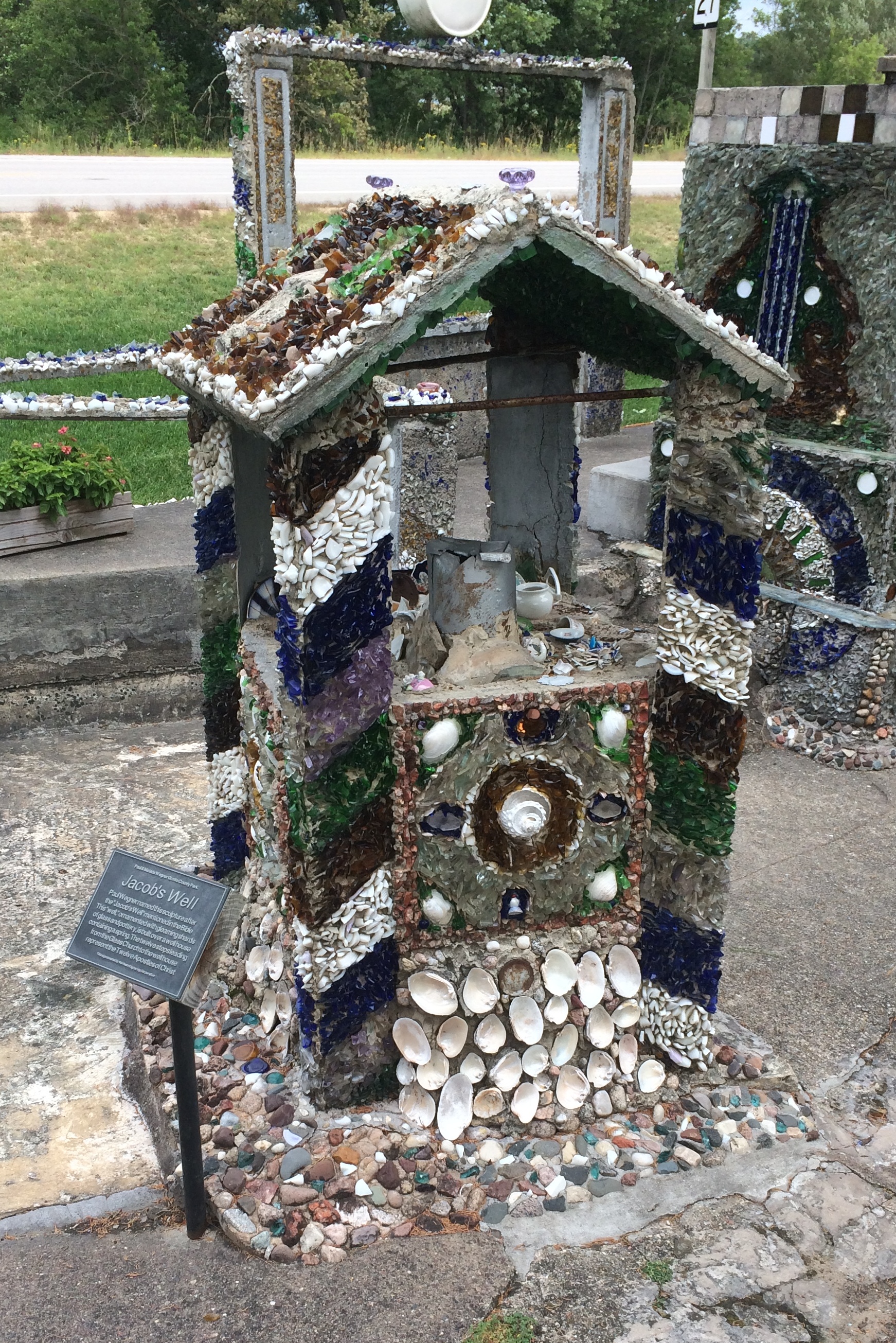
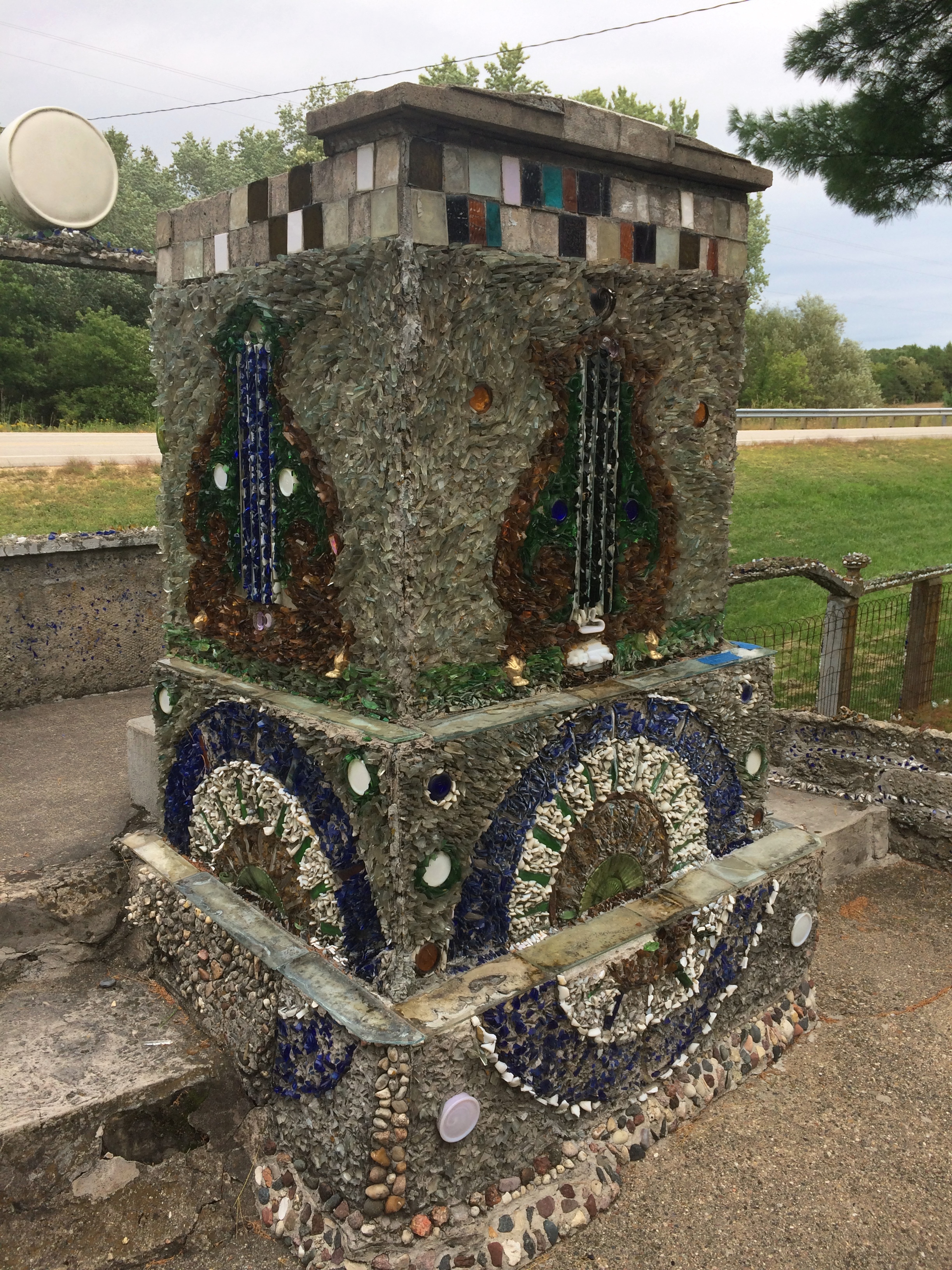
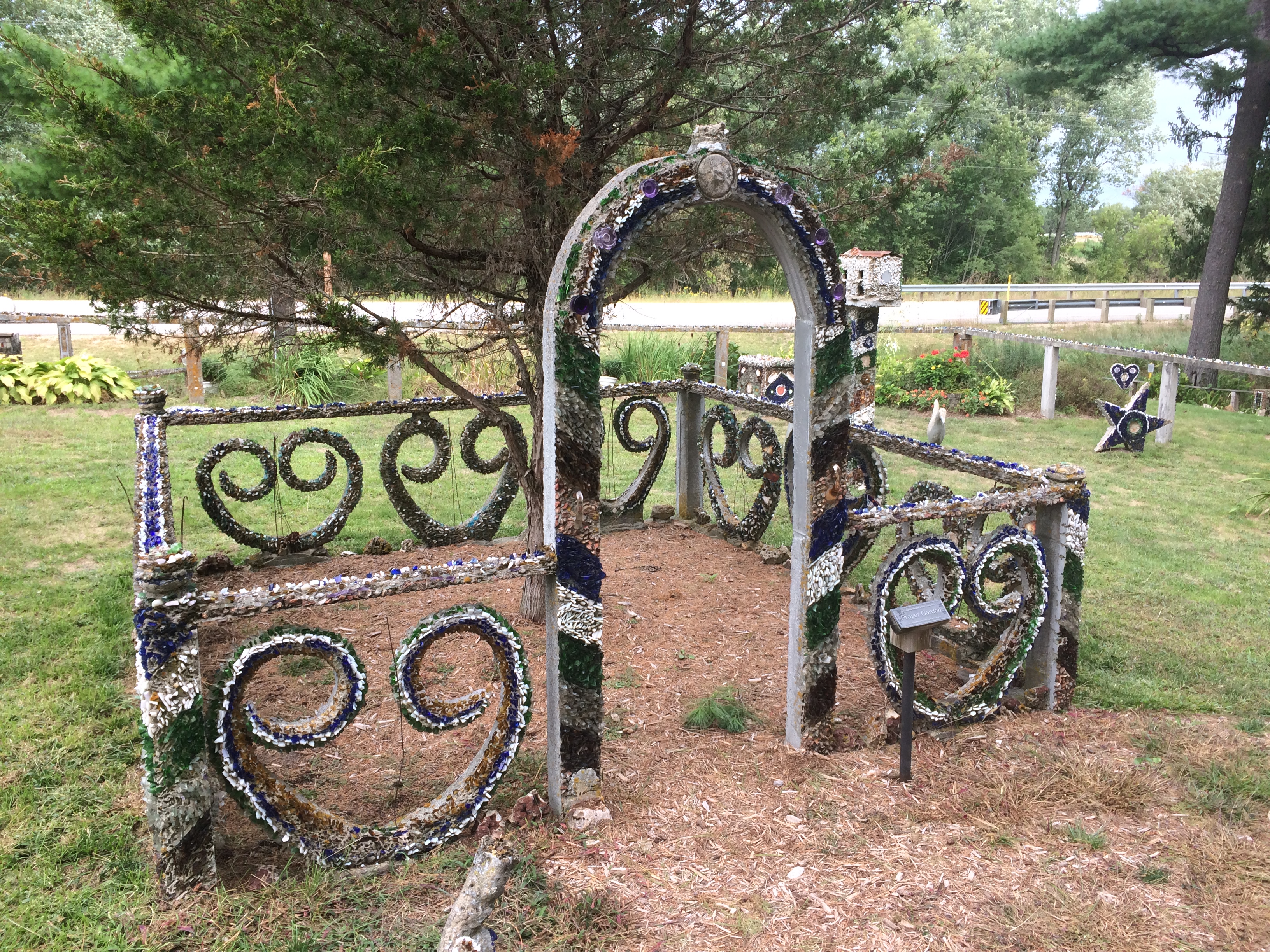
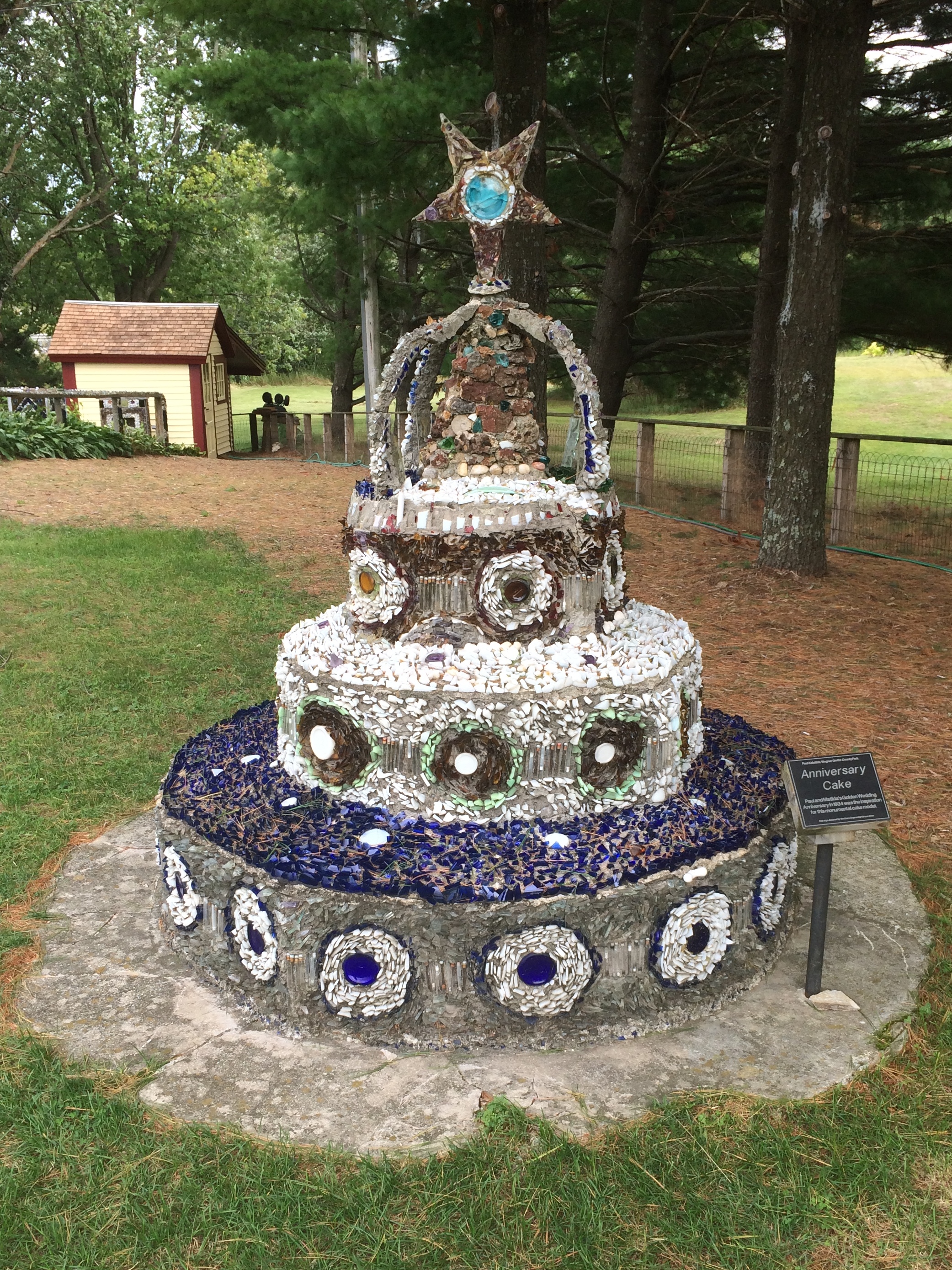 A sign outside the grotto said that a cemetery with glass-and-stone memorials wasn’t far away. So it was: a spare little rural cemetery.
A sign outside the grotto said that a cemetery with glass-and-stone memorials wasn’t far away. So it was: a spare little rural cemetery.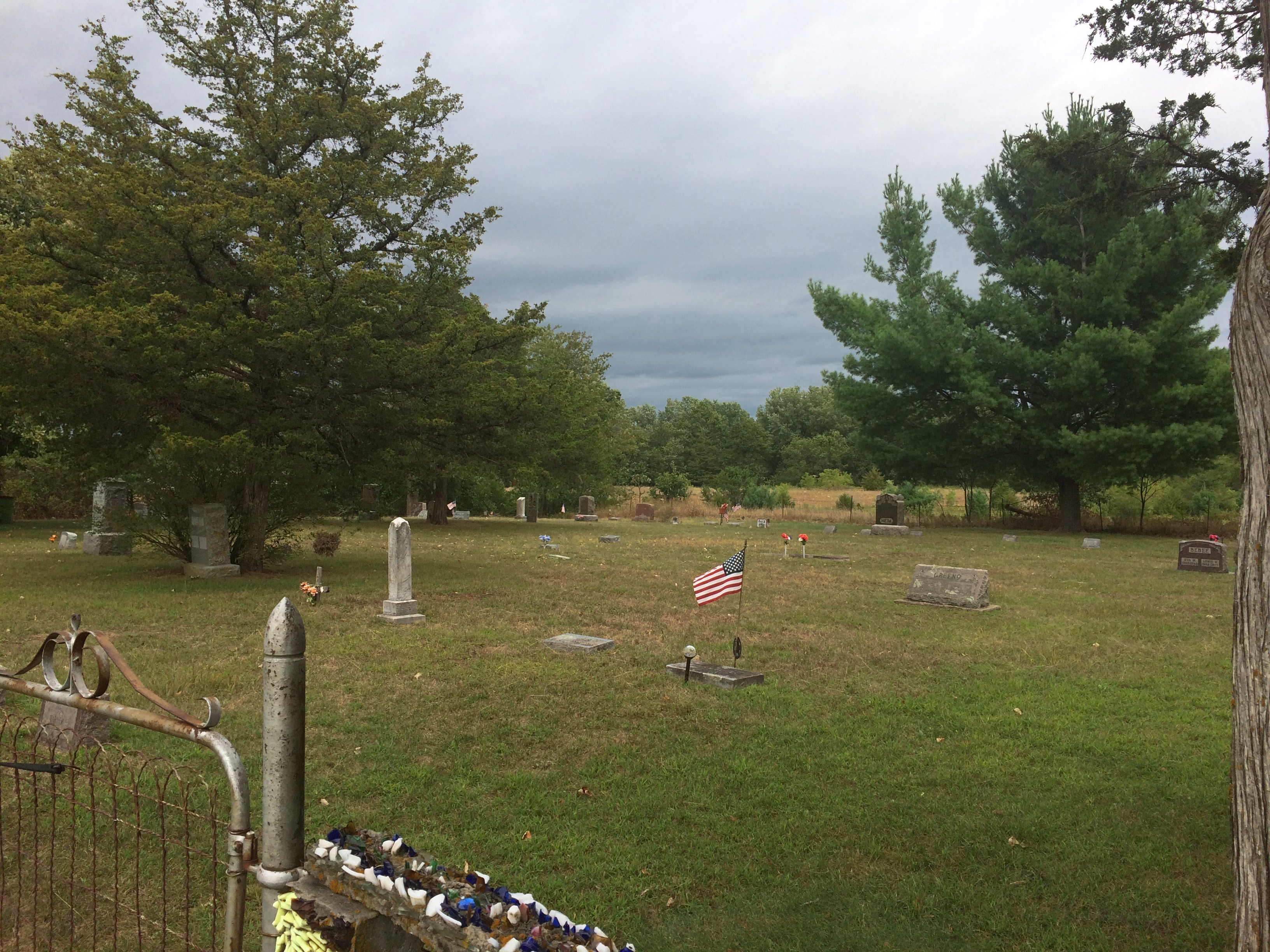
Glass is part of the Wegners’ memorial.
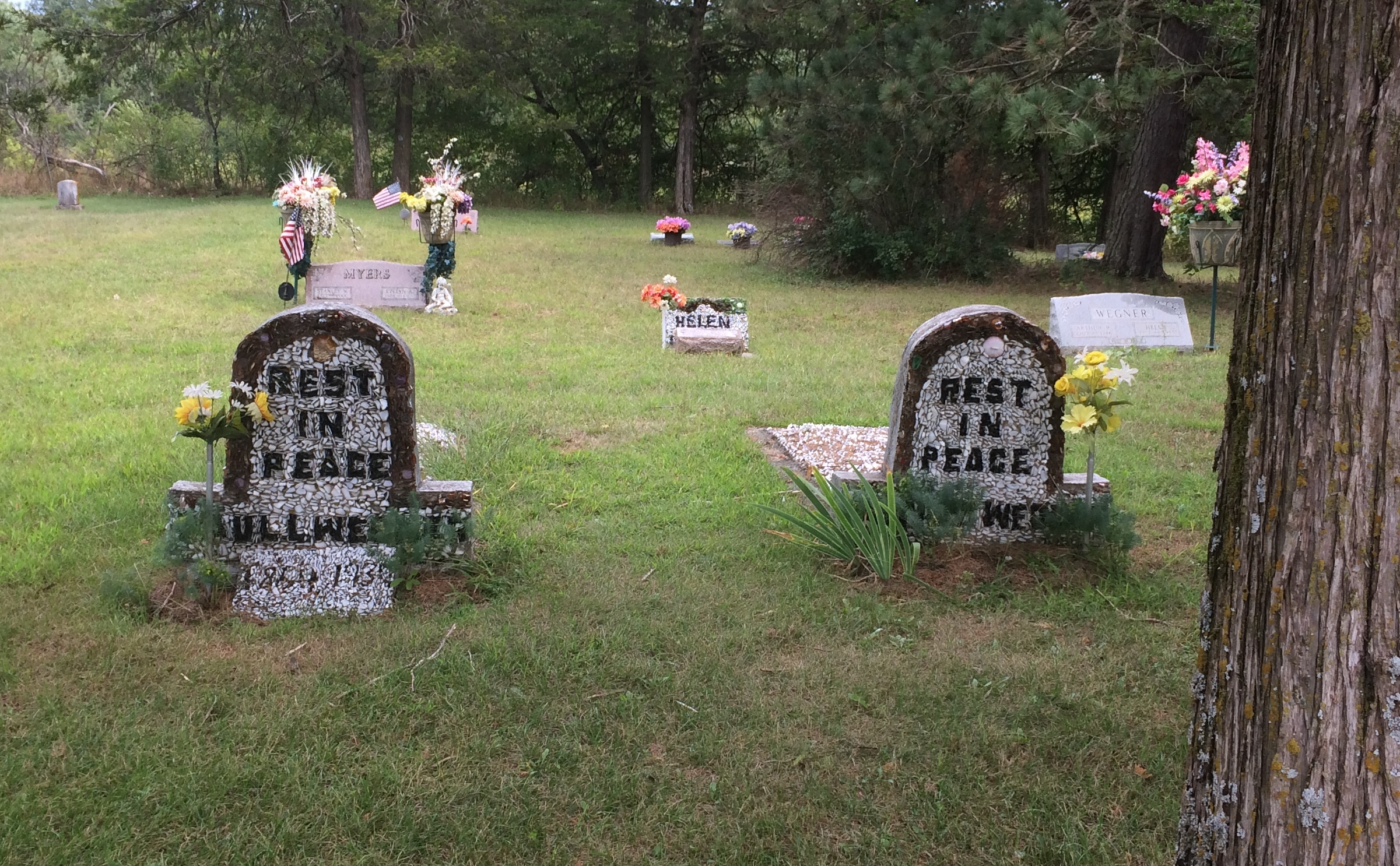 Along with a few others. Guess they liked the style.
Along with a few others. Guess they liked the style.
 What does the Kohler Foundation have to do with the site where old German farmers deciding to create glass-and-stone shapes? Kohler is plumbing money and based in Wisconsin. At some point in its existence, the foundation decided to find and preserve outsider art installations such as the Wegner Grotto which, in fact, was one of its conservation projects.
What does the Kohler Foundation have to do with the site where old German farmers deciding to create glass-and-stone shapes? Kohler is plumbing money and based in Wisconsin. At some point in its existence, the foundation decided to find and preserve outsider art installations such as the Wegner Grotto which, in fact, was one of its conservation projects.
“Since the late 1970s, the preservation of folk architecture and art environments has been a major thrust of Kohler Foundation,” the foundation explains, including a list of sites on the page. Many but not all are in Wisconsin.
“After a site has been either acquired by or gifted to us, local and expert partners selected by Kohler Foundation employ museum-quality conservation techniques to preserve the site. The site is then gifted to a museum, municipality, university, or other nonprofit institution for the education and enjoyment of the public. We then work with the recipient and local community to ensure the future success of the project.”
